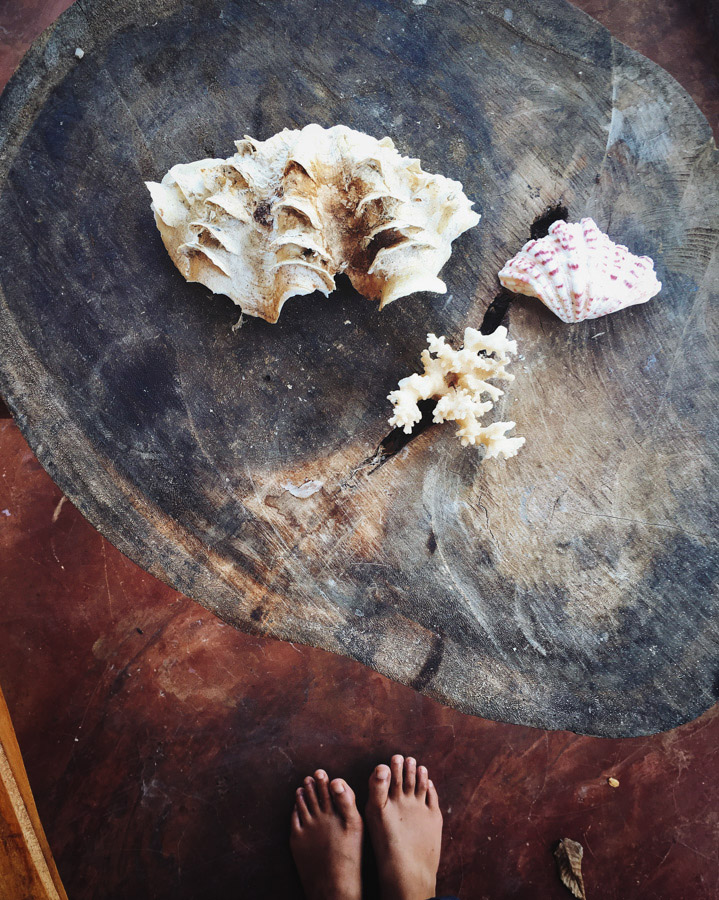Ray LaMontagne - You Are the Best Thing
It is with eagerness and some anxiety that we fly to Coron, Palawan. Our feelings are troubled because this is when the real trip starts. Madie’s dad has been with us on the first leg of our year-long travel and it is now time to say good-bye to him. We split ways on an early morning after a 10-hour overnight bus from Vigan to Manila, 3-4 hours of sleep, and a breakfast at Jollibee (with surprisingly good pancakes). I watch them both and pleasantly bet on which one will tear up first - it might have been me.
The diving scene convinced us to go to Palawan, a province southwest of Manila and part of the Mimaropa region, stretching as far as Borneo on the west. The province is named after its biggest island (Palawan) and was recently elected one of the most beautiful islands in the world. Its capital, Puerto Princesa, is famous for the underground river, a UNESCO World Heritage site. El Nido, a now popular resort town for its beaches, is a 6-hour bus ride from Puerto Princesa. But as we learned in Sagada, Madie and I seem to have a knack for avoiding the UNESCO sites. No offense to what the organization is trying to accomplish, but we try our best to stay off the beaten path. We find that we’re much happier not surrounded by tourists in a small boat down a river (maybe we won’t be so lucky later, but we’ll see). So instead of the obvious, we decide to go to Busuanga, the province’s northernmost island, and its main town called Coron, known for shipwreck diving. No to El Nido, no to underground rivers and no to another 6-hour bus ride (maybe that was part of it).
As we land in Coron, we get swept away by the sun and heat. I try pretending it doesn’t affect me, (very) white guy that I am, but the climb to the Kaba Kaba guesthouse in the noon sun is enough to give me away - and make me lose a good kilo in sweat. We arrive at the guesthouse and are warmly welcomed by its owner, who shows us our room. We realize quickly the conditions we will be traveling in for a year: a small room in a bungalow, a simple toilet/shower (Philippine-style, with a hand bucket), two twin beds and a fan. It’s not much, but what else would you want for 600 pesos ($12) a night? There’s no TV (of course), but instead a hologram image of dolphins jumping in a bay. The artwork could entertain me for a good minute, so I decide to keep it for later and not look at it too long. One more crucial component to our stay: the mosquito nets, which will protect us a couple nights later when our room is suddenly swarmed by flying ants for no good reason, apart from our own stupidity in turning on the light inside at sunset with the door open (we were saved then by repelling coil and our good friend the gecko, for what was probably his best meal of the year).
I have a half smile on my face; I'm a little giggly. That’s because I realize that this is more or less what we’ll have for a year. We left our apartment in Noe Valley, our jobs (or should I say mine since she could do her’s anywhere), our comfortable daily life in one of the best cities in the world, our car, Netflix - we left all of this for this humble roof and comfort. And I’m happy because I know we made the right choice (and I hope then, she is too) because it's just enough comfort to feel home. So we settle and I get a few minutes to look outside on the porch. A family of monkeys climbs the next tree, and I hear the song of the friendly gecko.
We’ll understand later that Kaba Kaba is close to the perfect place for us: a little away from the town proper, up a hill overlooking the island. This place is owned by our lively hosts, Kevin & Grace, an English-Filipino couple, always happy to give us tips on where to go and what to do. The monkeys living up the tree, and the fresh home-baked bread finish to convince me that this is where we should be.
To get into town and back, we have to try out our haggling skills with the passing tricycles, and quickly find that her’s are a lot better than mine (Mui would be proud). Coron is a simple port town much like the rest of the Philippines: good food everywhere (except I still can’t deal with the dried fish) and welcoming people all around, but still the lacking infrastructure, the open sewers and the unfinished buildings. It has its share of tourists, surprisingly many French ones (so I carefully hide), bars and restaurants (our two favorite ones are owned by Francophiles), multiple island tours and dive companies. And as the rest of the Philippines, it has its share of slums. We find ourselves entering one of them as we try to escape the tourists of the town proper; we’re a little too close for the comfort of its inhabitants. So we start heading back.
On our second day, we take off to dive with Kevin. Our boat sails between many small islands, some occupied with a single tiny house likely set by passing fishermen, some completely bare. We learn that the province of Palawan already counts 700 islands (3000 total in the Philippines). After a simple refresher dive and a small shipwreck, we dive into a large WWII wreck (Taiei Maru), which we enter and traverse through, sometimes swimming sideways to not hit the tank on smaller doors. There are steel walls above me, and about 18m of water, but once I’m past the first few meters of nervousness, diving brings a settled tranquility. I relax in the exercise of focus on steady breathing and the loud noise of bubbles rushing past my ears. Unfortunately, our third dive of the day does not go as smoothly. We get a little scare, and I might have lost my diving buddy for some time. Hopefully, I get her under the surface again before this trip is over.
We decide on the mandatory island hopping for the next day. I try out my haggling skills again and find them underwhelming -- I’m starting to realize that she’s the one with them, not me (the very white guy). Nevertheless, we find one of the cheaper tours (1050 pesos) and go visit the breathtaking landscapes carved by the limestones (yes, the same ones as in Sagada). It’s otherworldly, blue as I’ve ever seen, with white sand as much as you need it. We snorkel and find Nemo, Dory, and multiple other characters. We visit the picturesque Kanyangan lake, quickly turning into a swimming pool for tourists, and the pride of Coron: the Twin Lagoon. This was a postcard day. Every picture we take is grander than the other. For me, this is the day my skin turns bright red.
We rent motorcycles from Kaba Kaba and adventure west of the proper Coron town. There we see what we were more accustomed to north of Manila: the rural Philippines. Small villages with a few houses, each house barely fitting more than one room; the numerous roaming dogs and chickens scavenging trash side-by-side; the poor roads, sometimes paved. We speed under the harsh sun, driving past large mangrove forests, and stopping for a kayak tour at the Kingfisher Park. A friend once told us: “There’s nothing like testing a couple more than being in the same kayak.” I’d say we did average. I hope to catch the bright red Ruddy Kingfisher to no avail. We hear monkeys and see what I think is a swamphen flying away, but the way through the mangrove was peaceful and seemed reserved to few lucky who adventure all the way here. Another hour of driving under the sun will finish cooking my skin; it is quickly followed by pouring rain cooling us down and bringing a smile to my face.
After a couple rest days at Coffee Kong, we already leave Coron, Kaba Kaba, Kevin & Grace. Coron will have that special place in our heart: the first real test, full of our own adventures; proper food budgets, ice cream treats, sunburns and mosquito bites; a heroic save from a spider, causing me to break a mug in a girlish yelp; and of course, just us two, already planning the next stop.
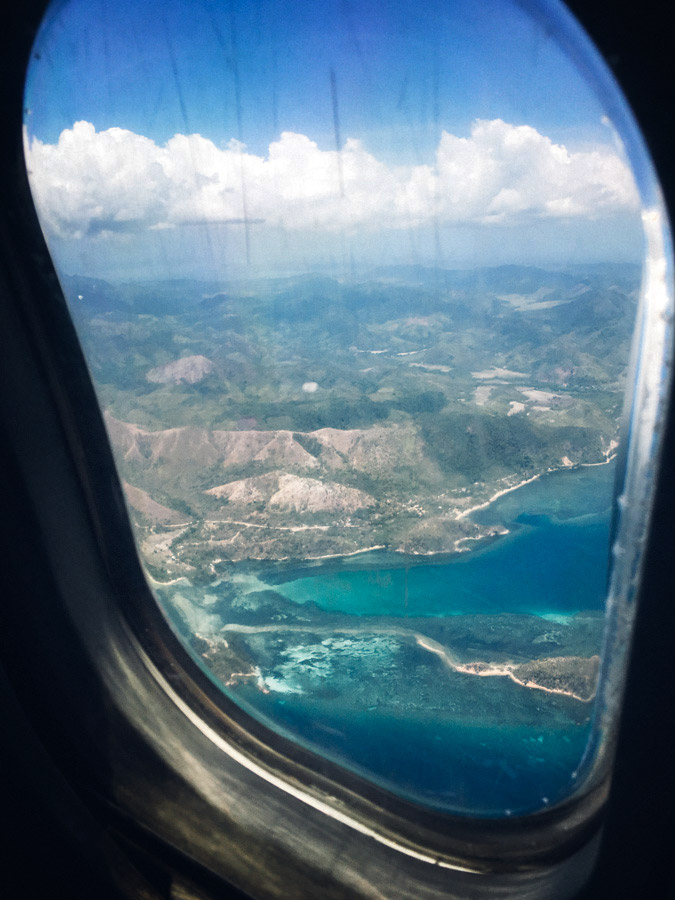
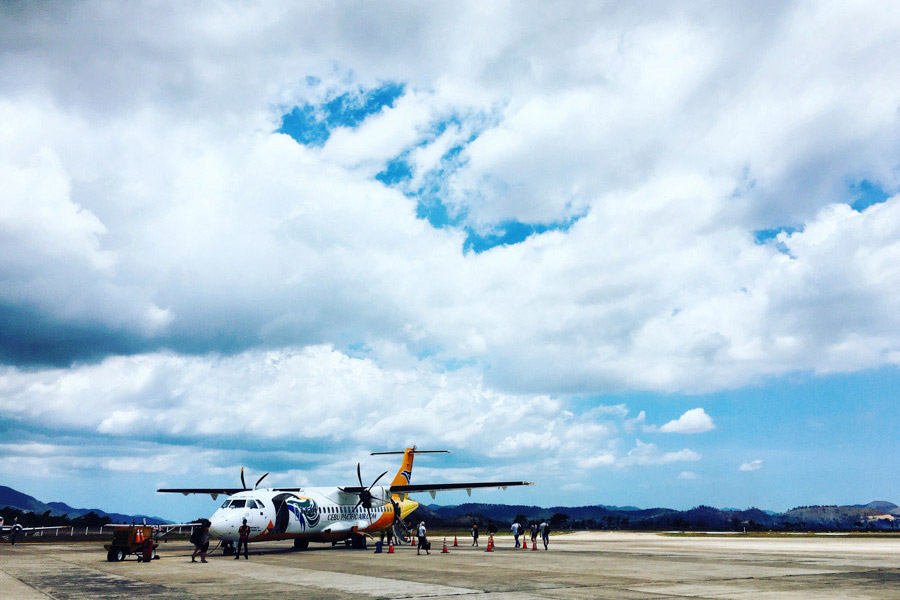
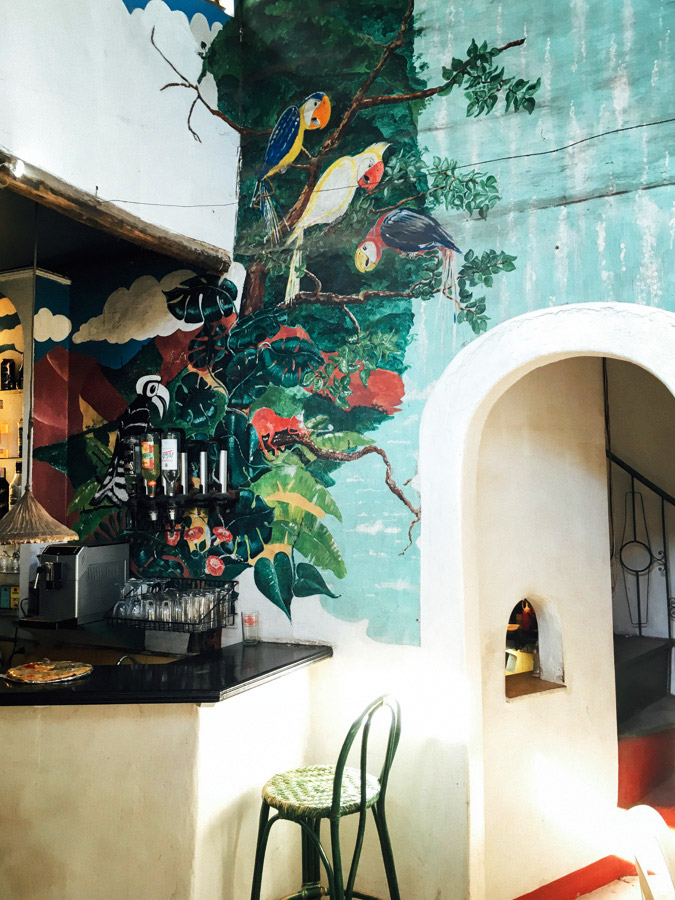


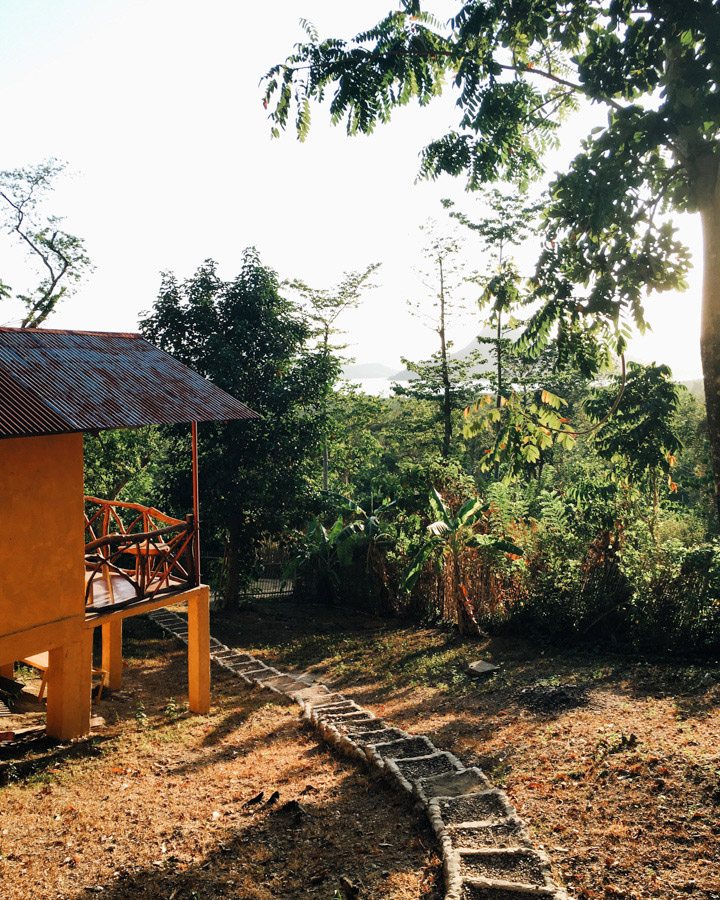
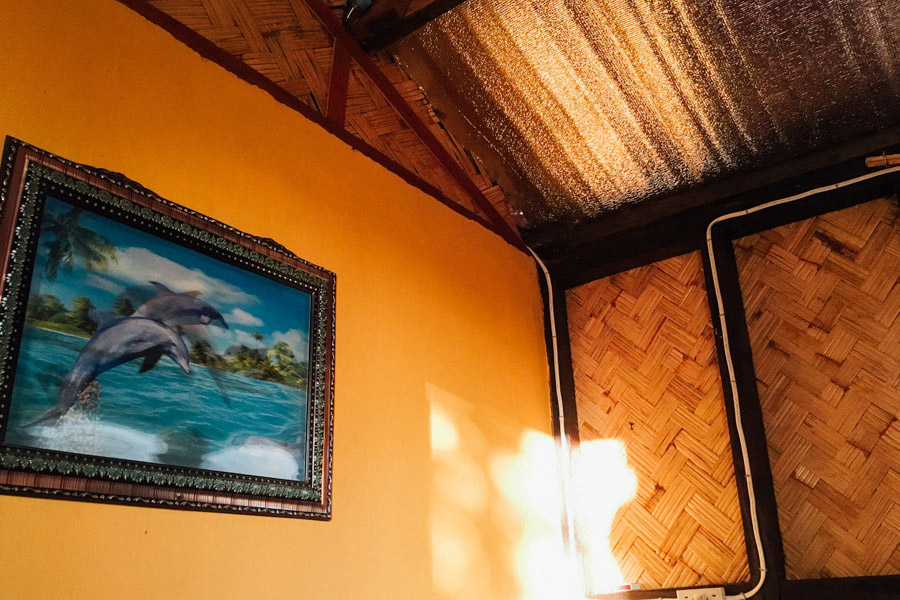
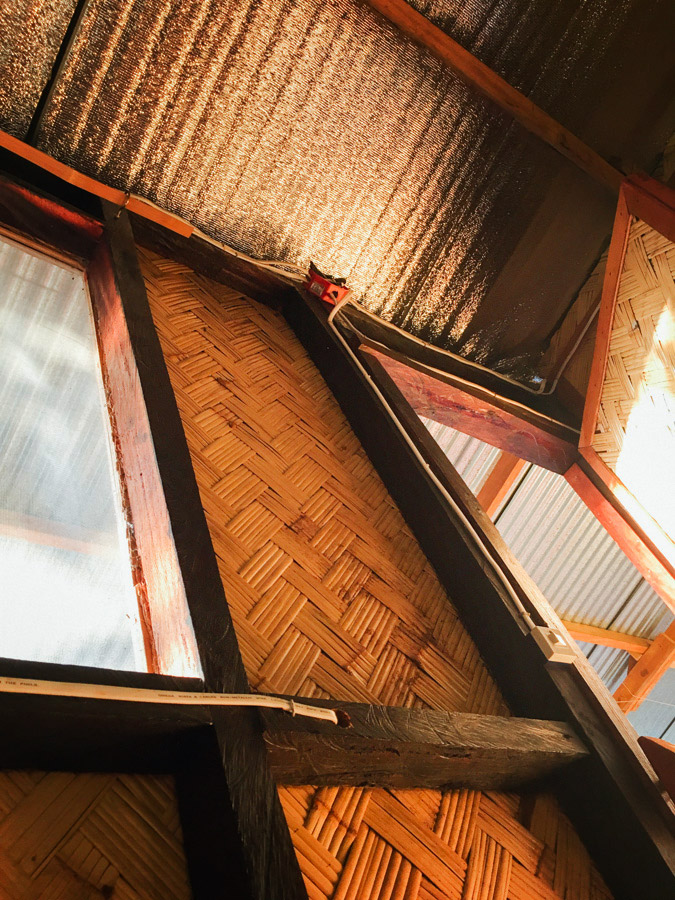
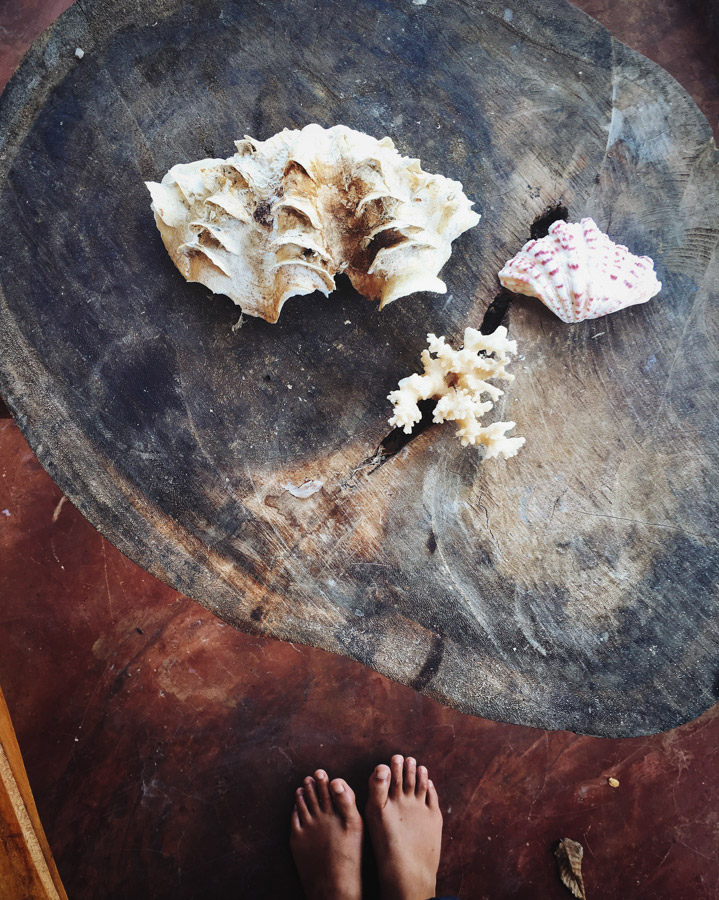


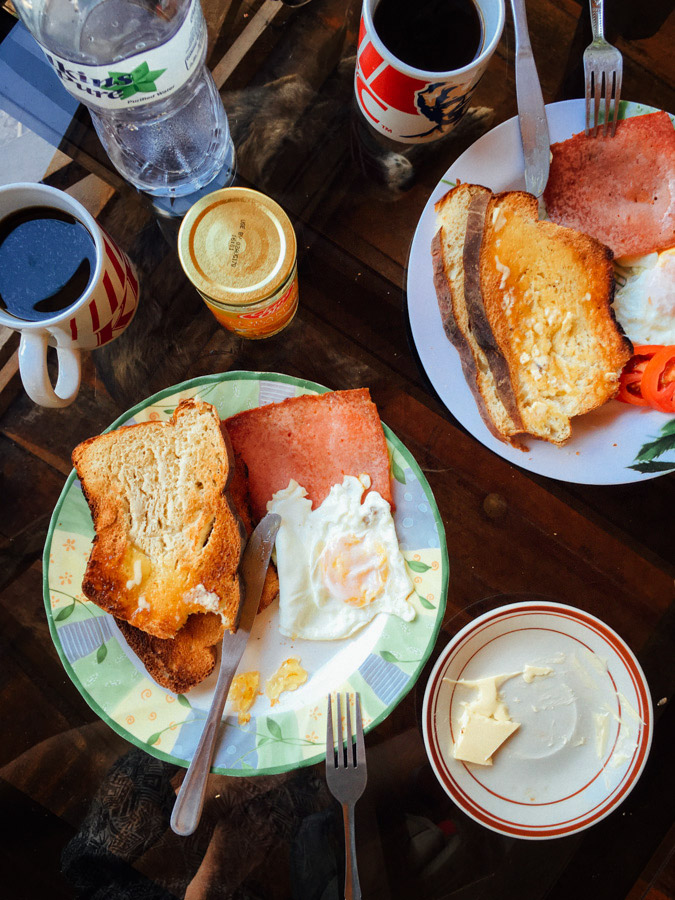
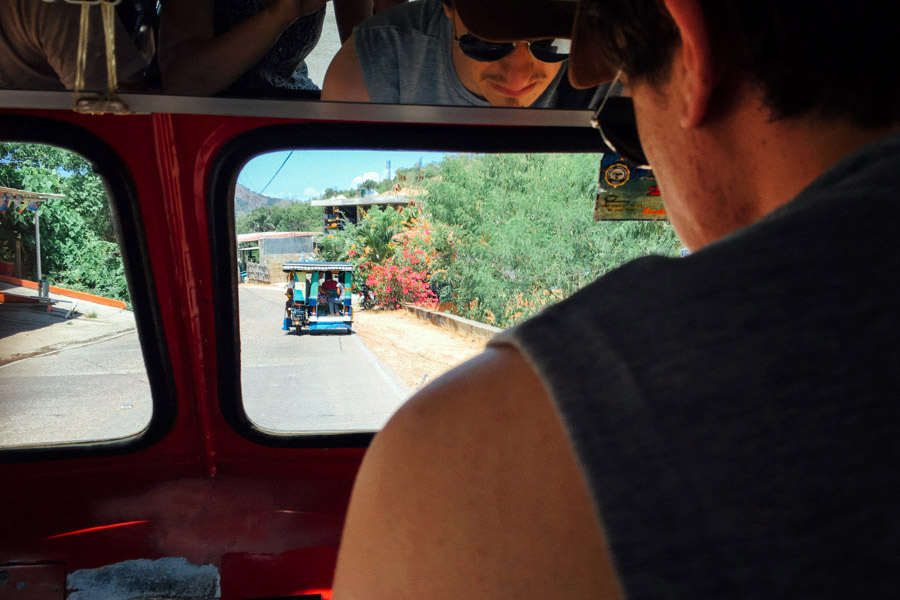
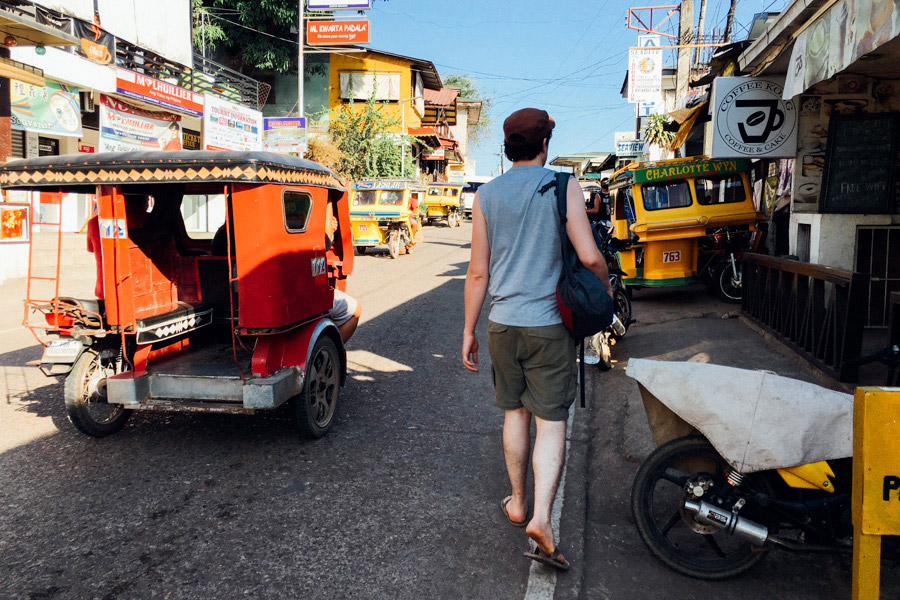
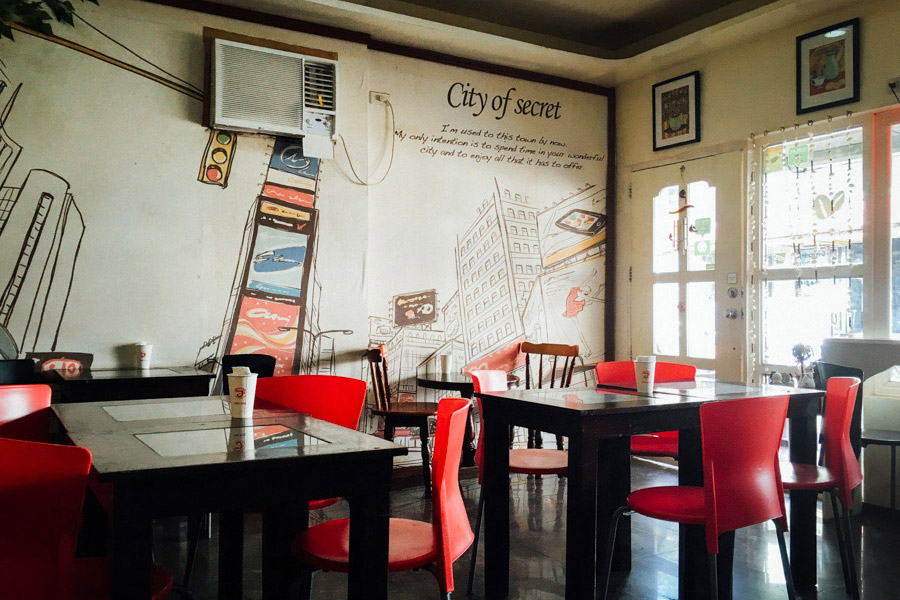
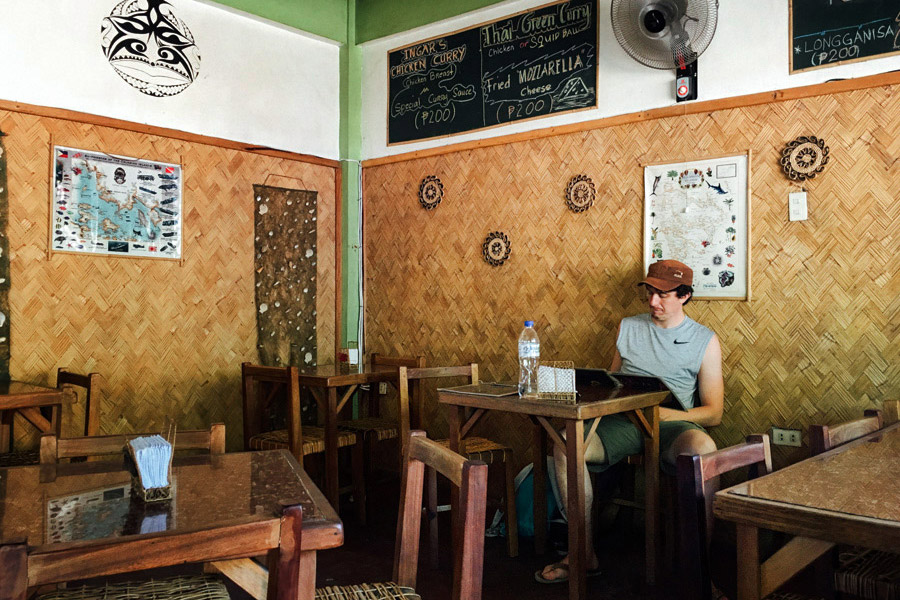
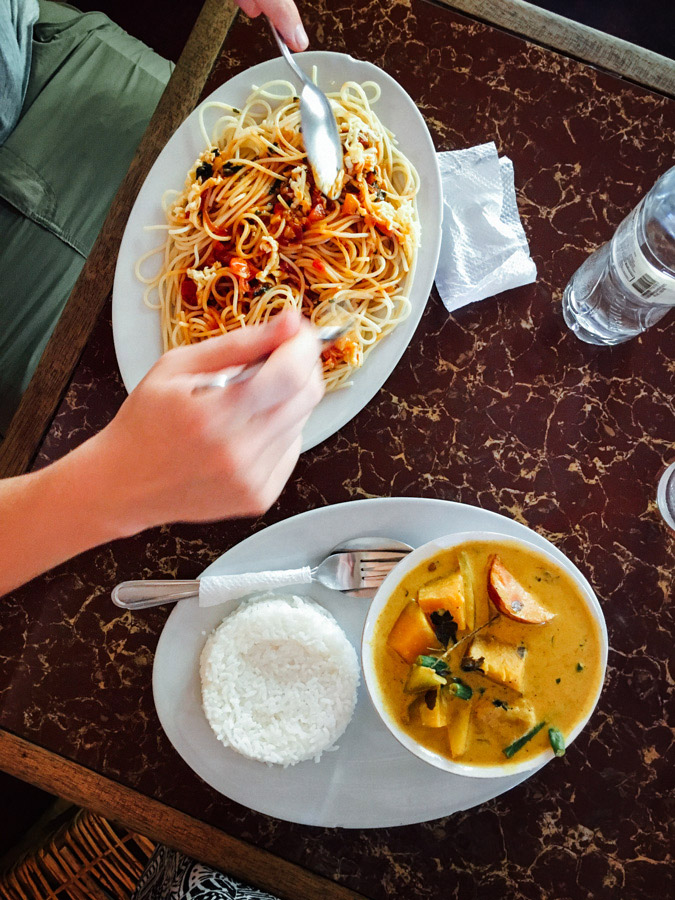


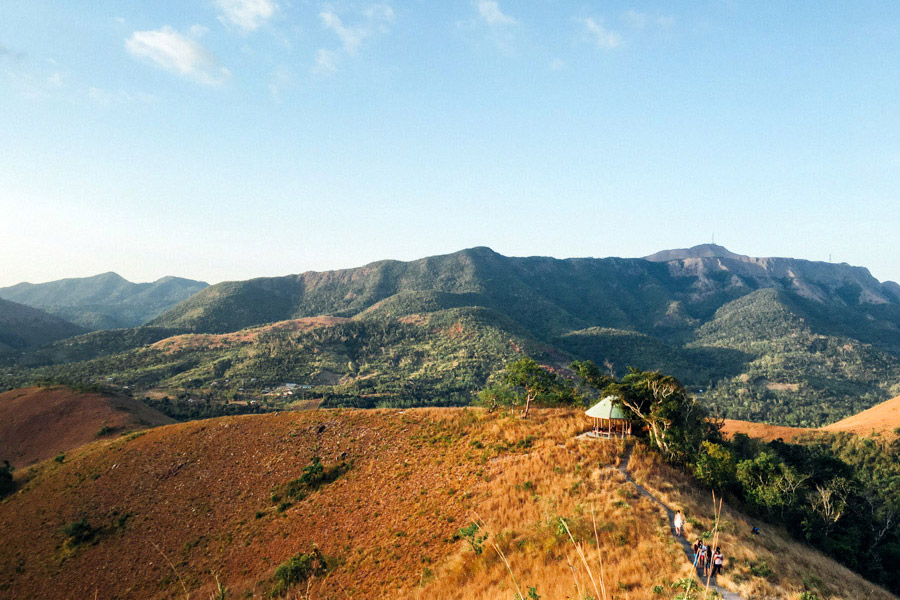
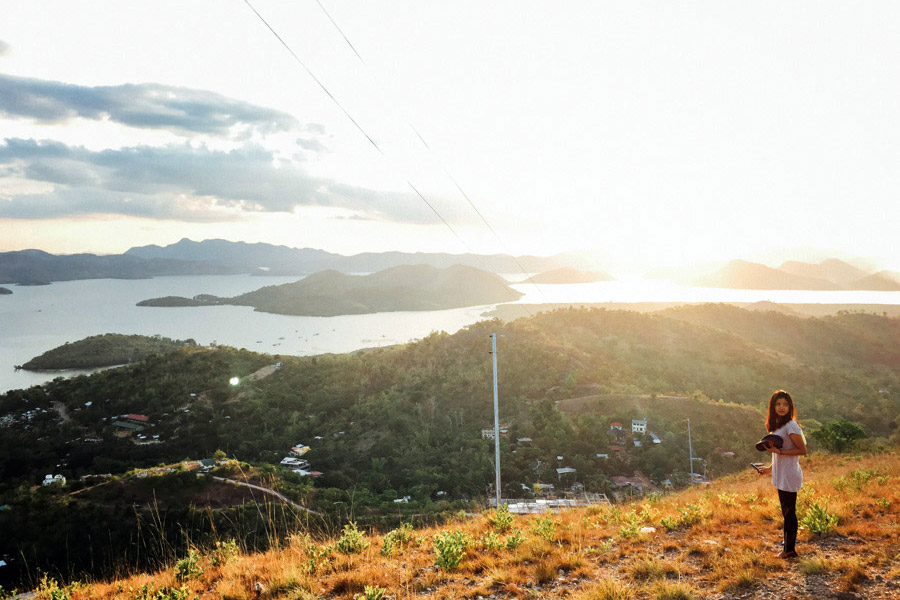

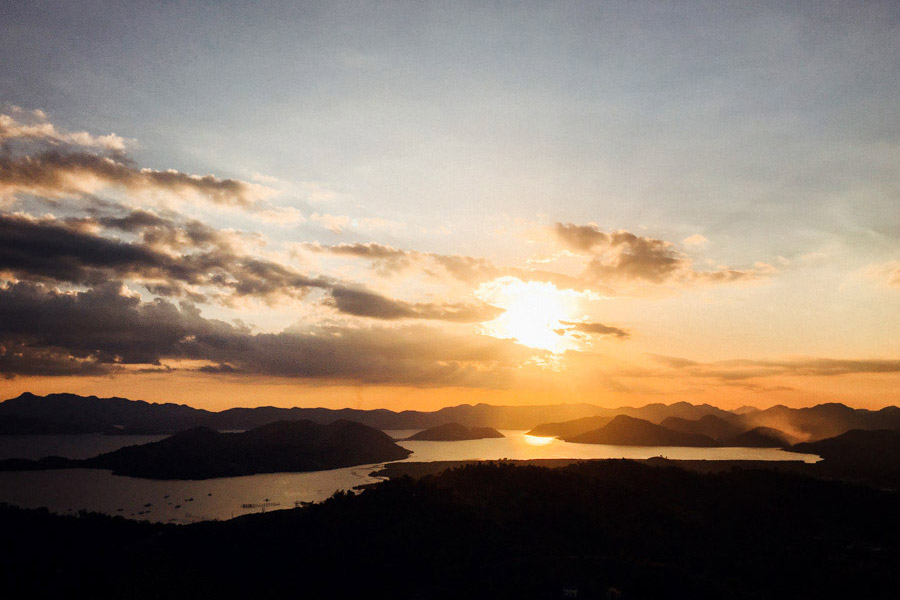
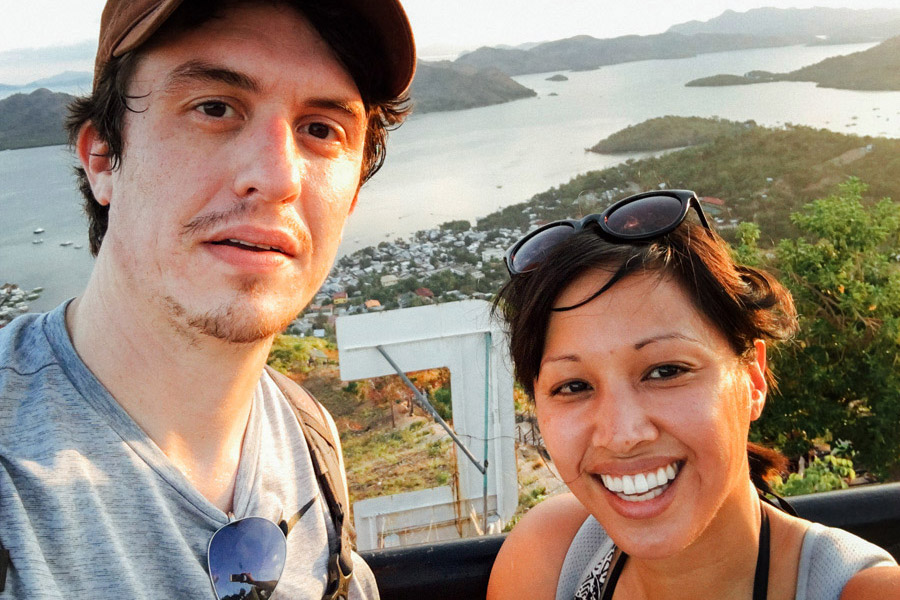

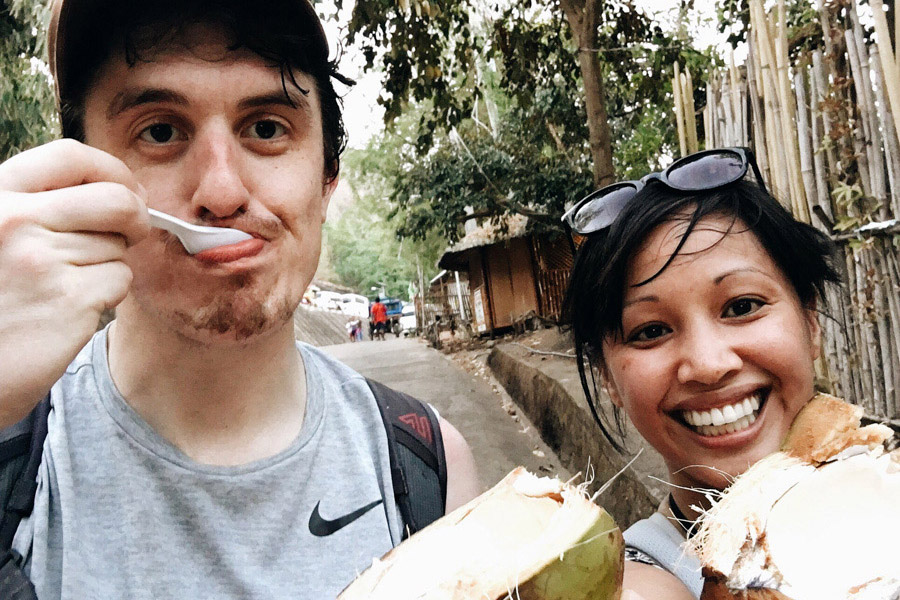


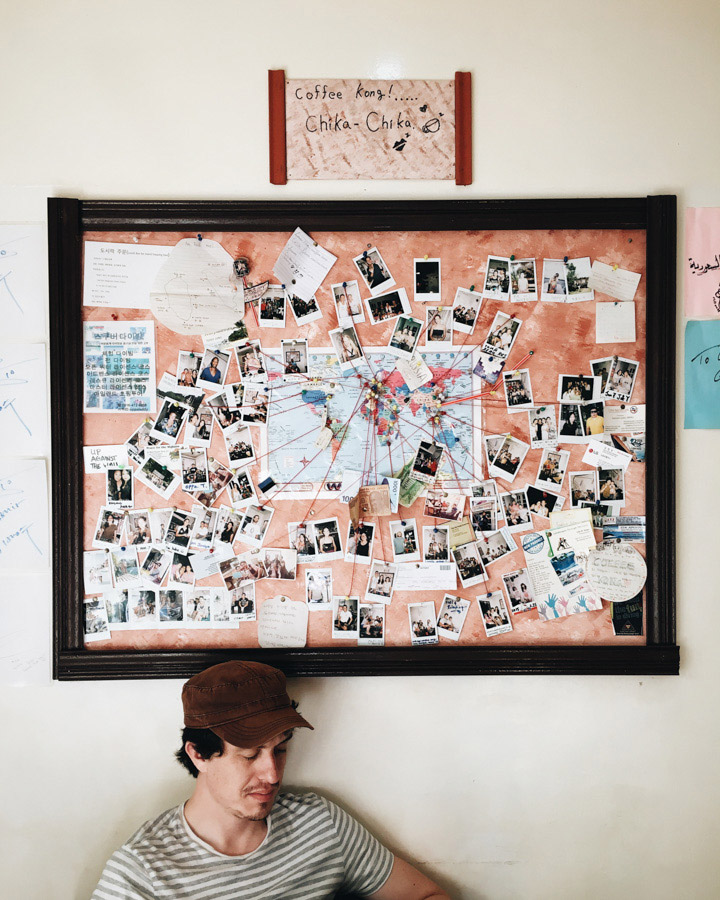
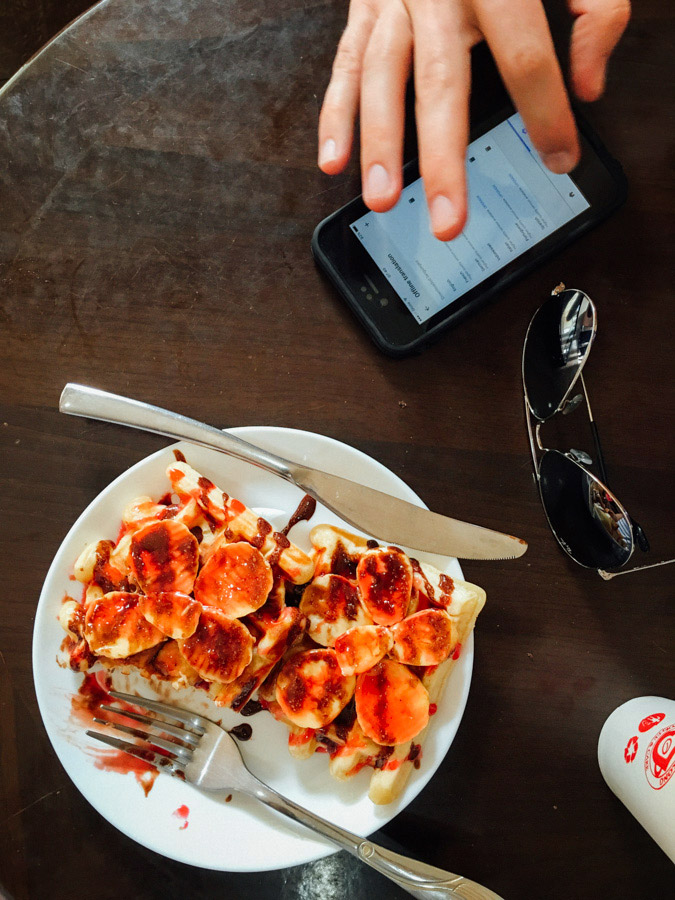
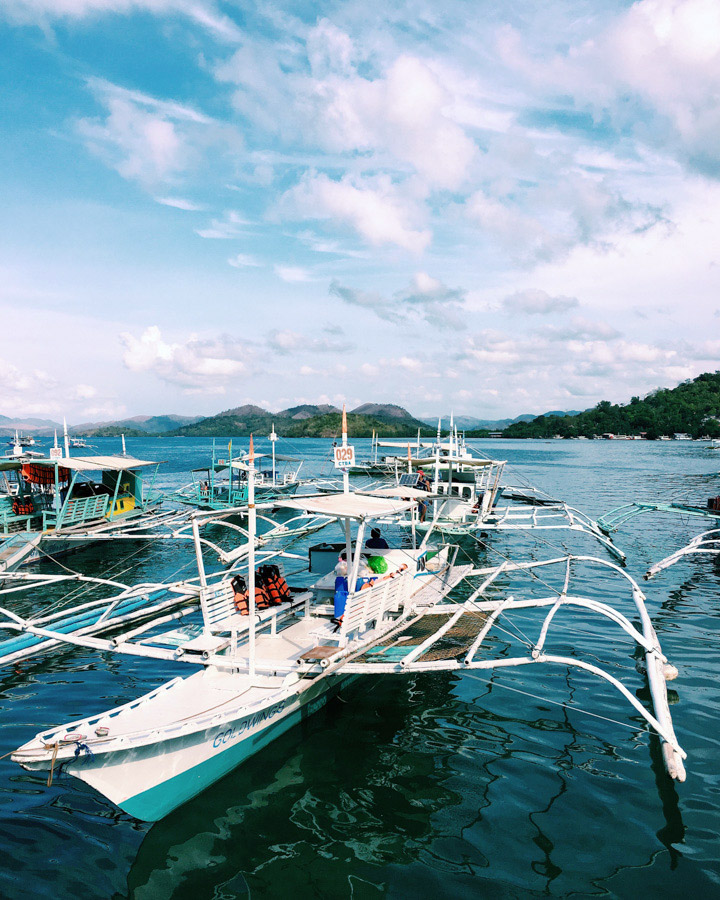

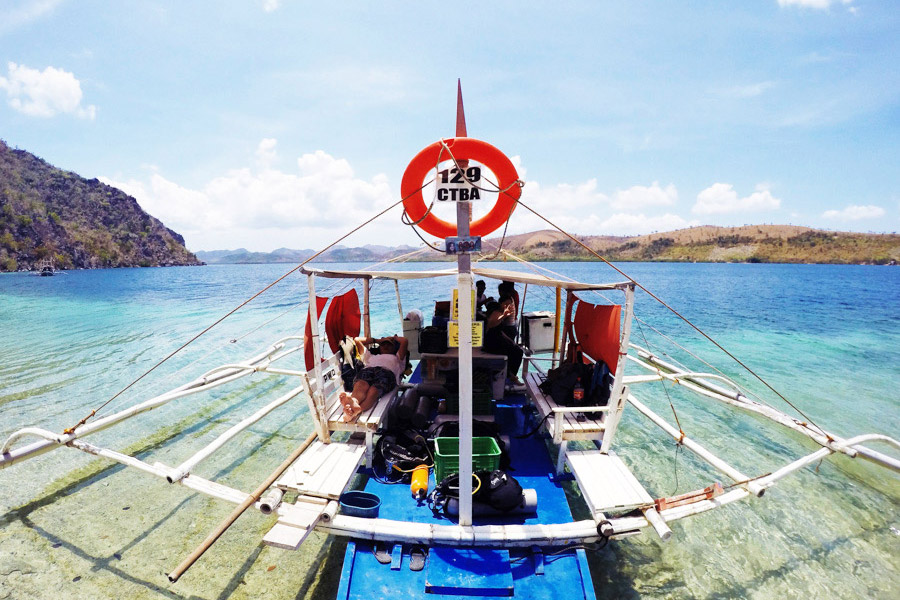
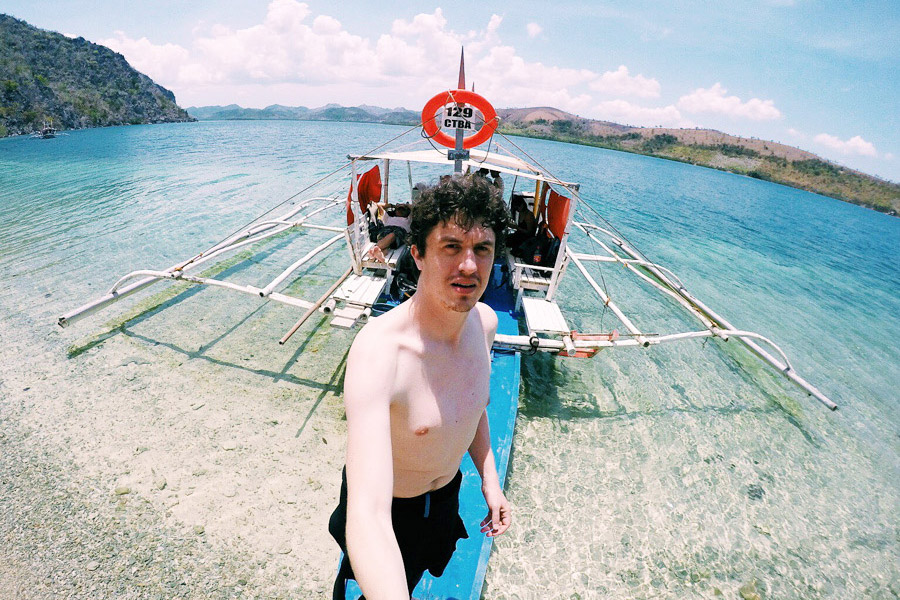

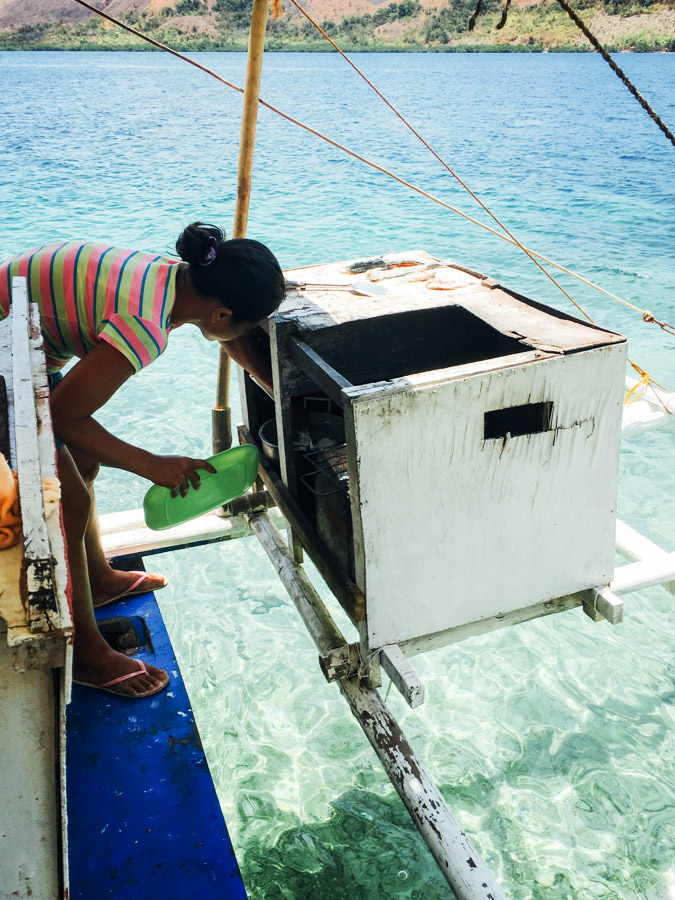

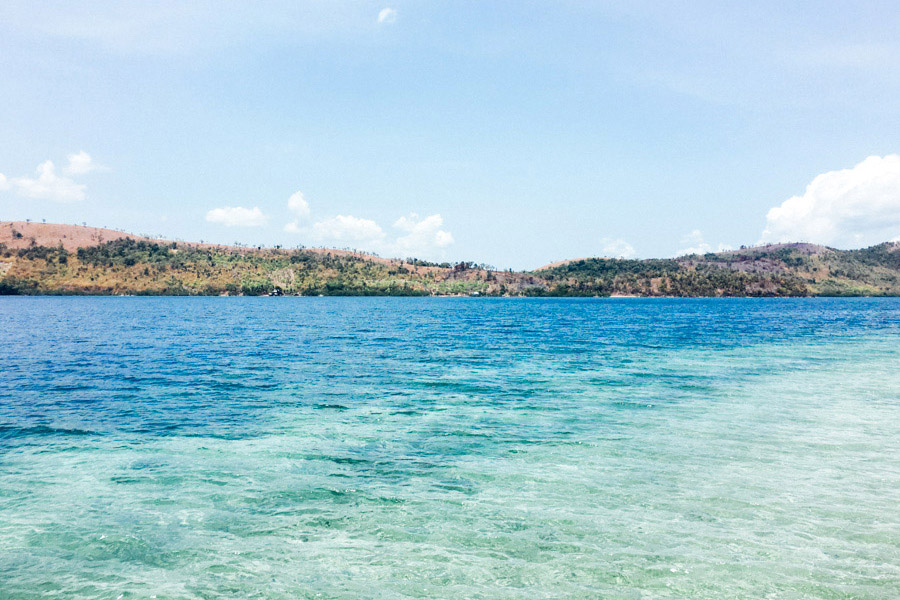

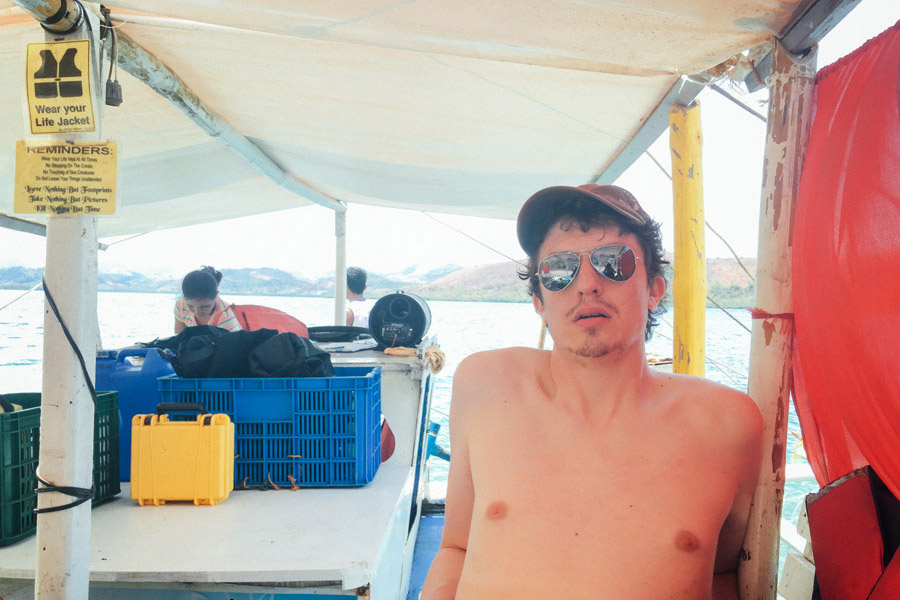
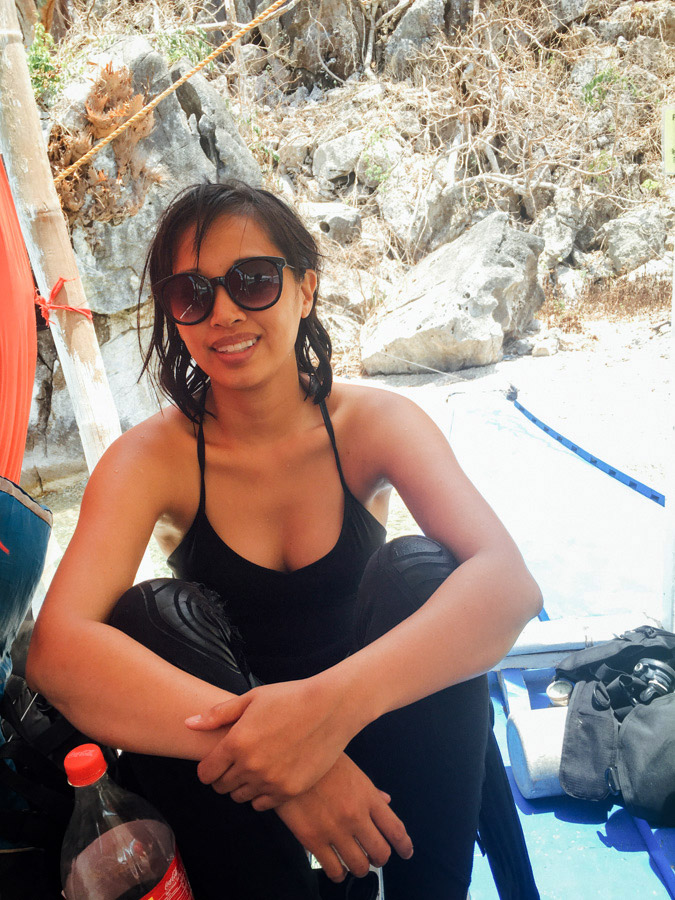
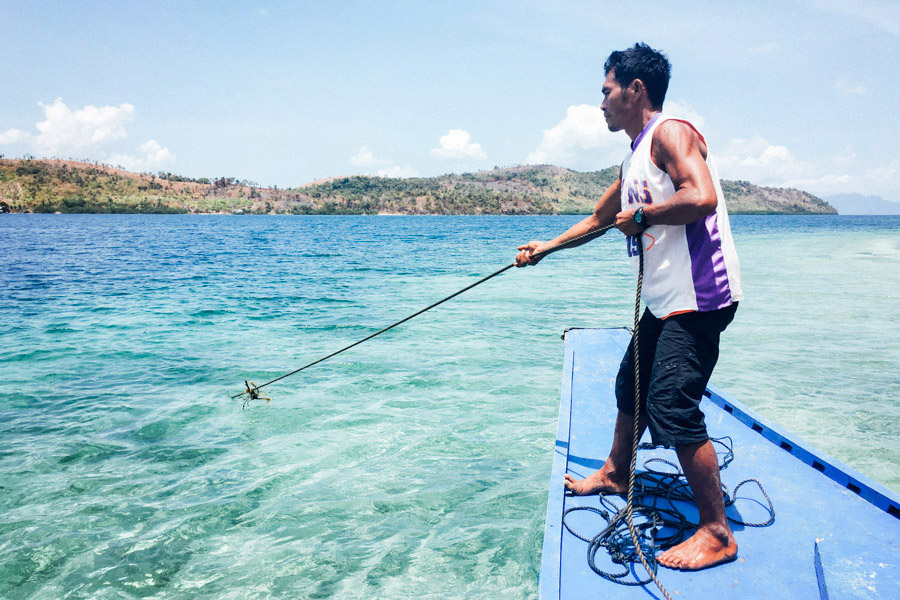
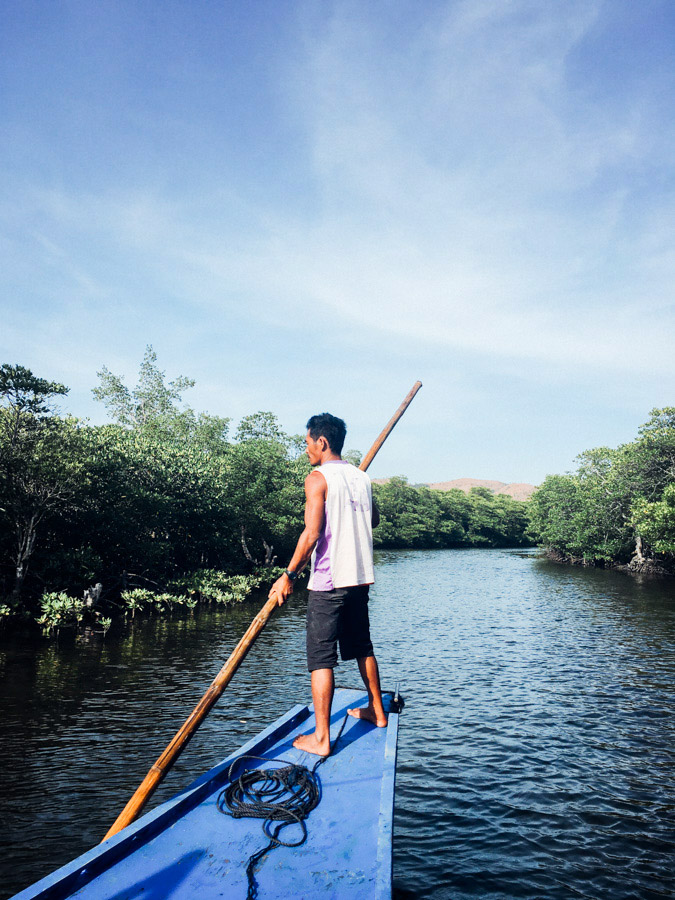
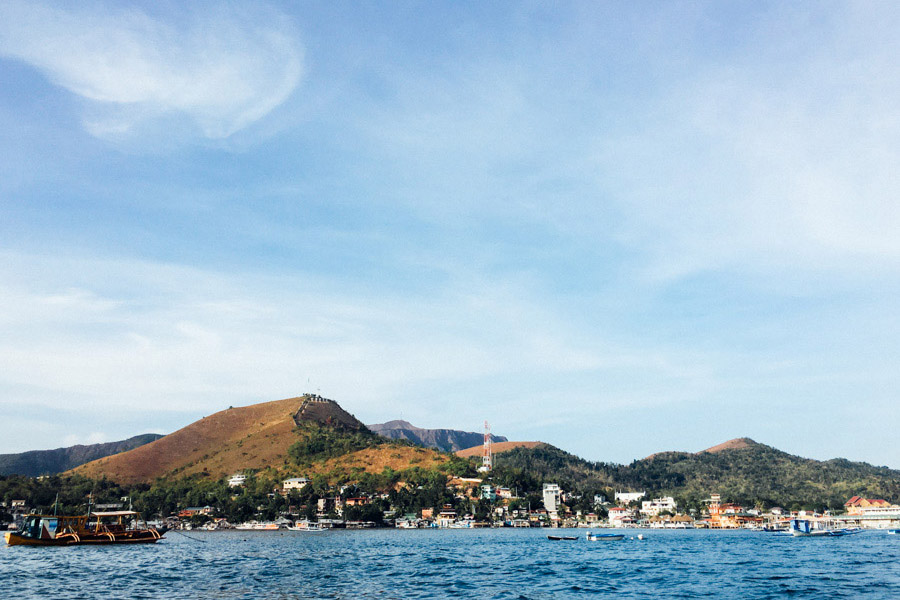

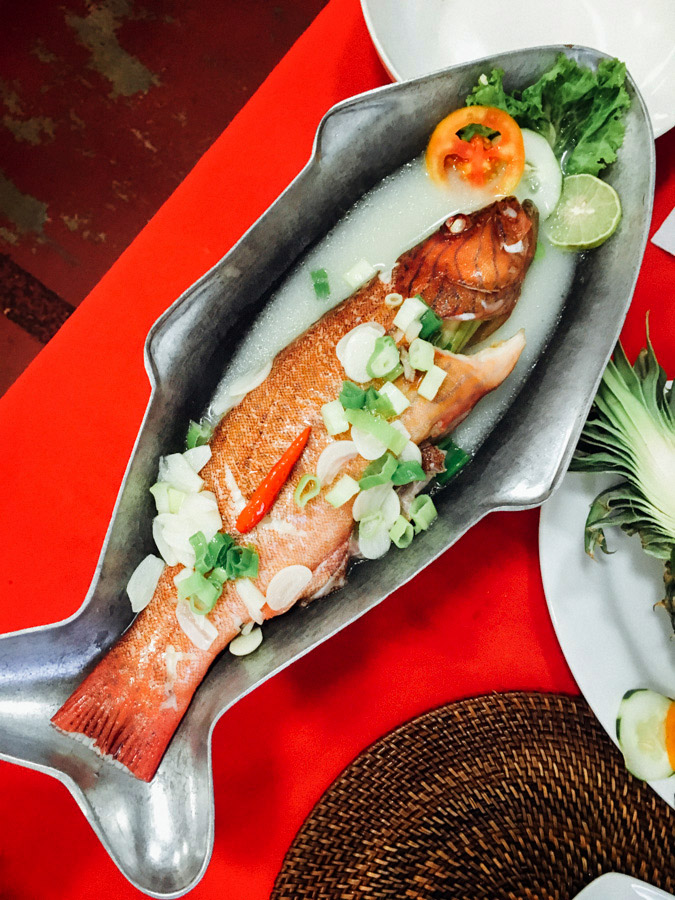
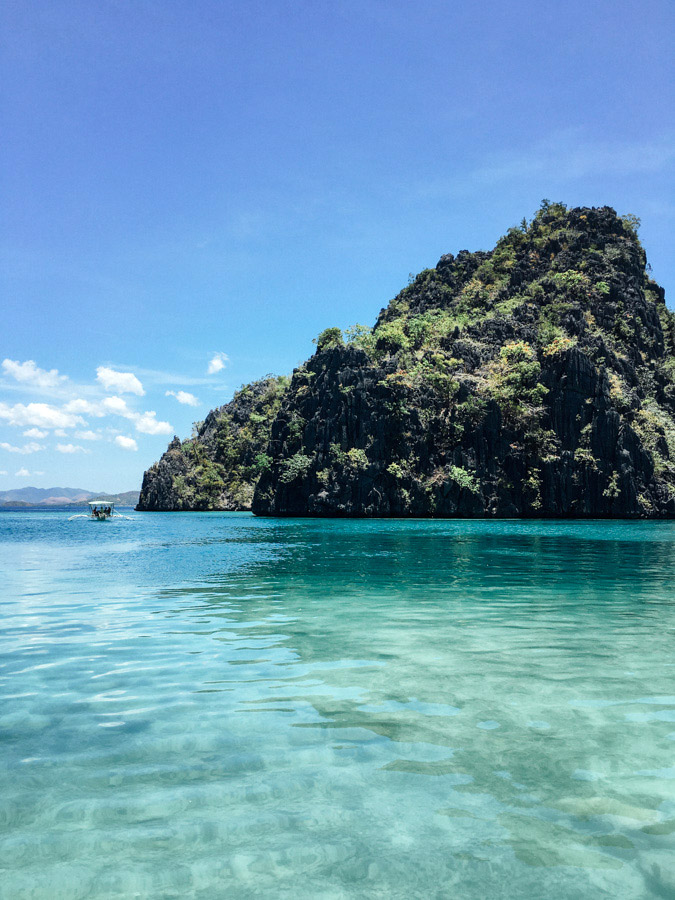

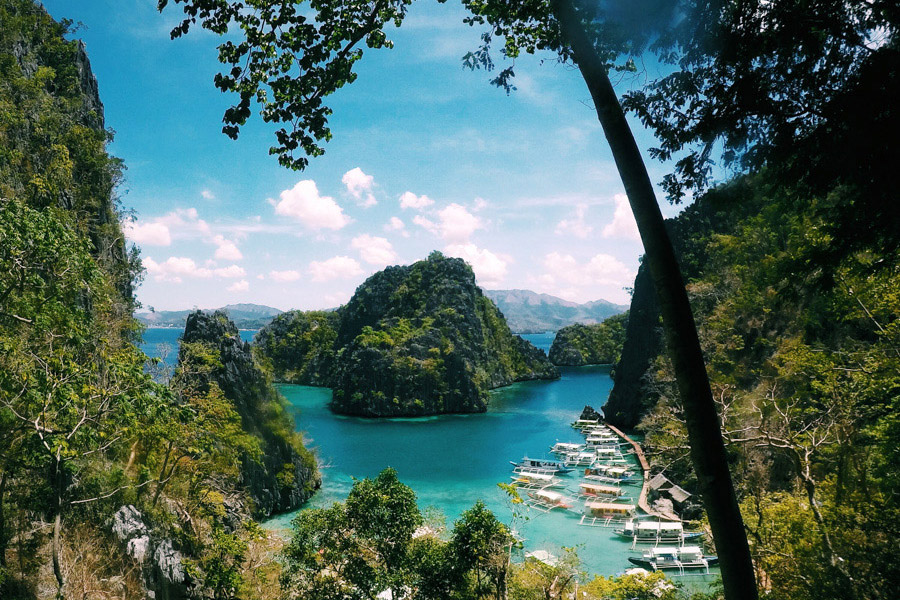
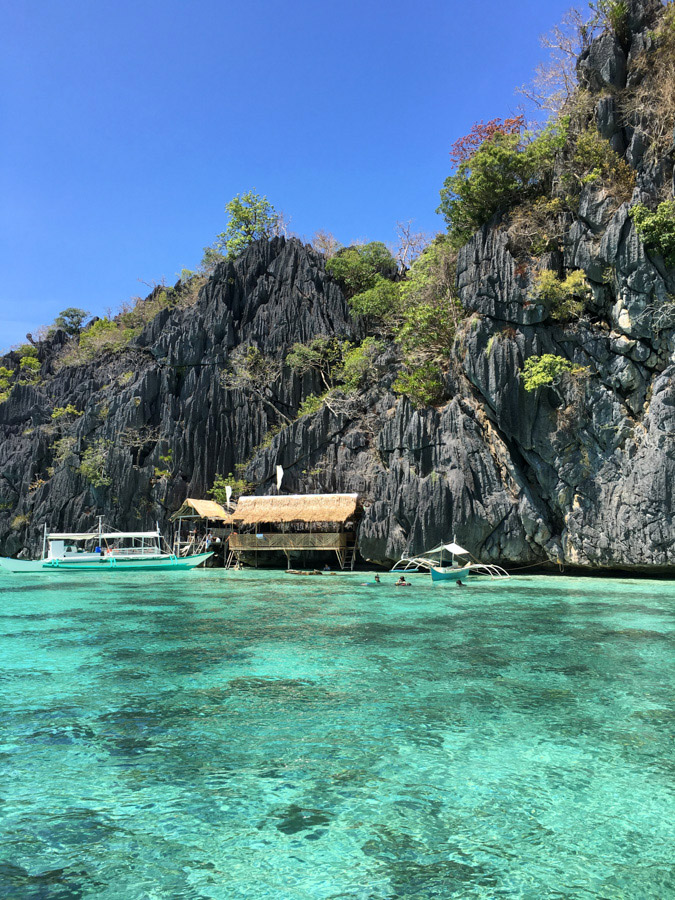
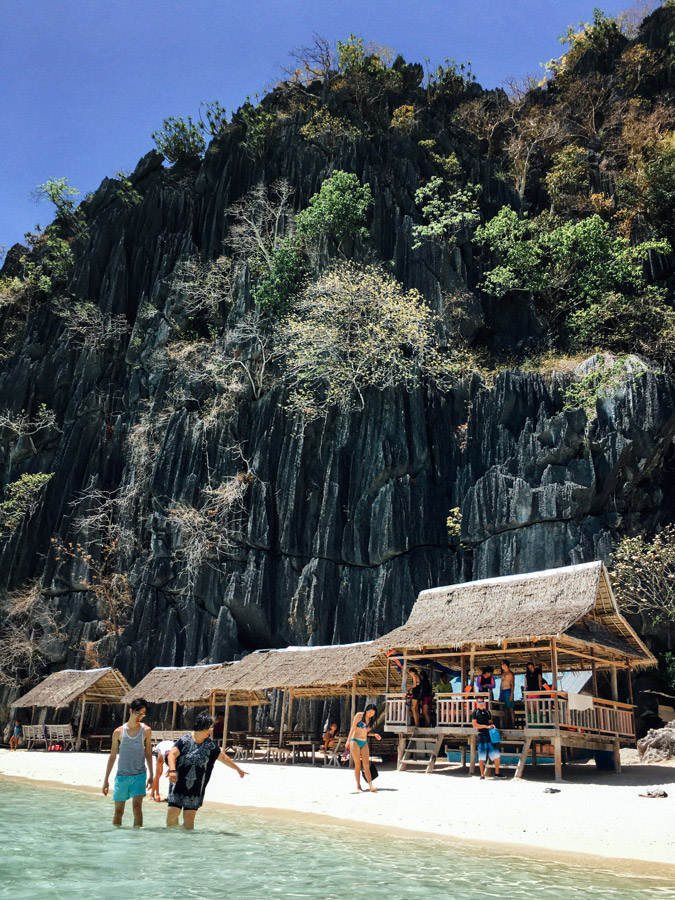
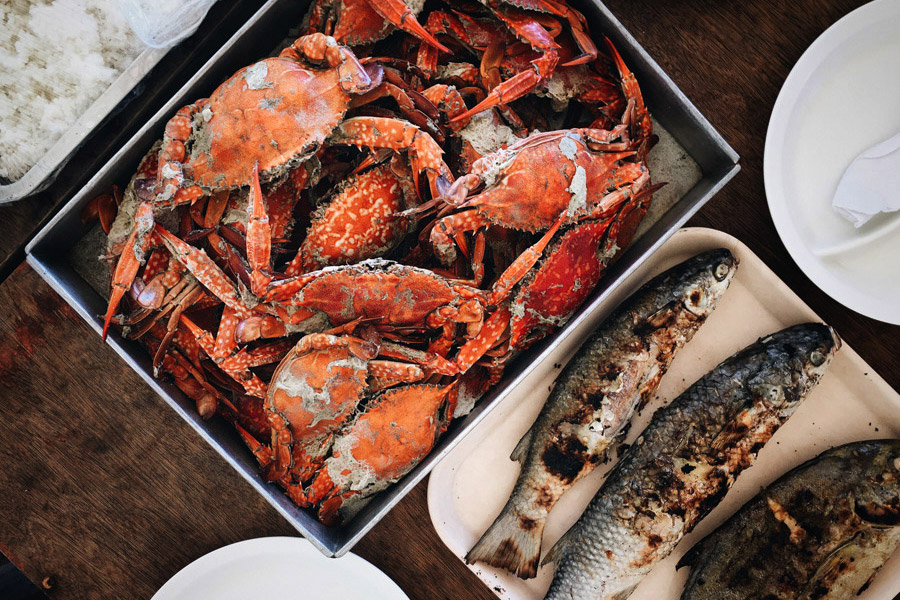
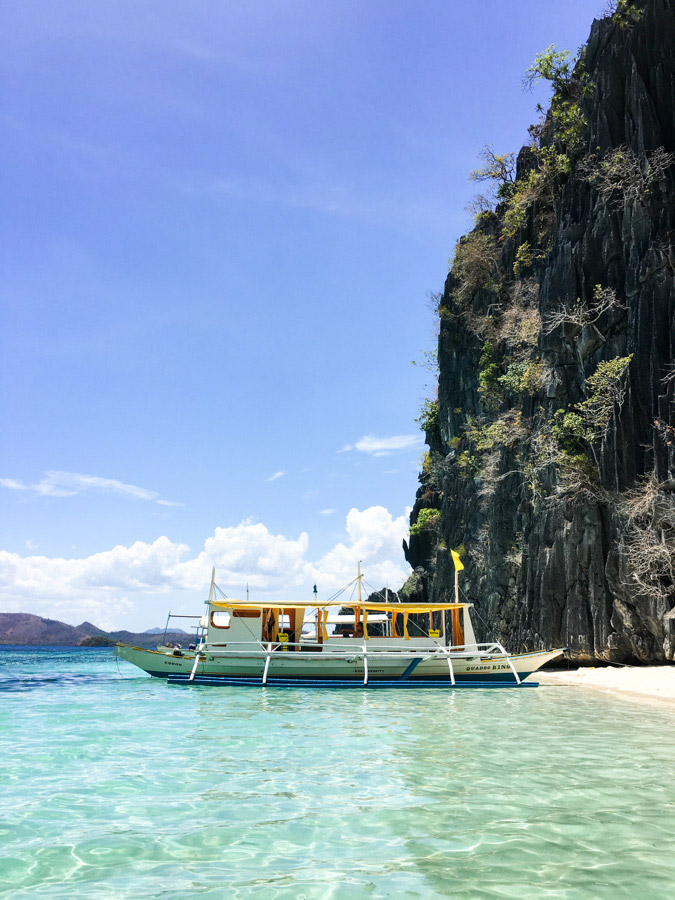


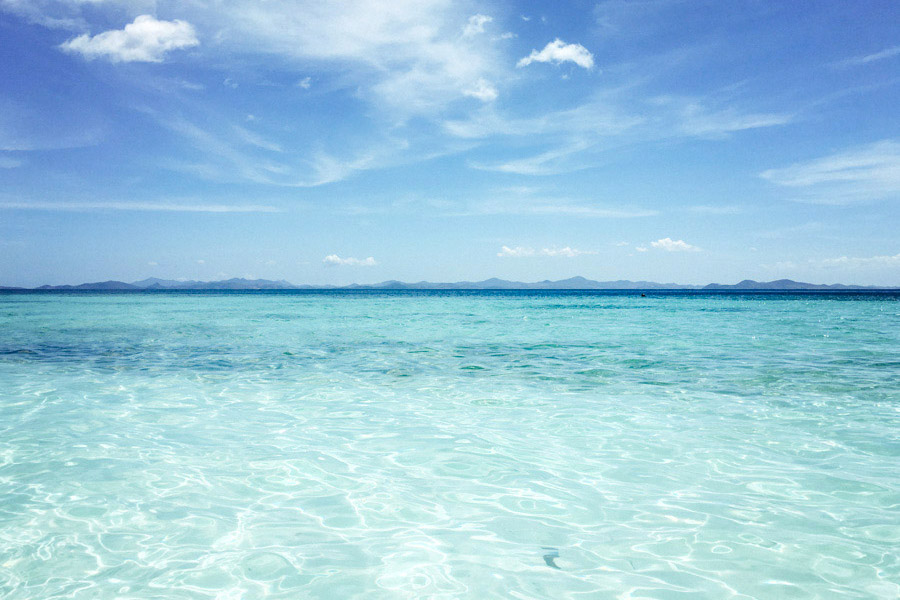
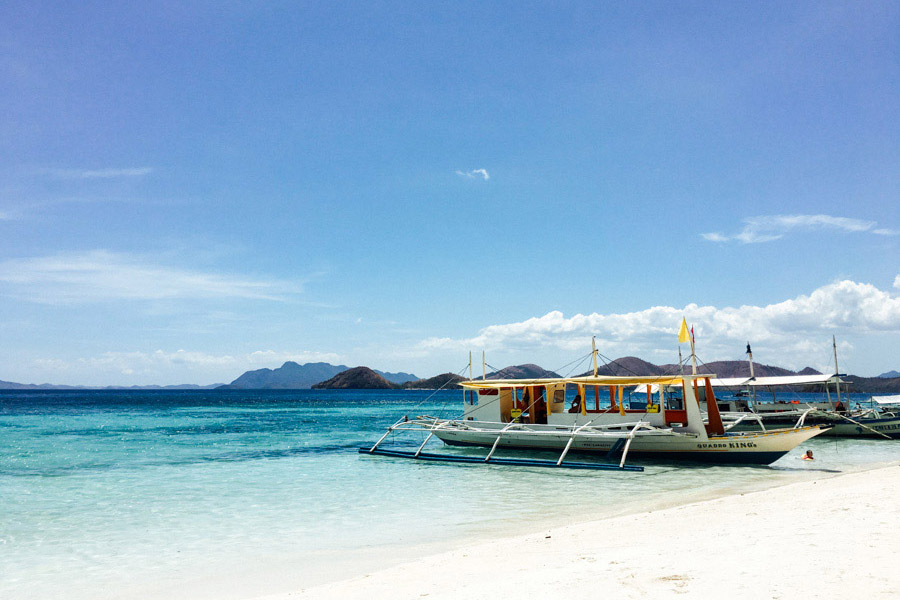
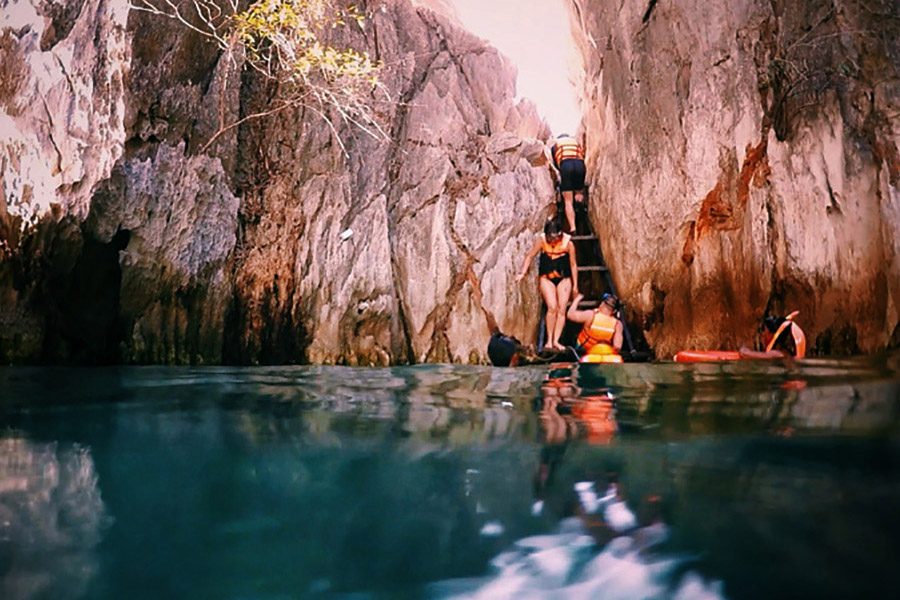
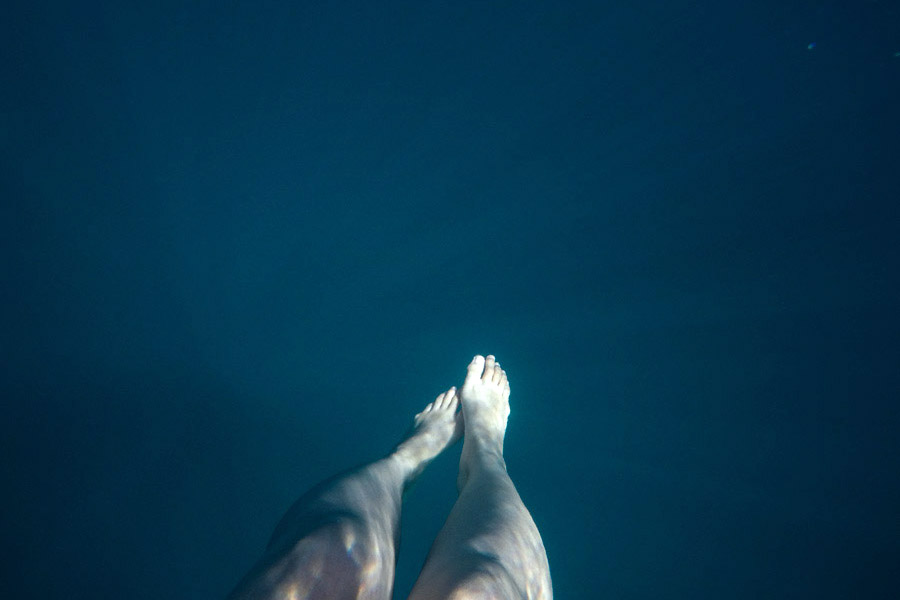

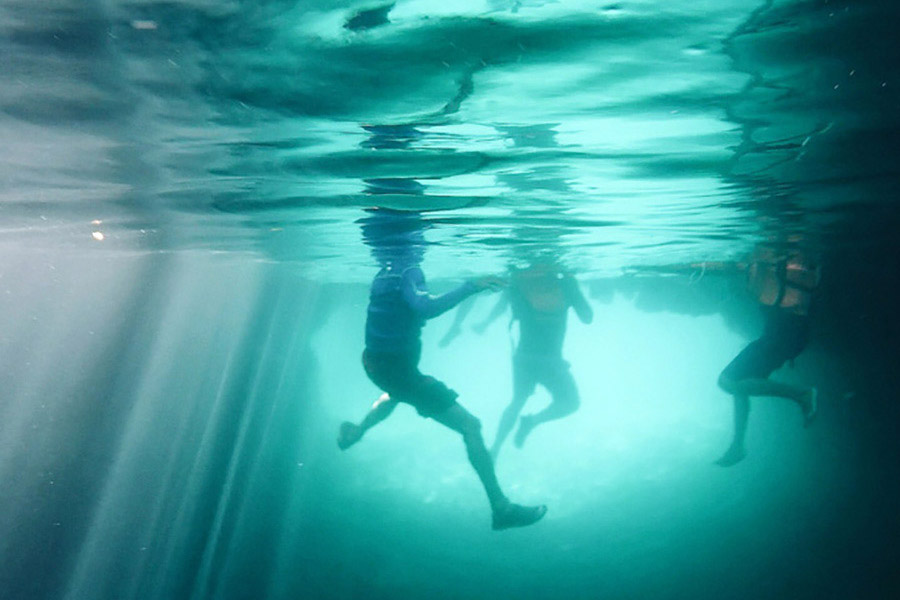




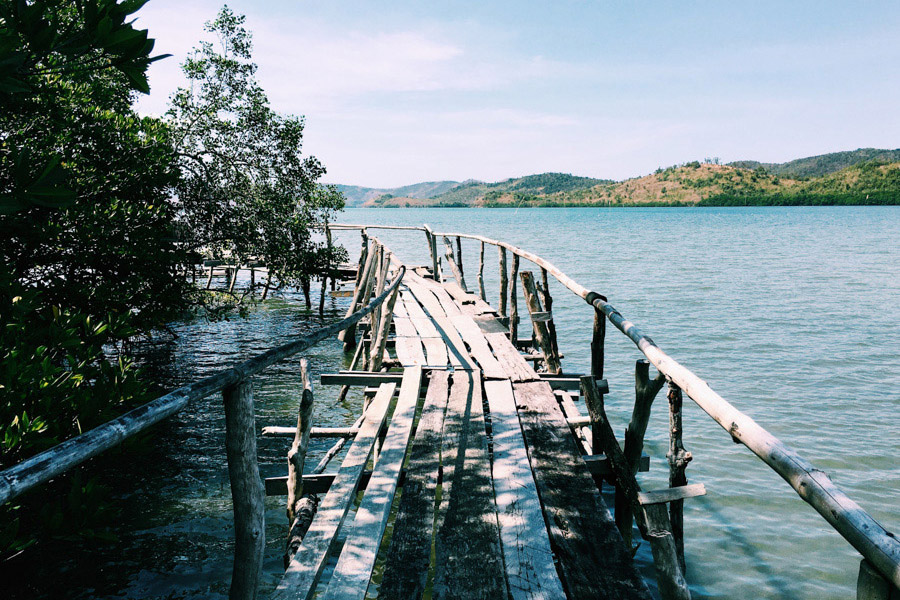
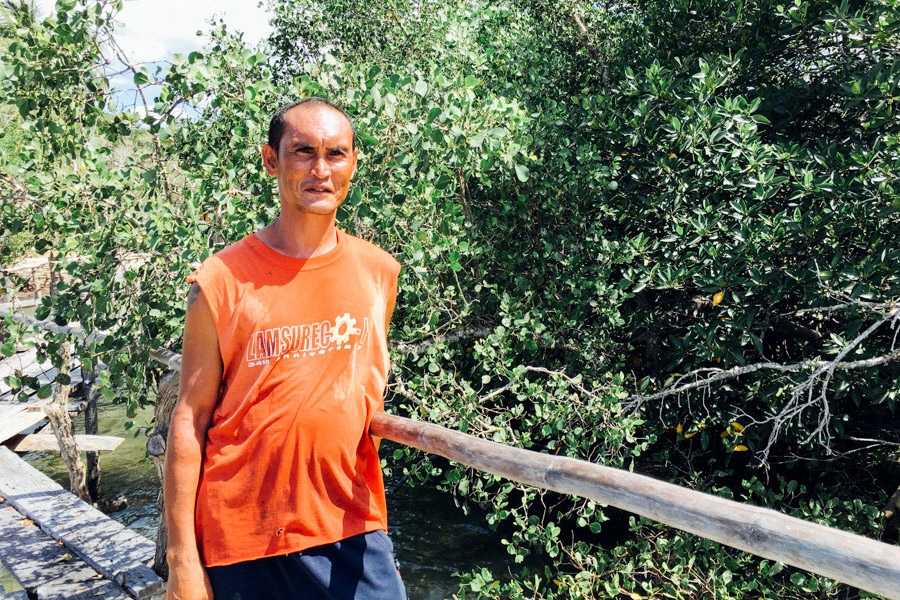
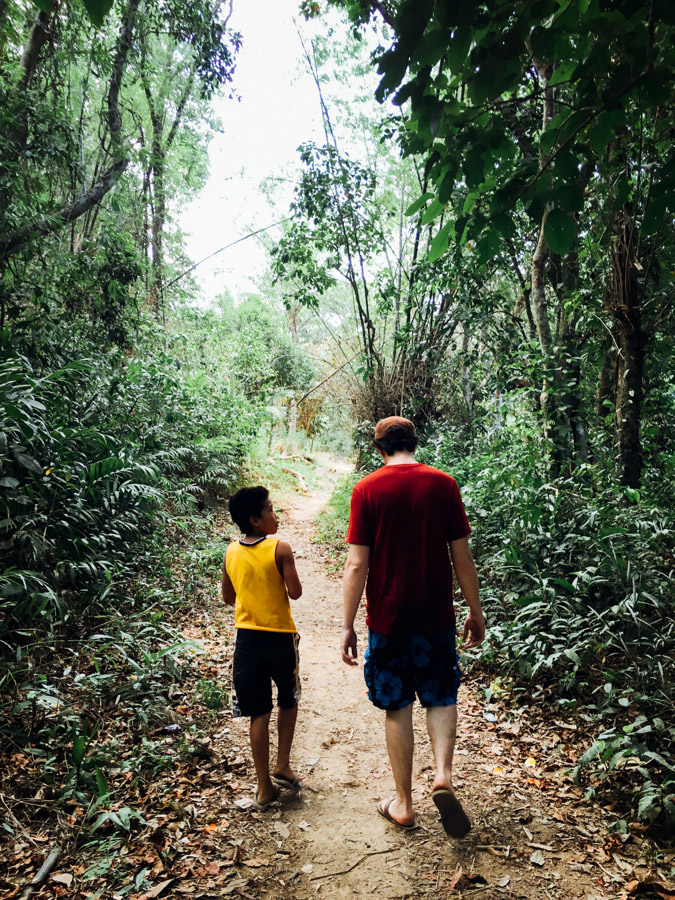

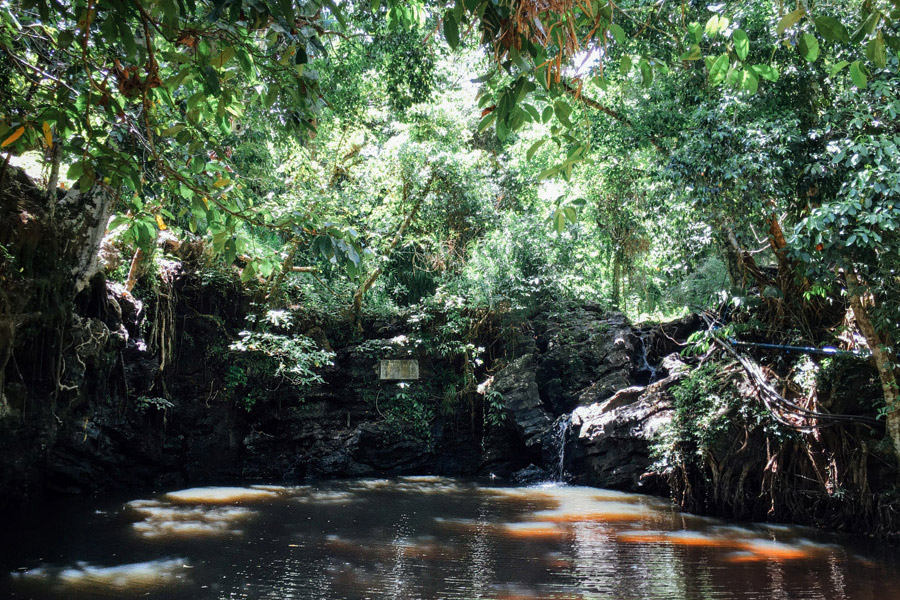

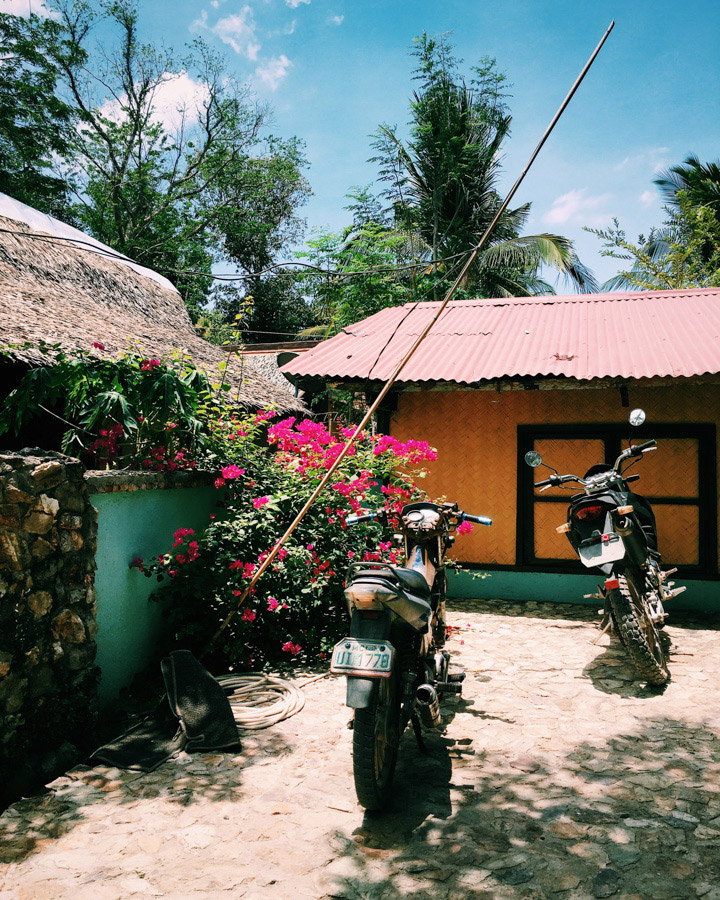
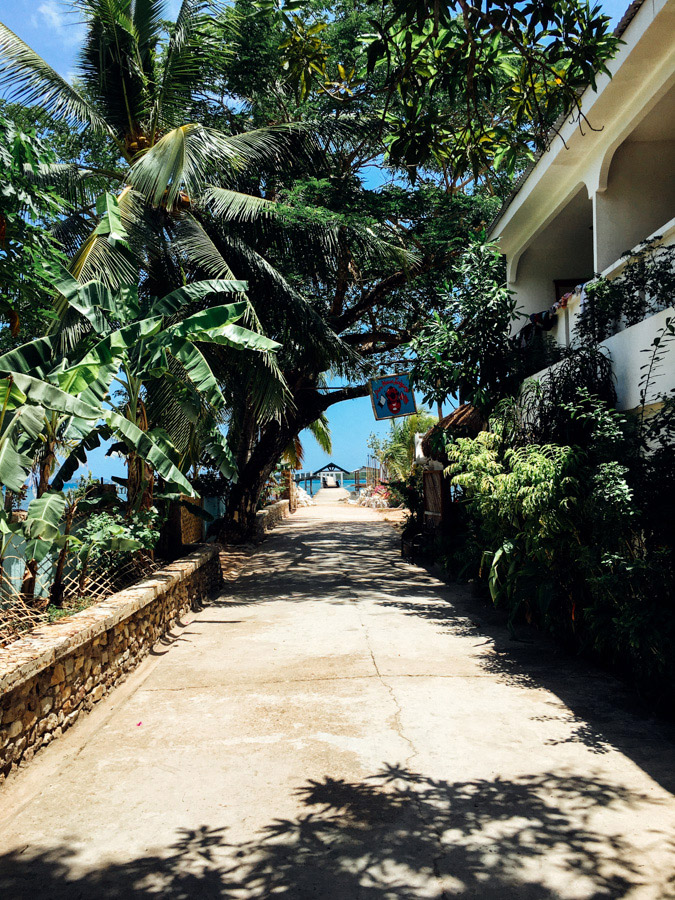
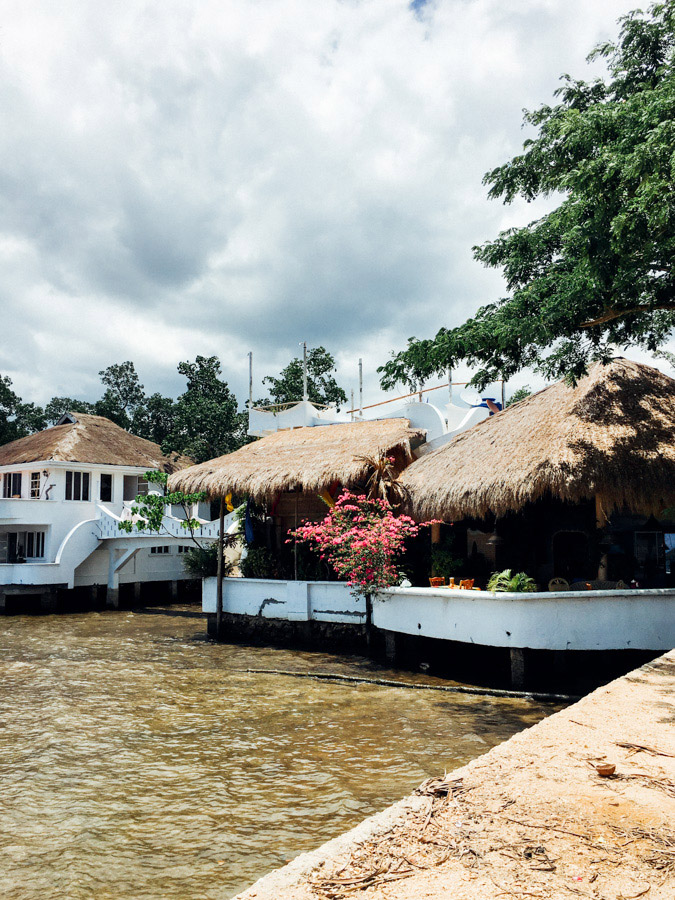
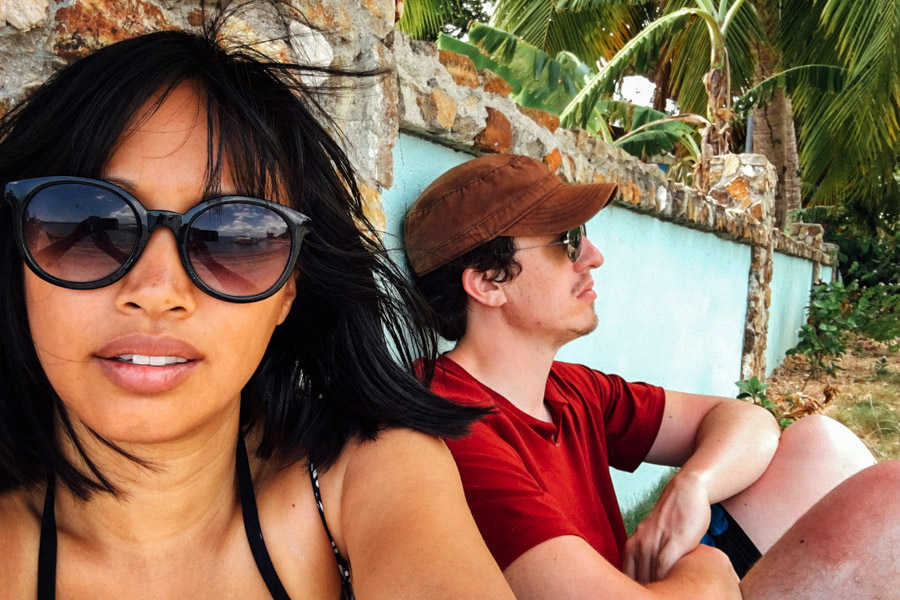
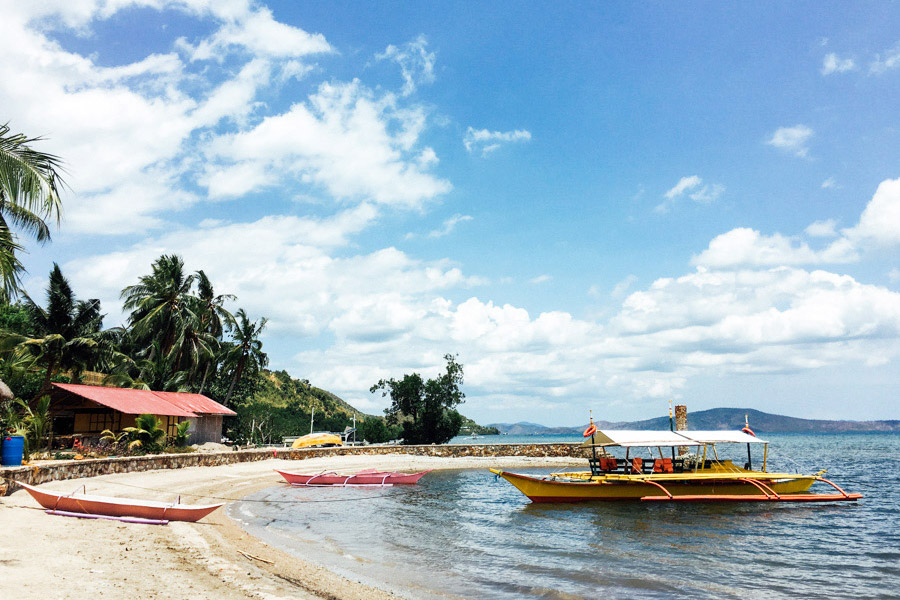
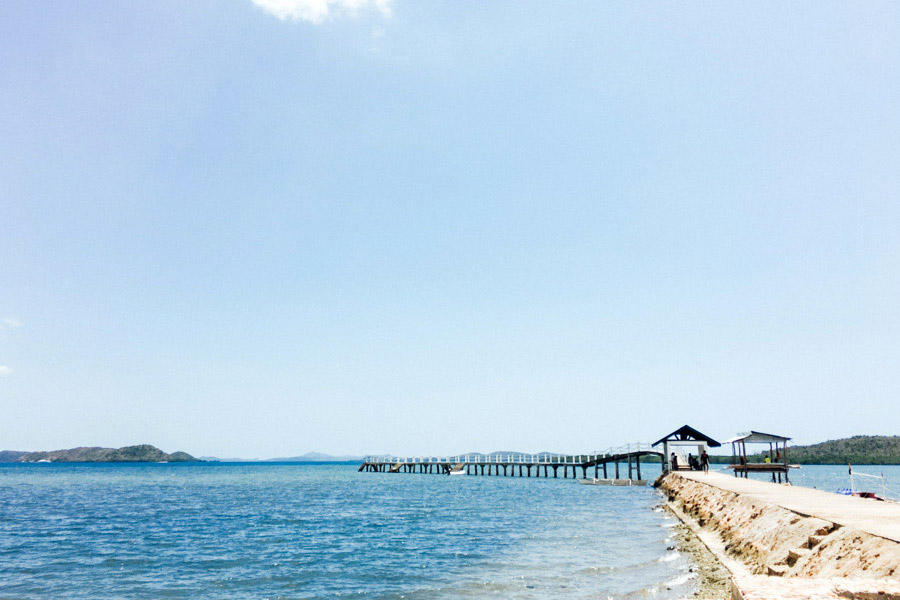
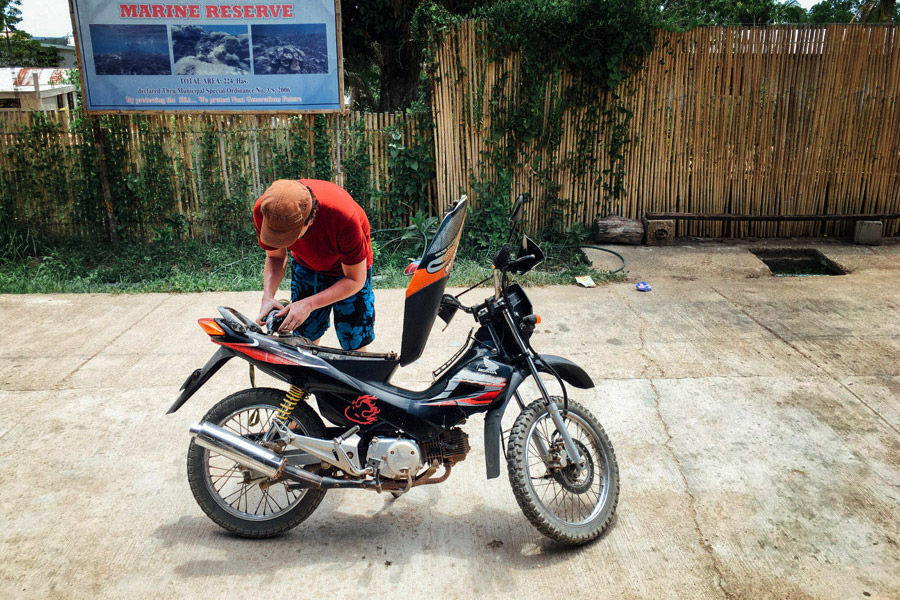
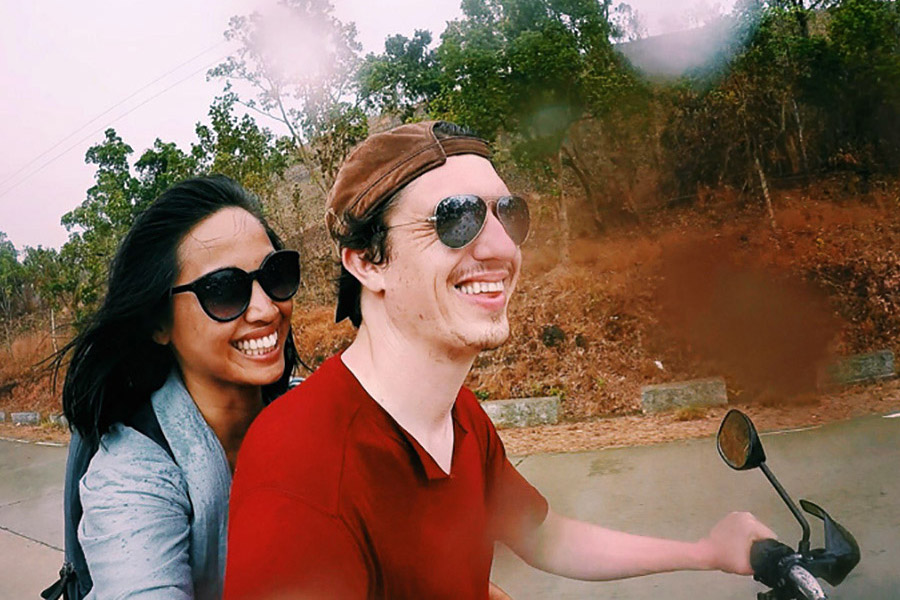
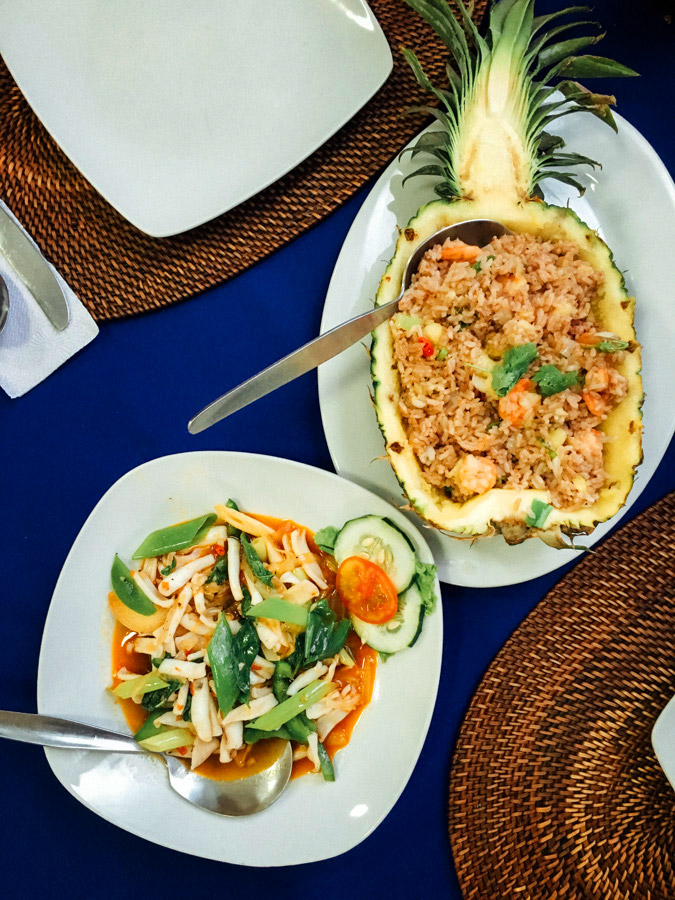

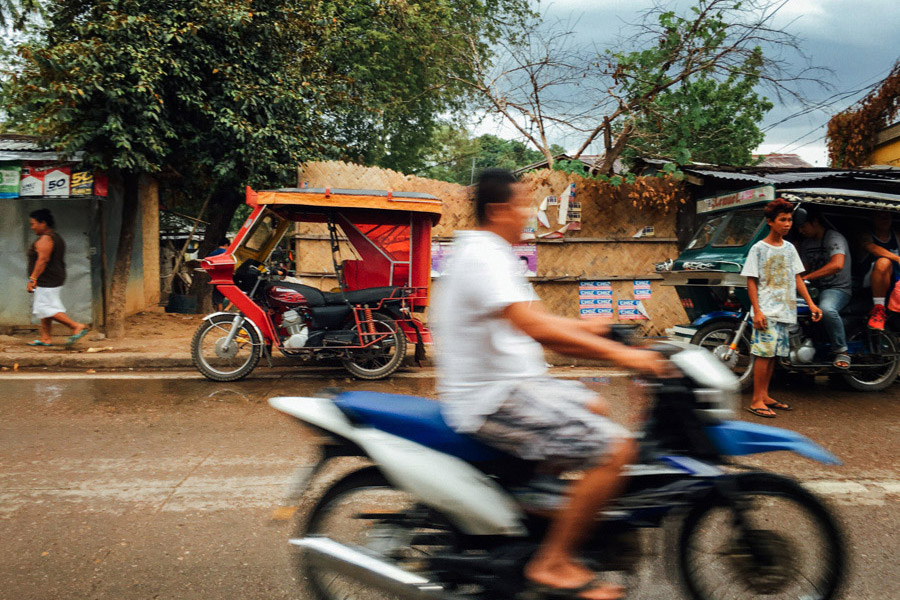

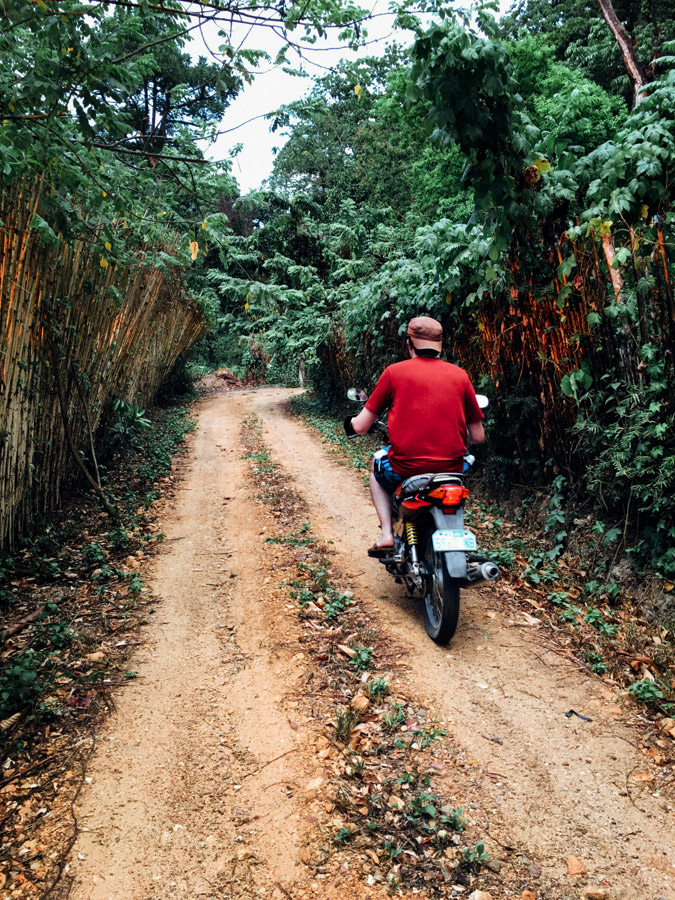
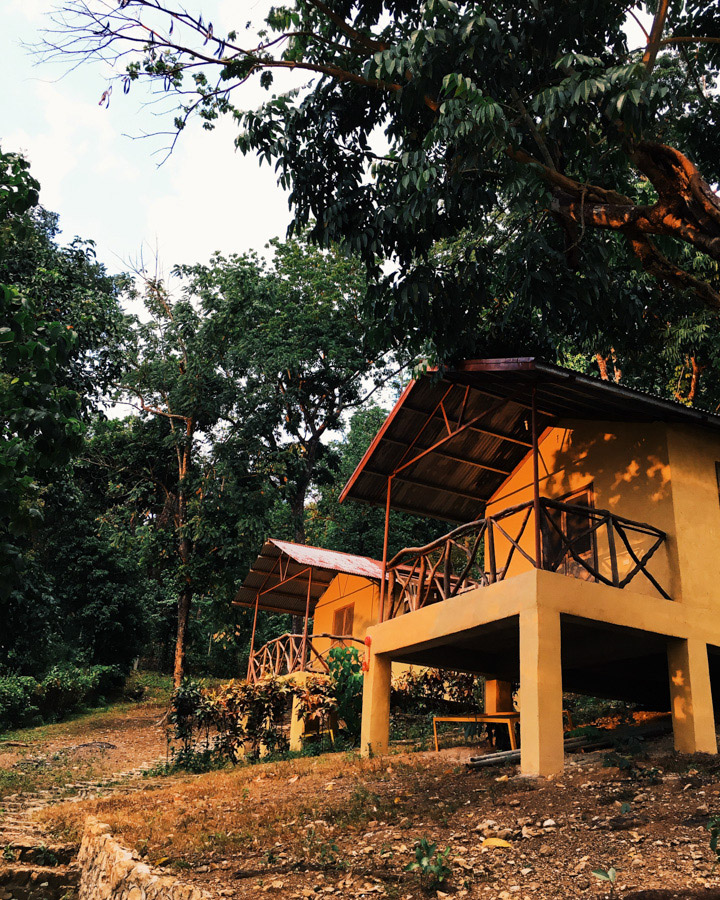

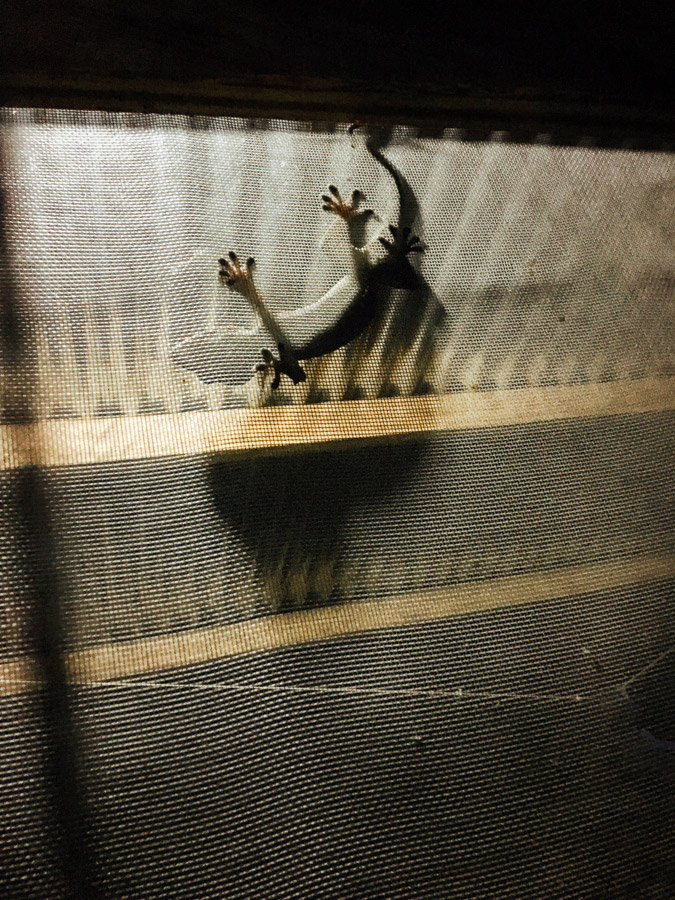
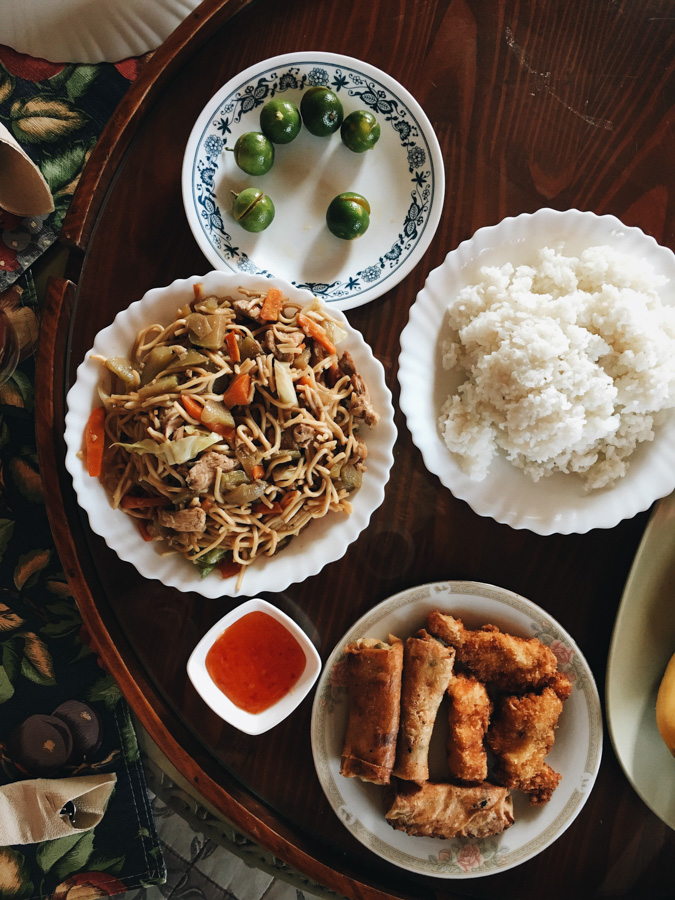

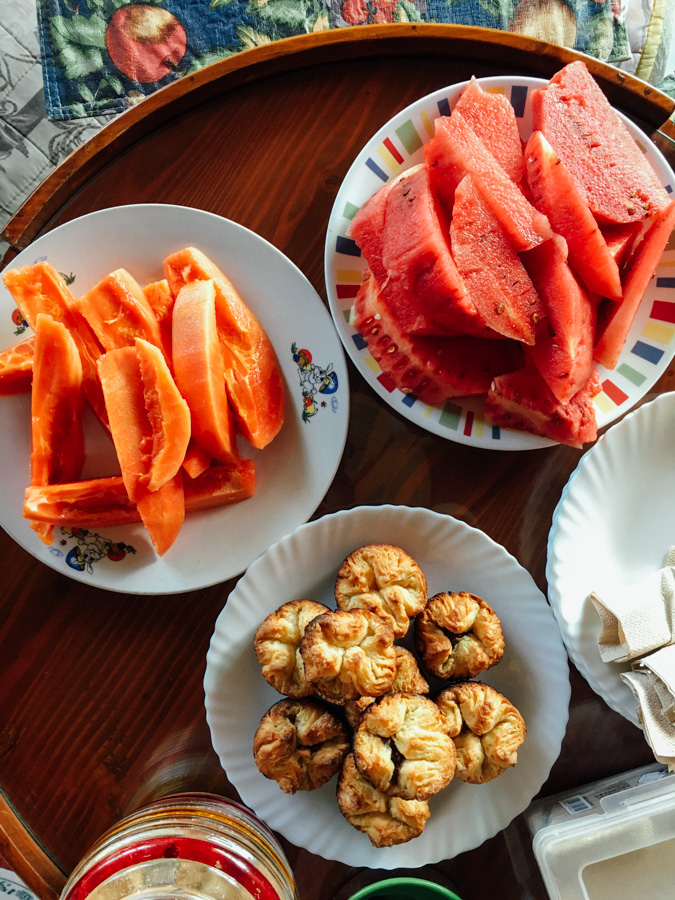
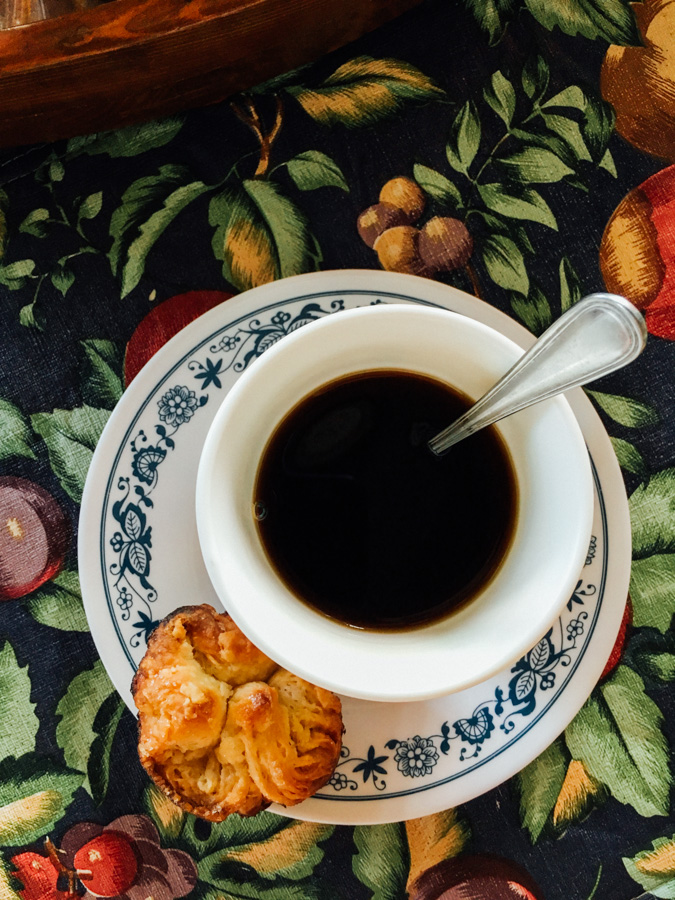
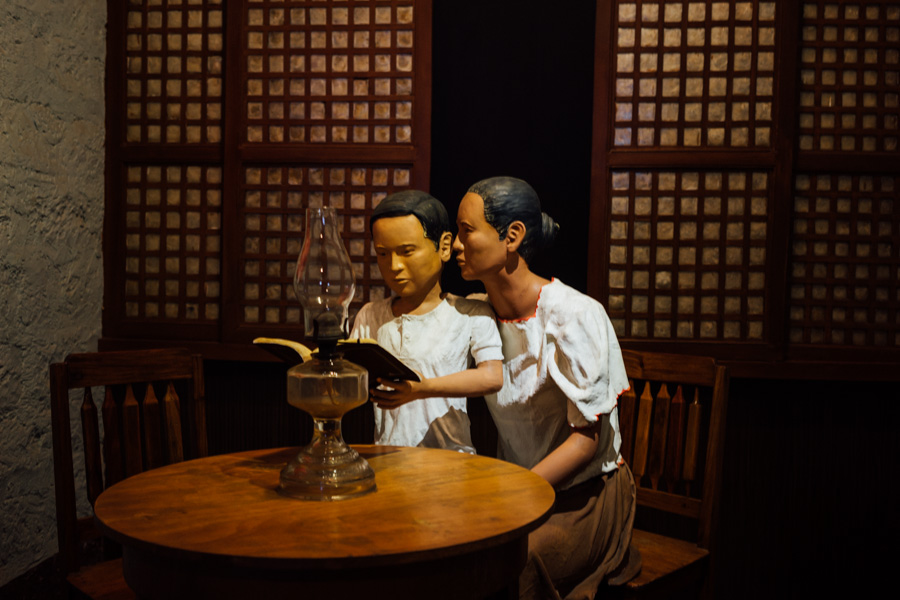

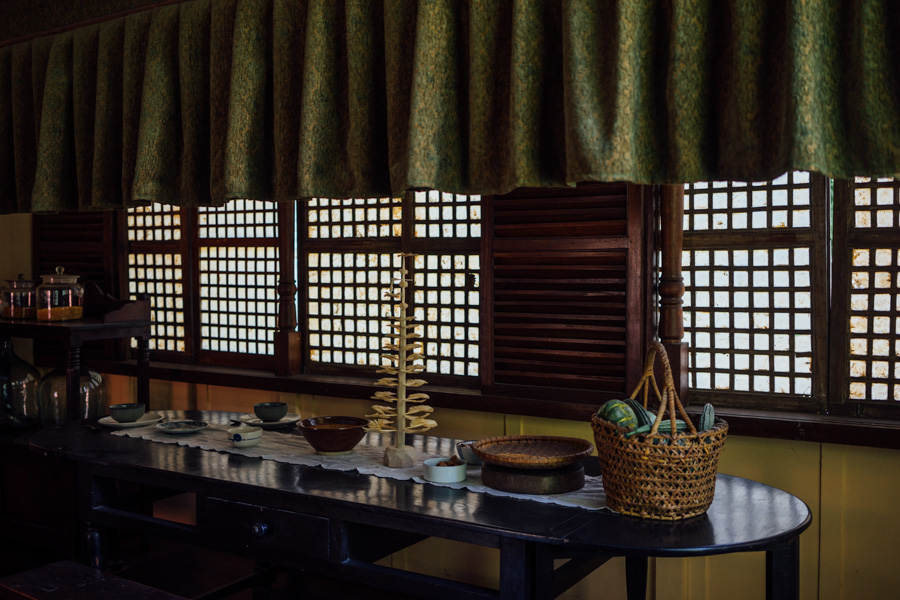

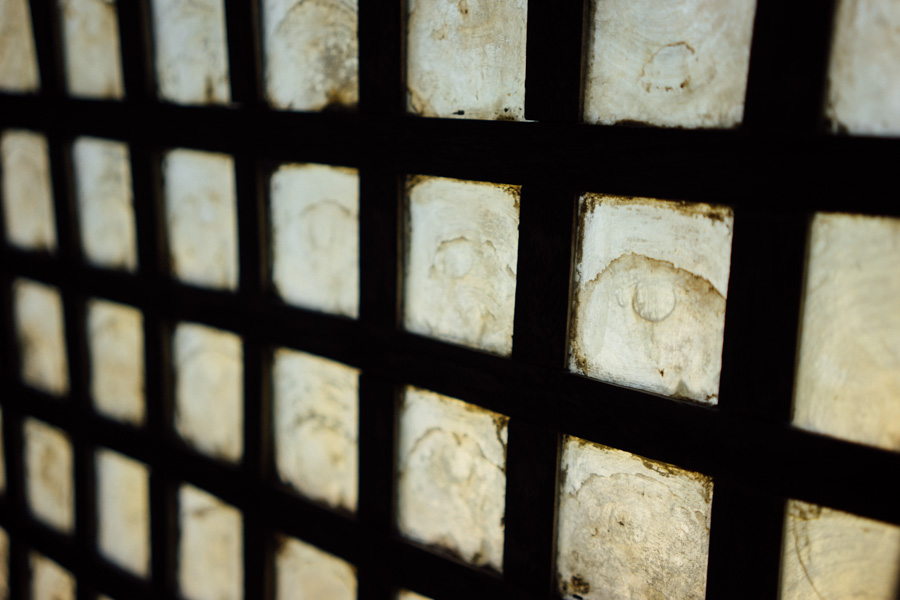

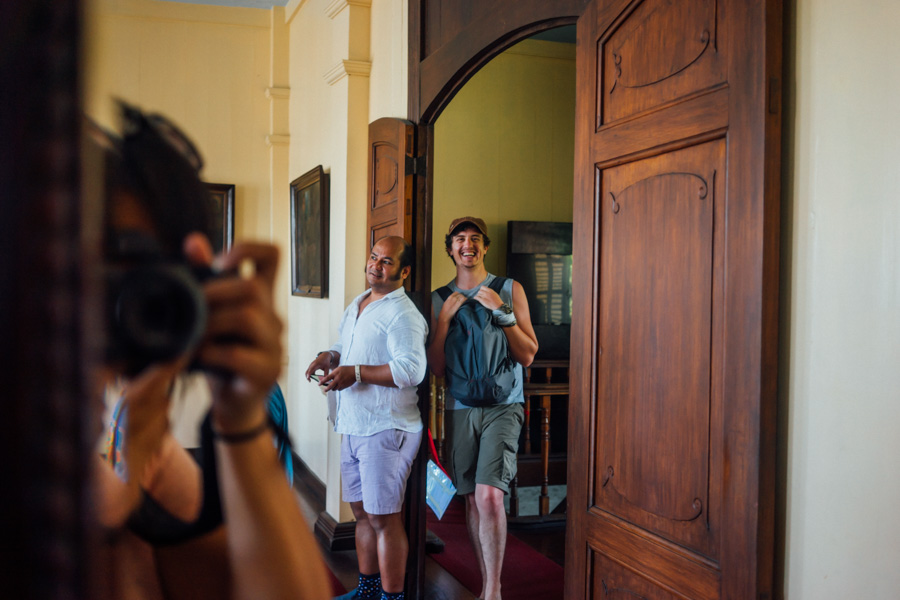
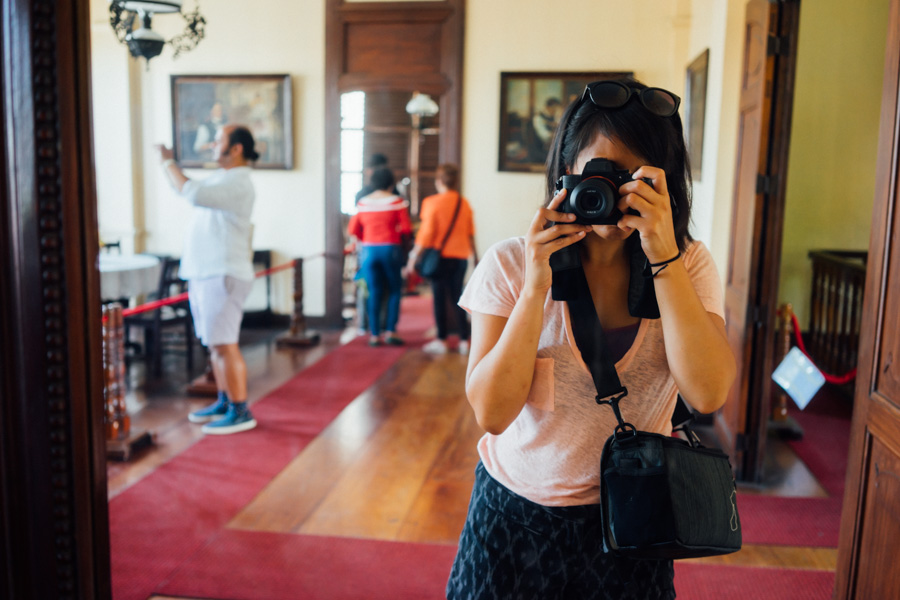
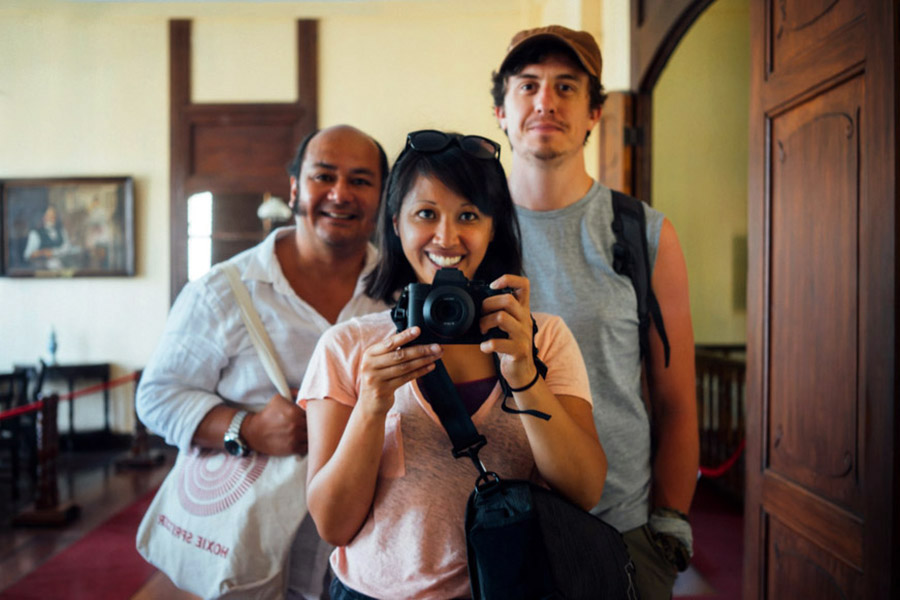

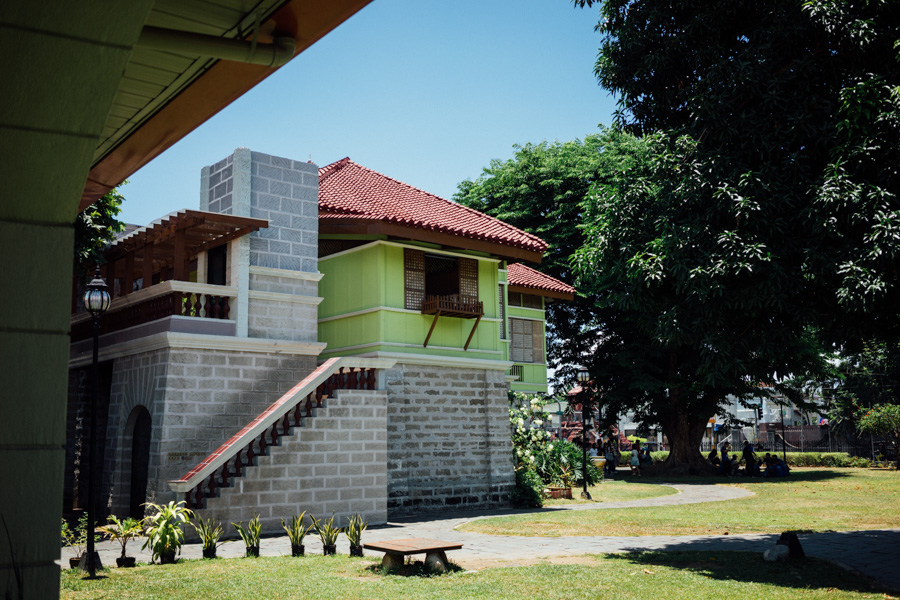
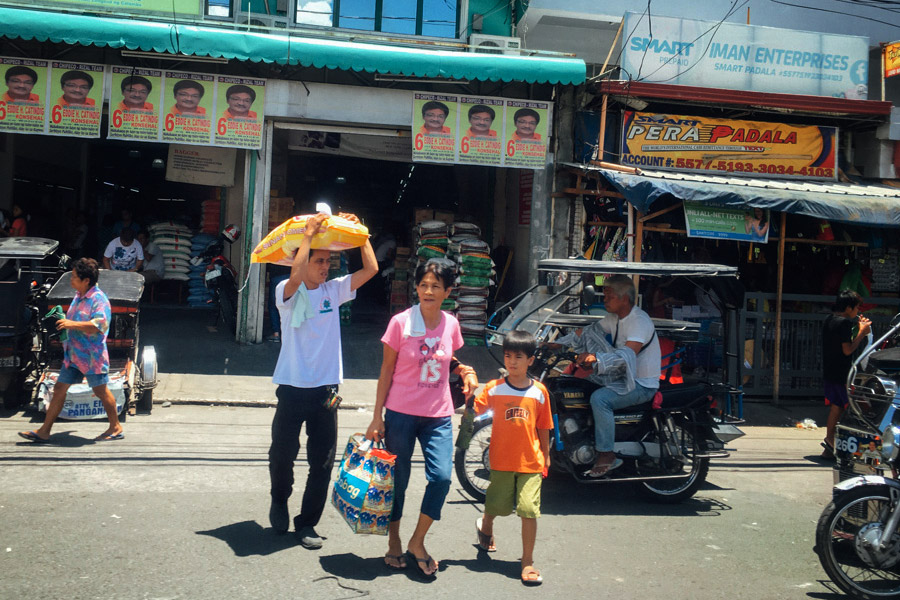
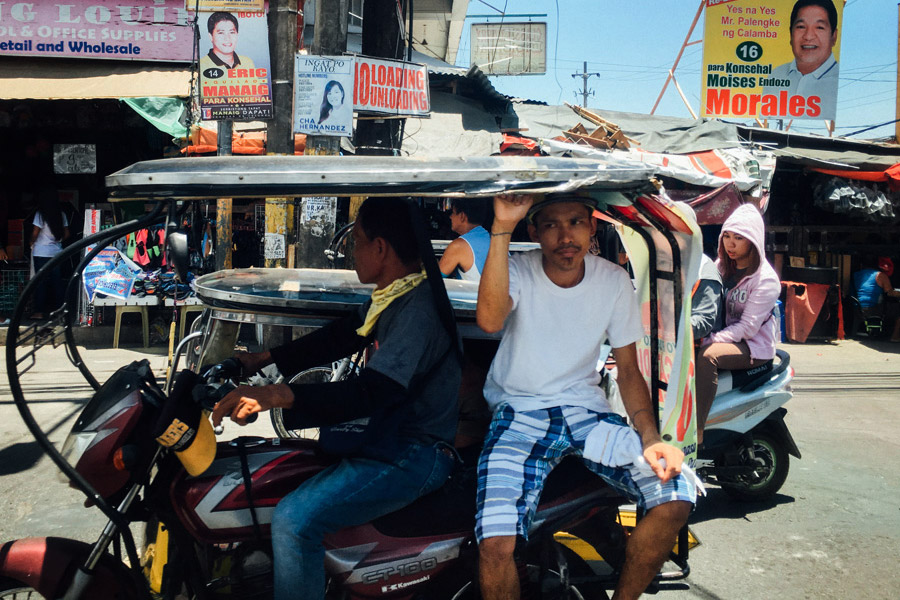

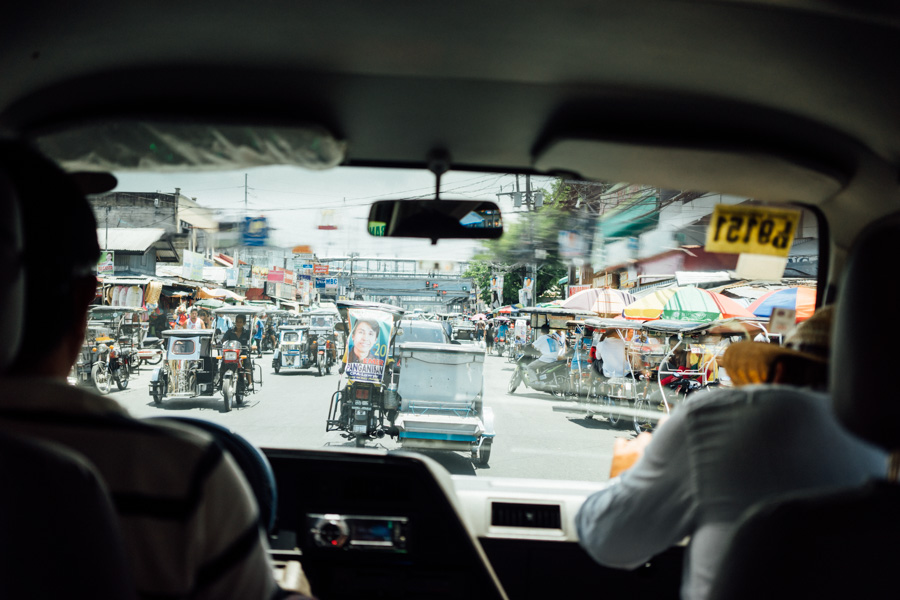

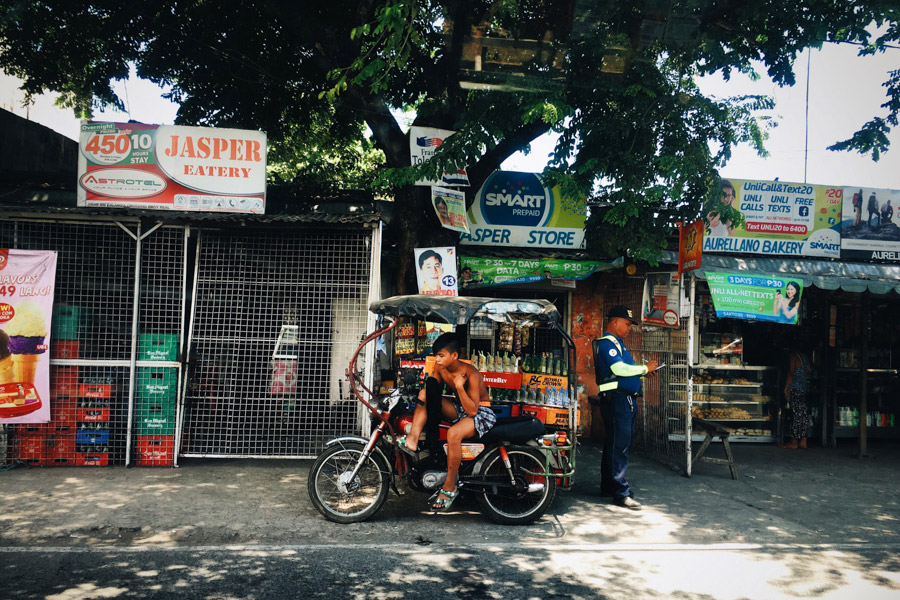
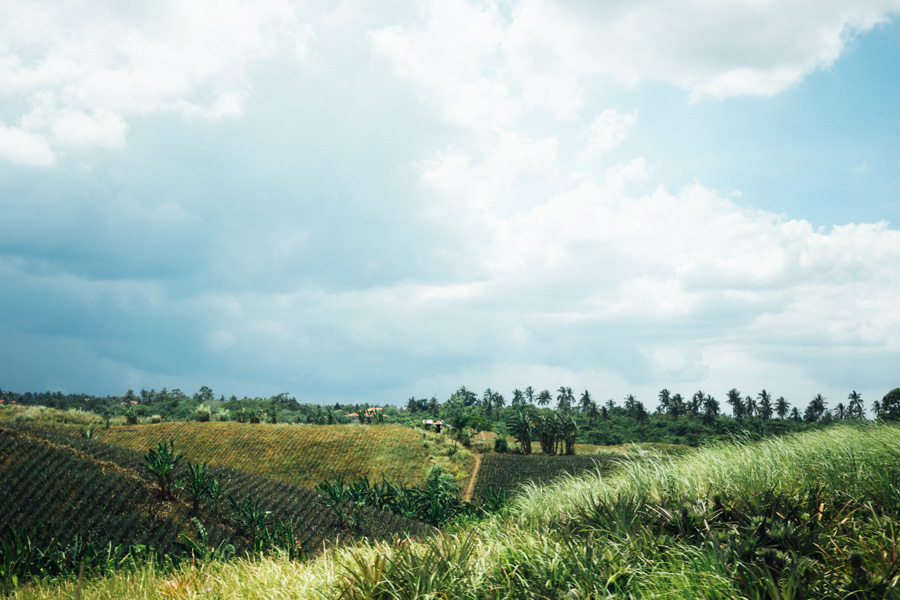
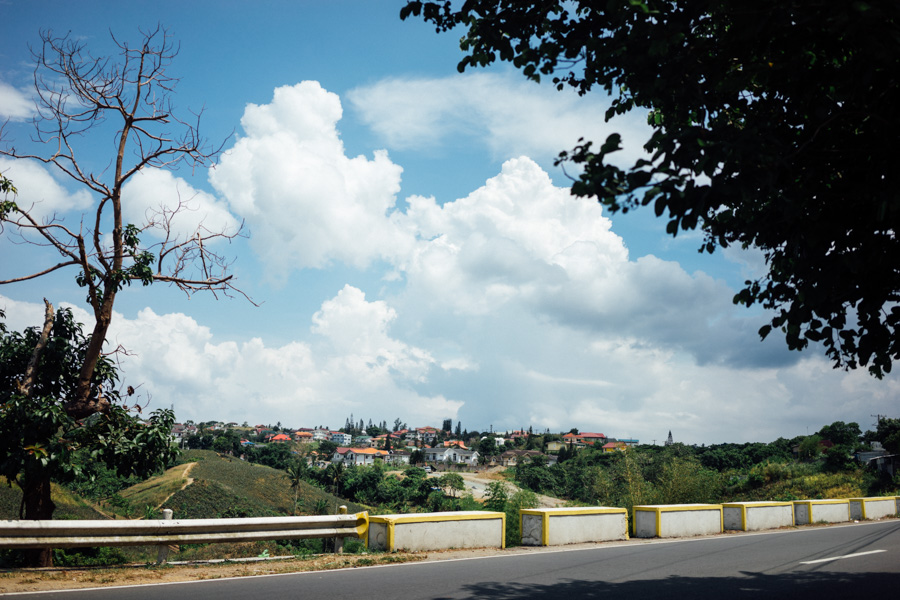

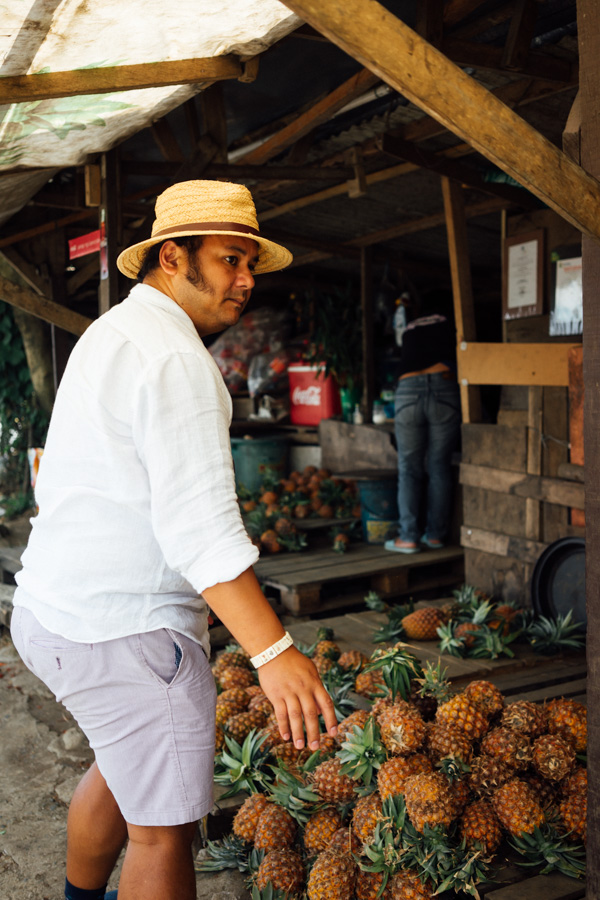
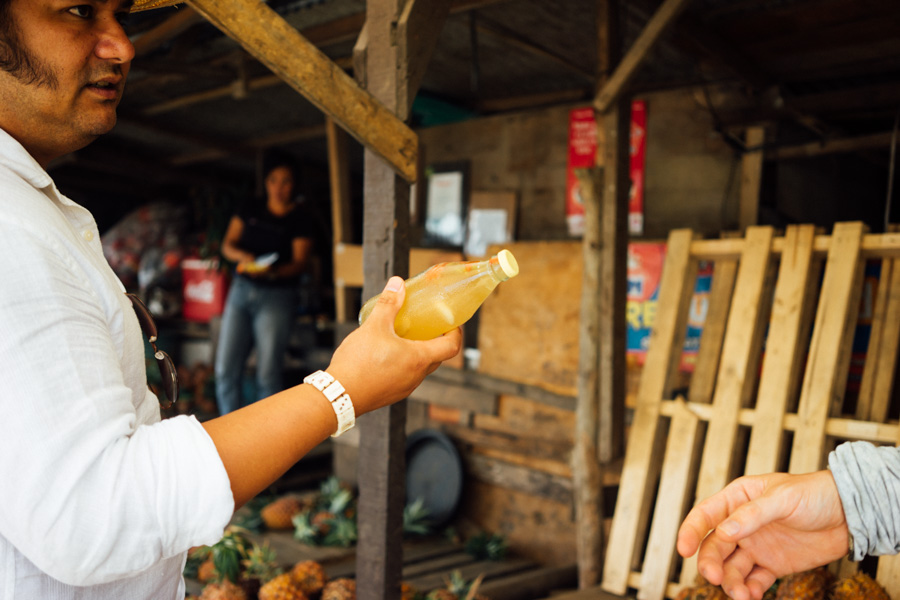
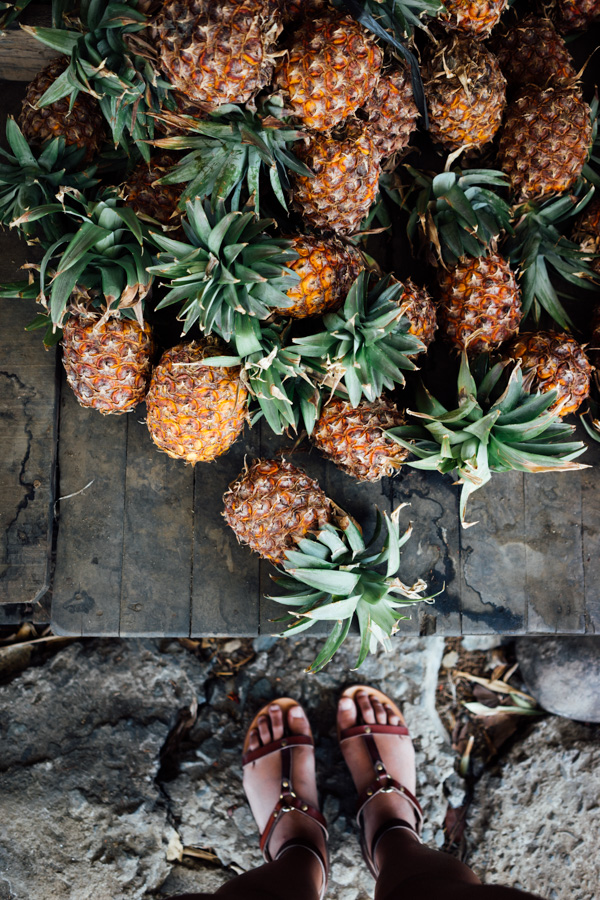

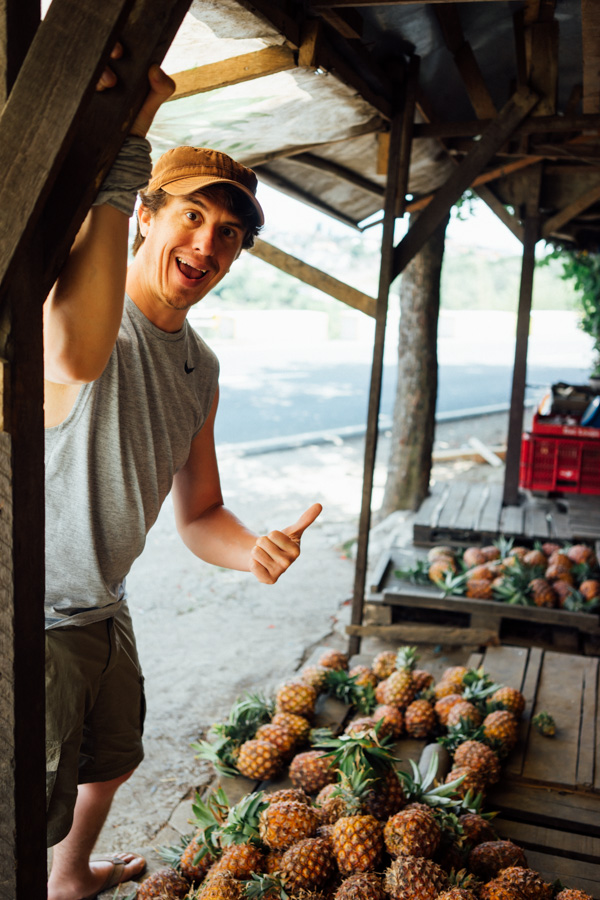
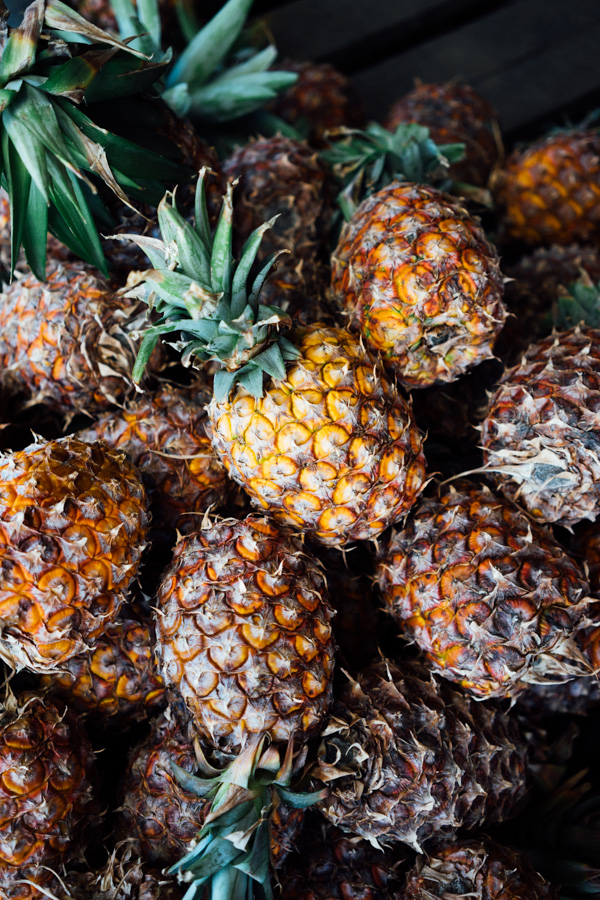
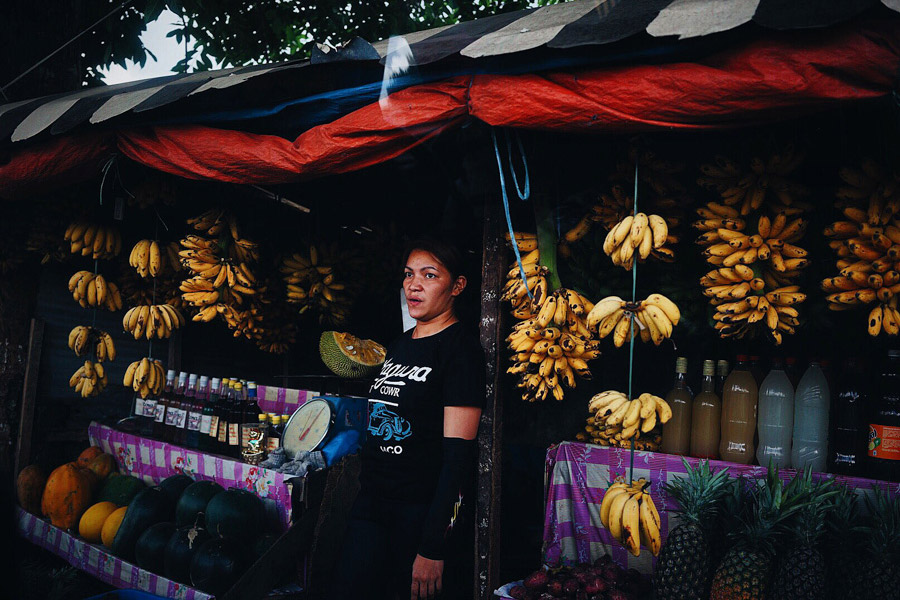
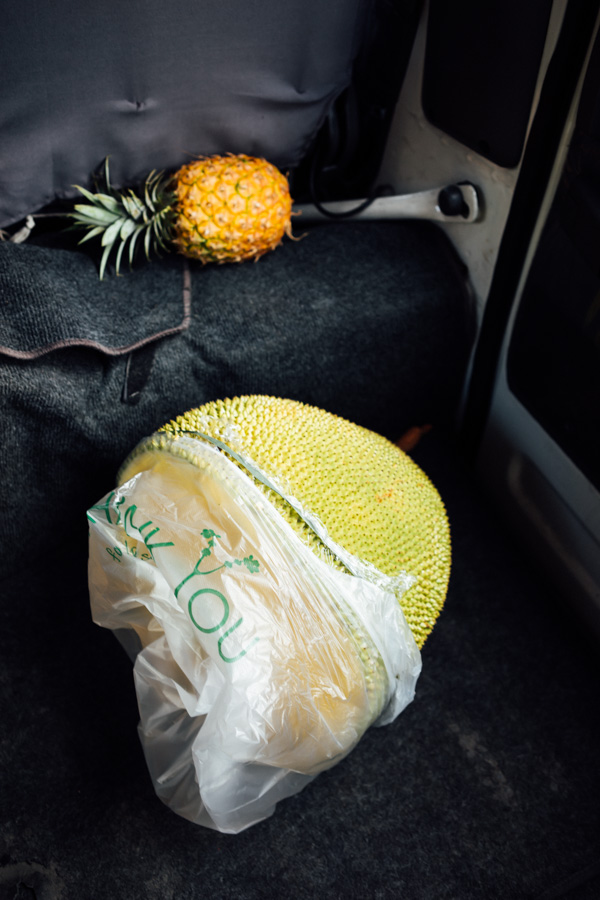



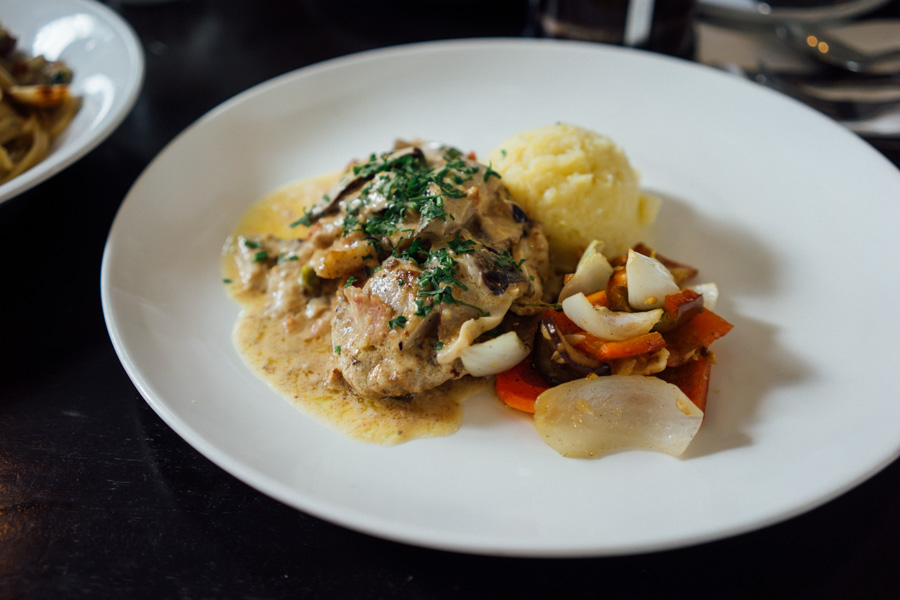
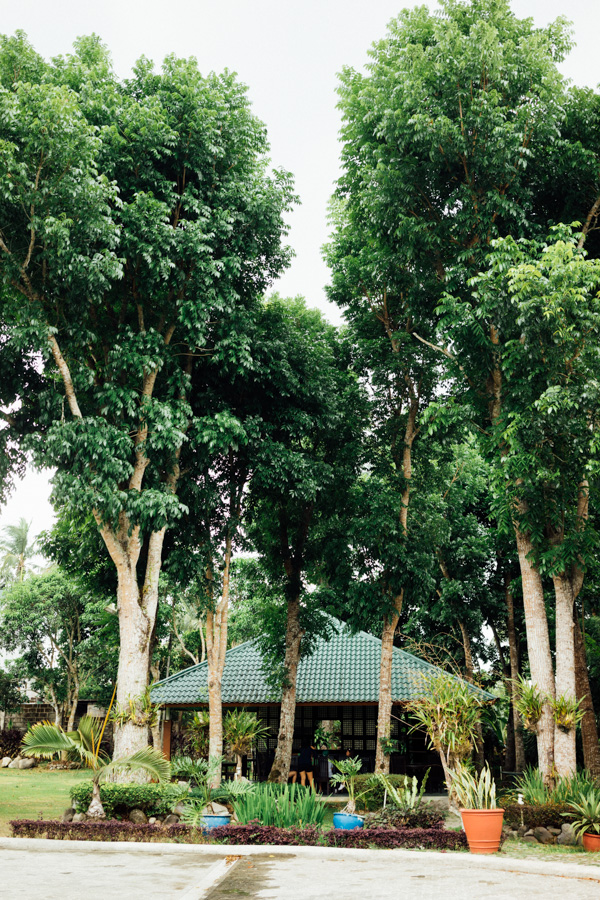
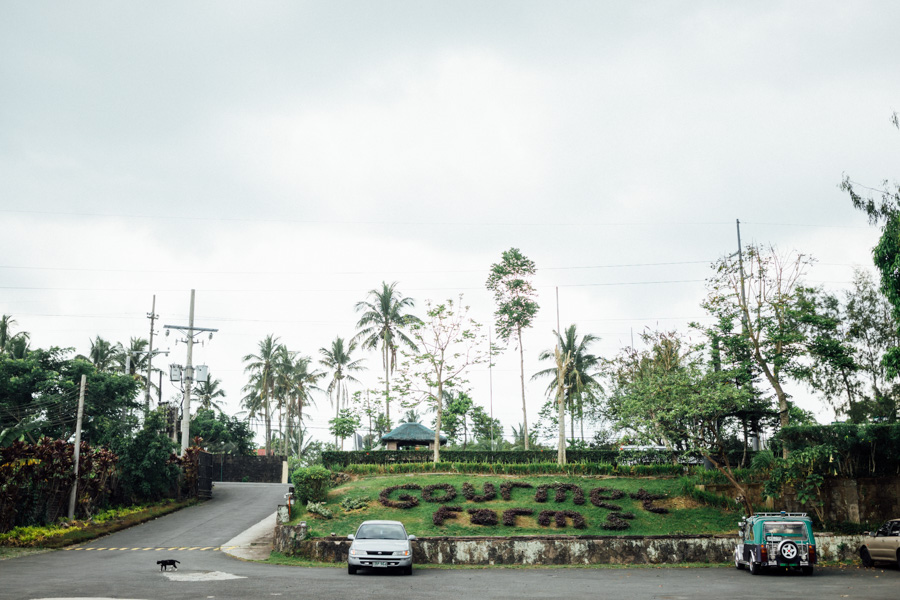
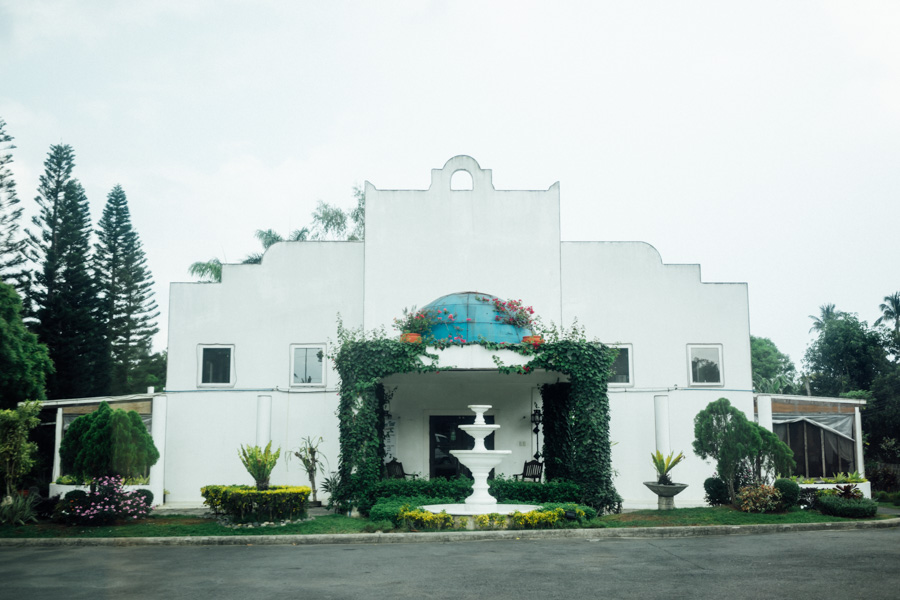
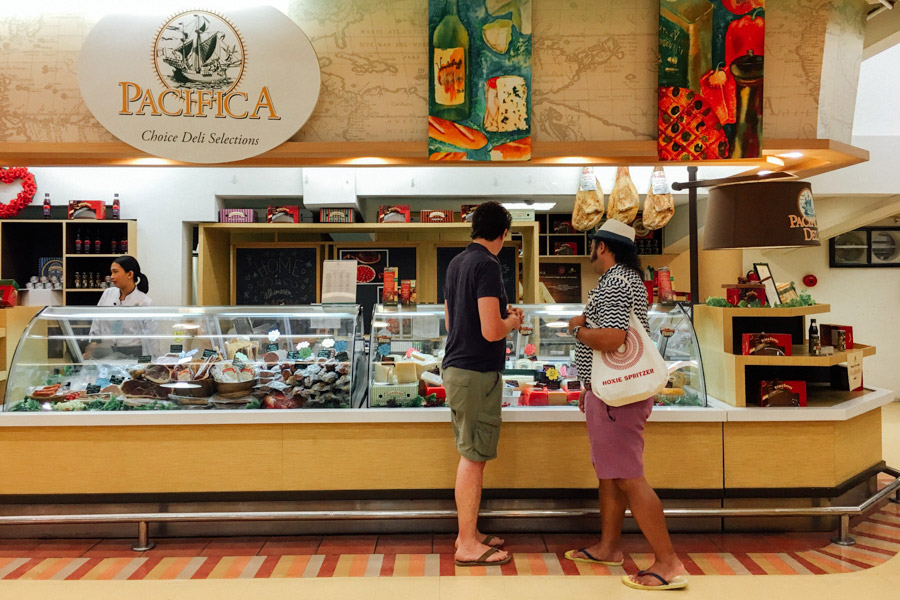
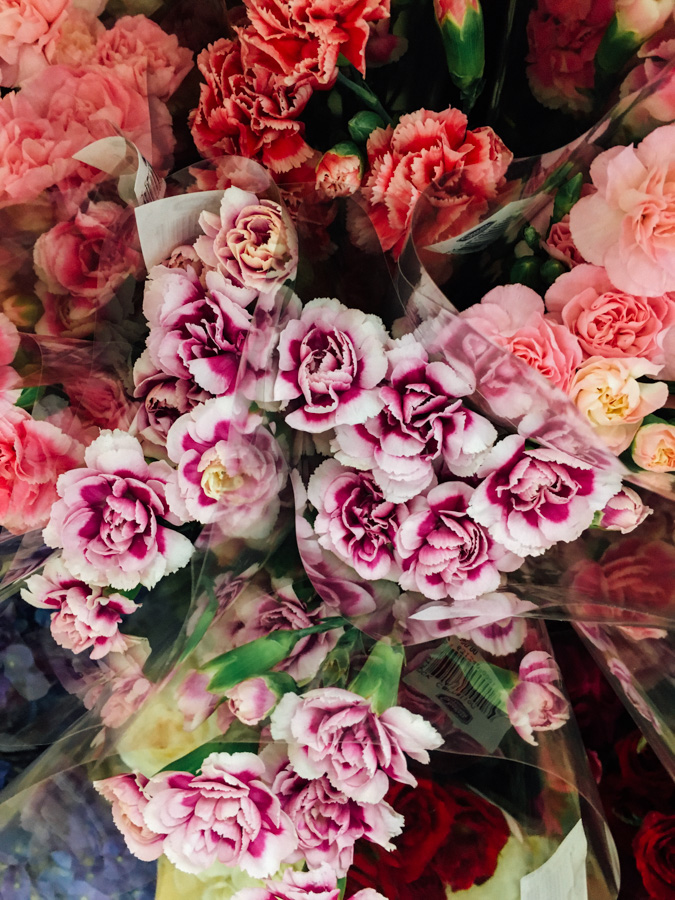
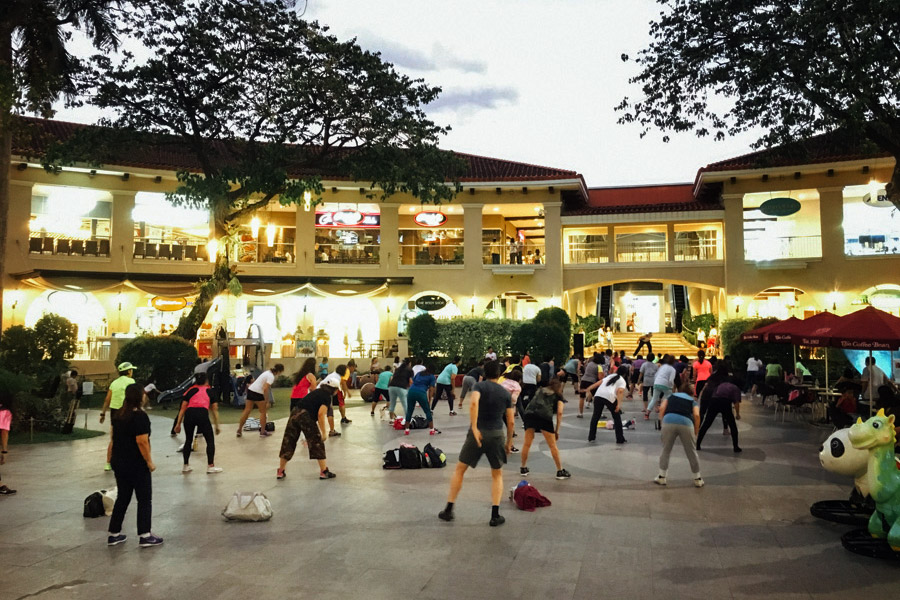
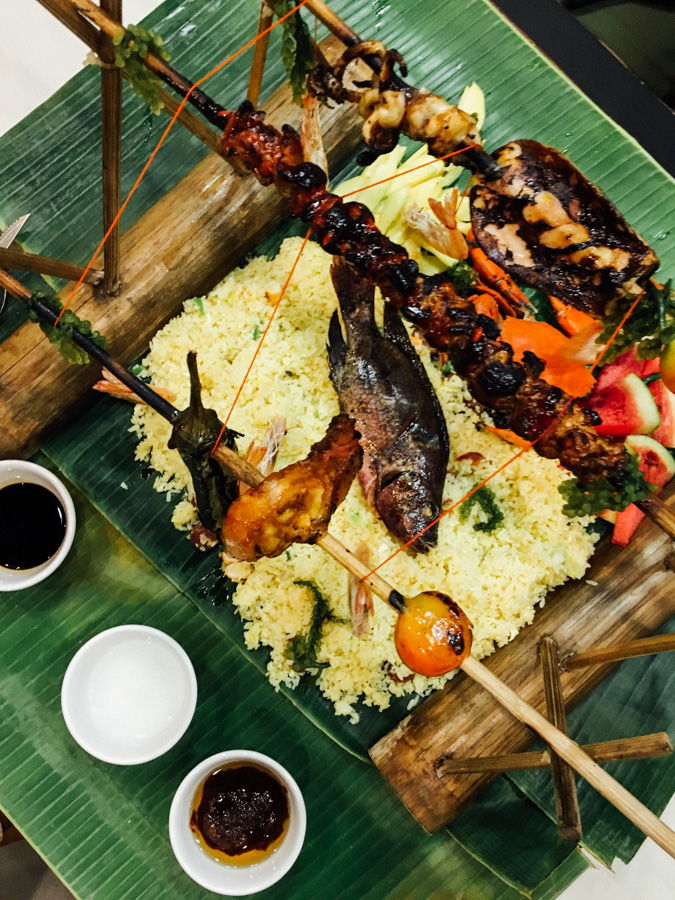

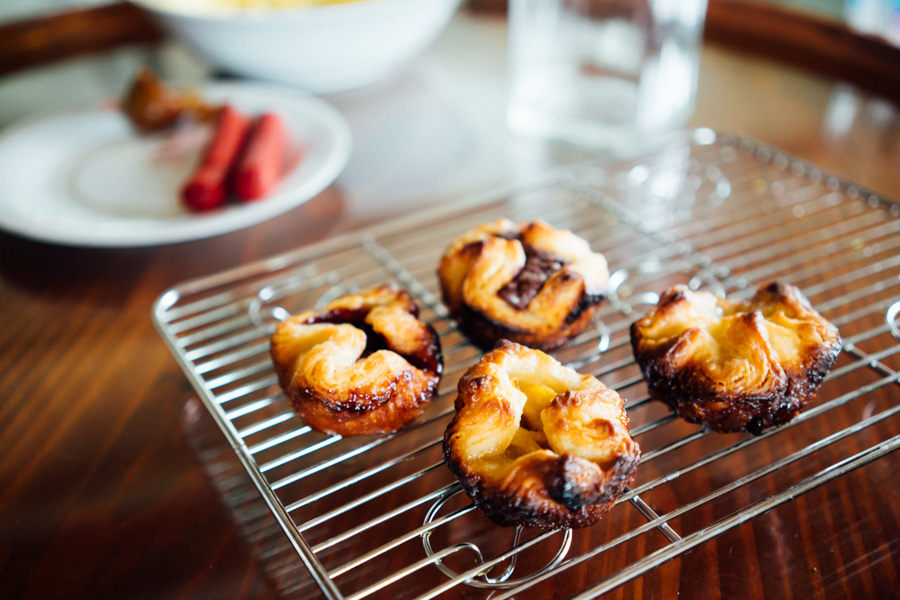
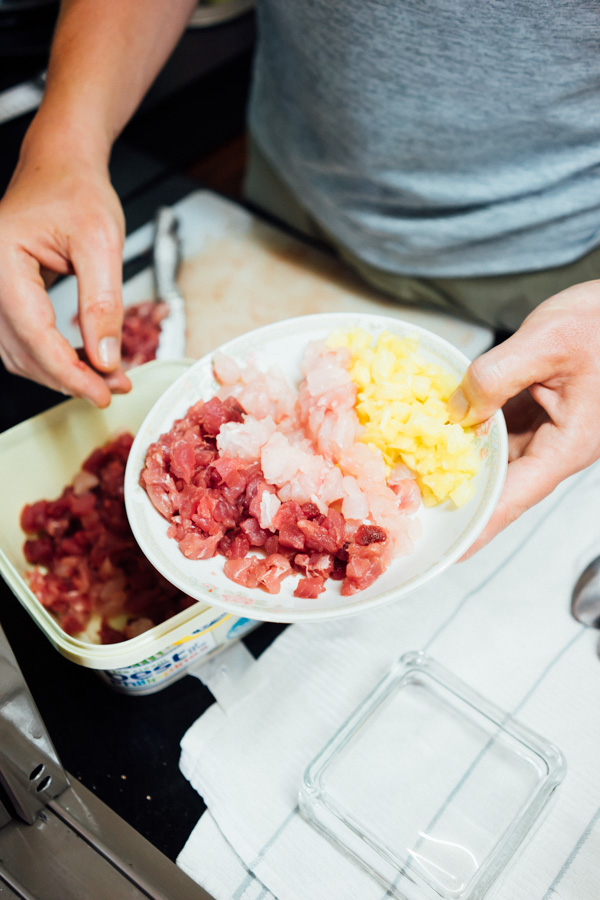
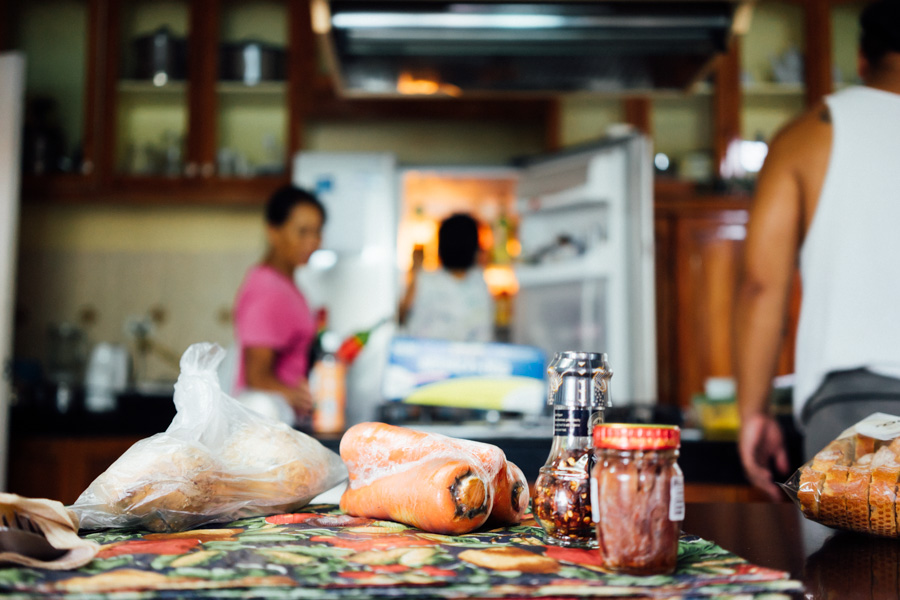
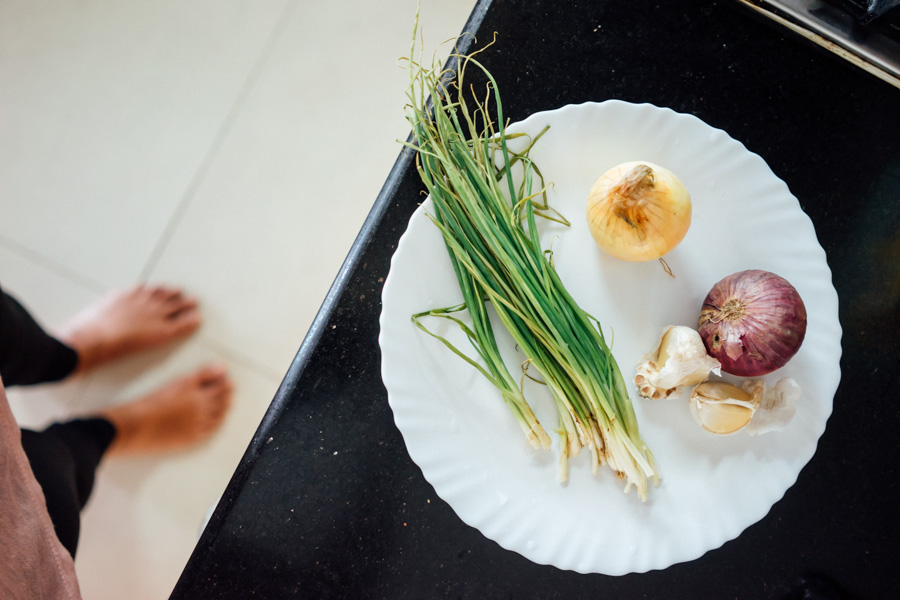


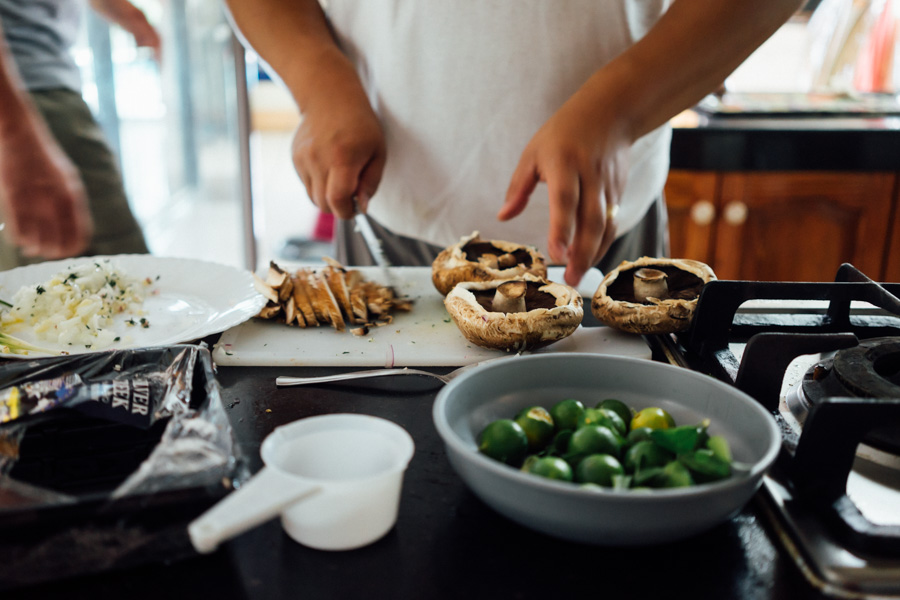
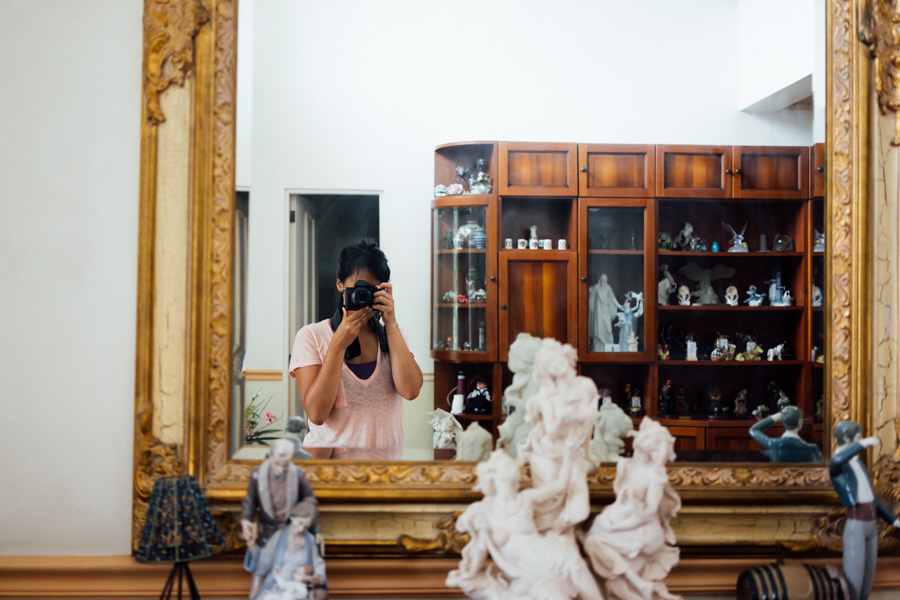
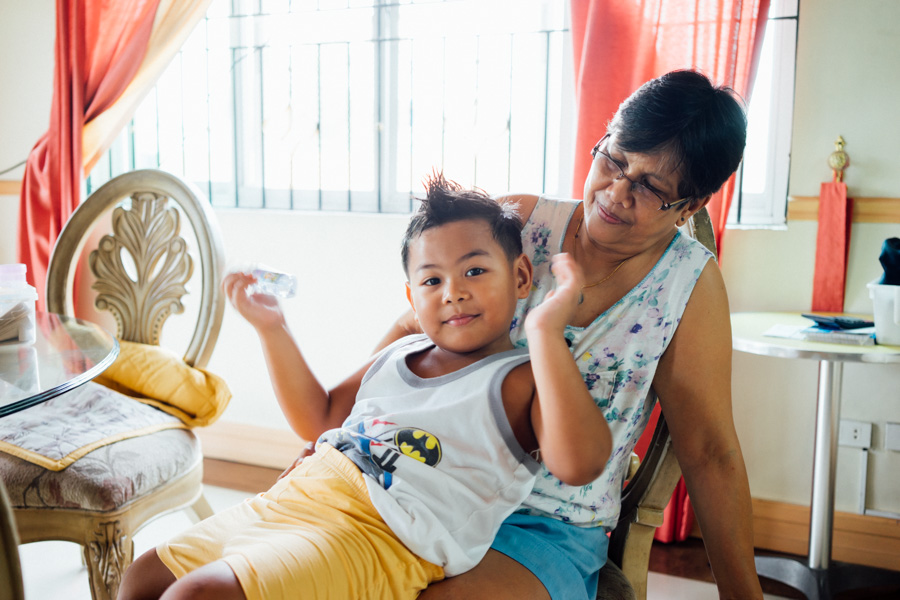

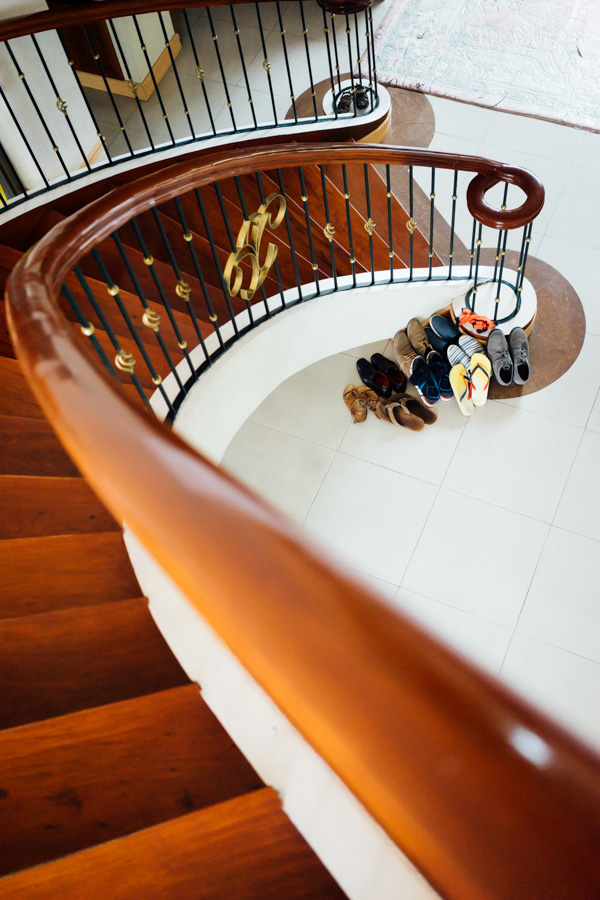


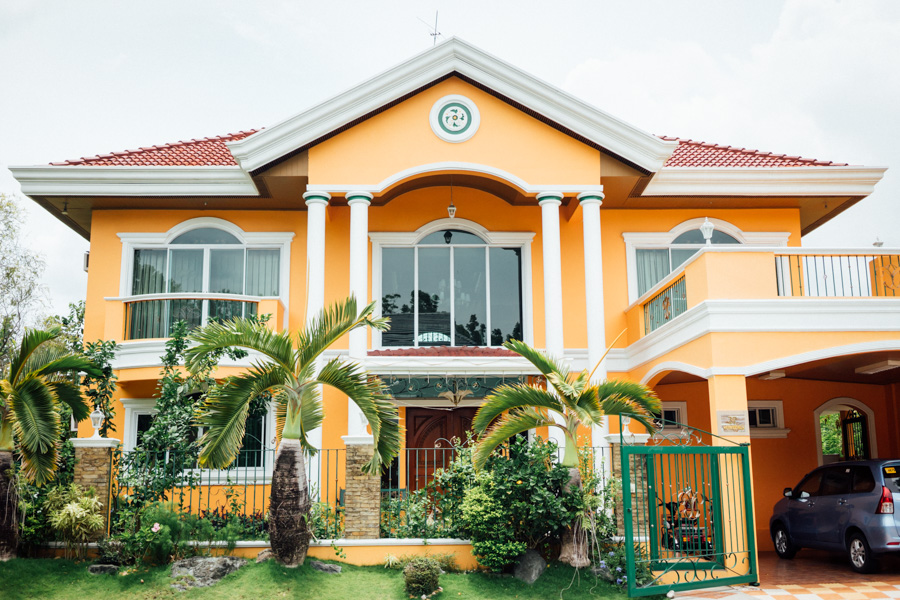
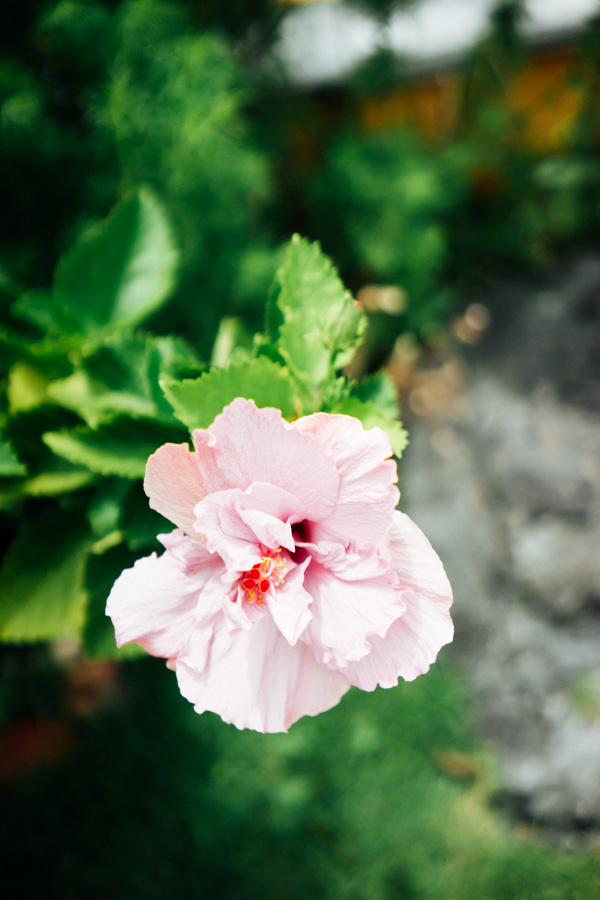

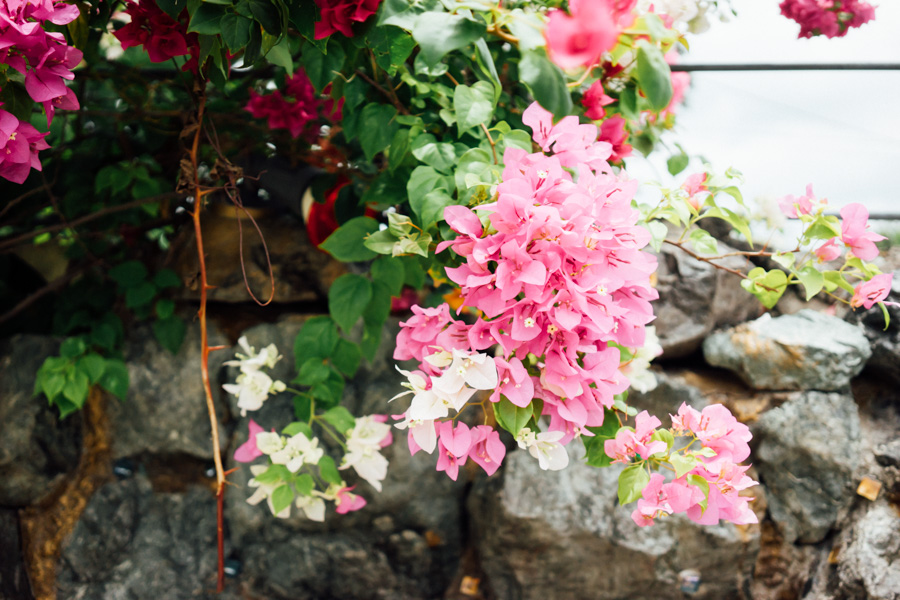
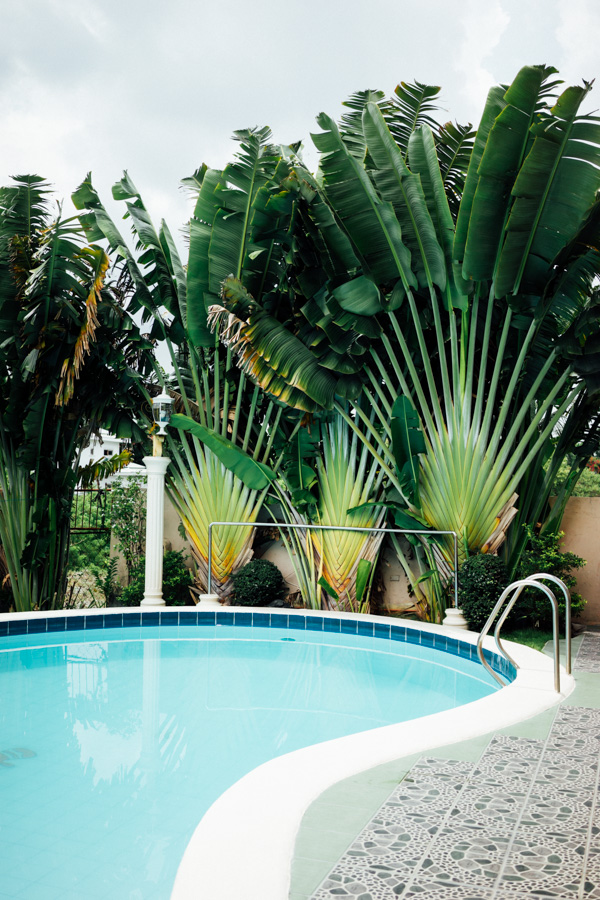
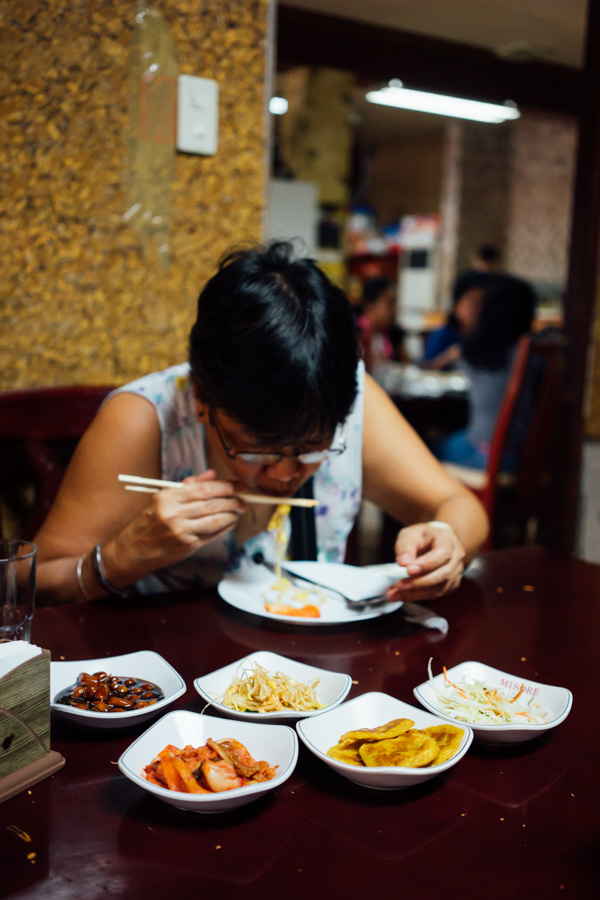
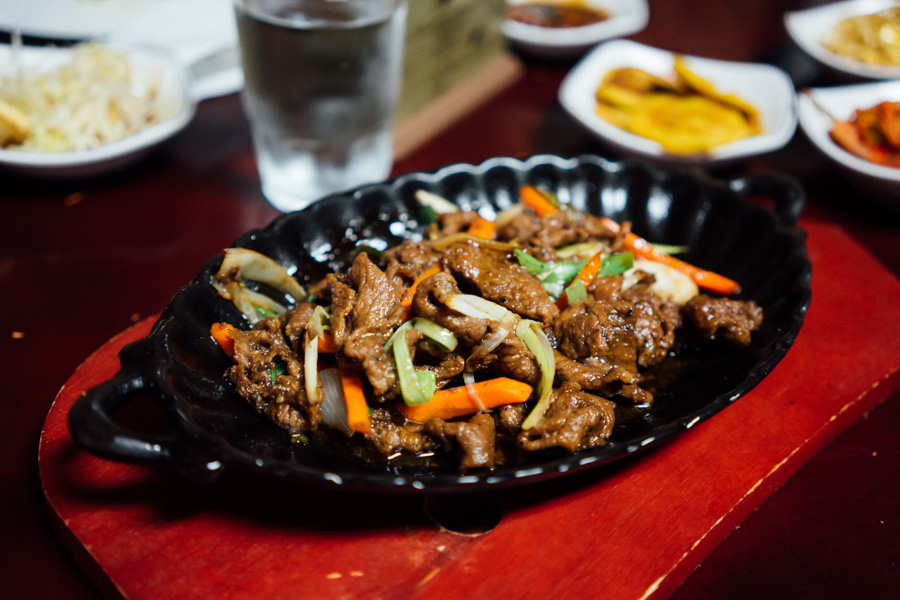
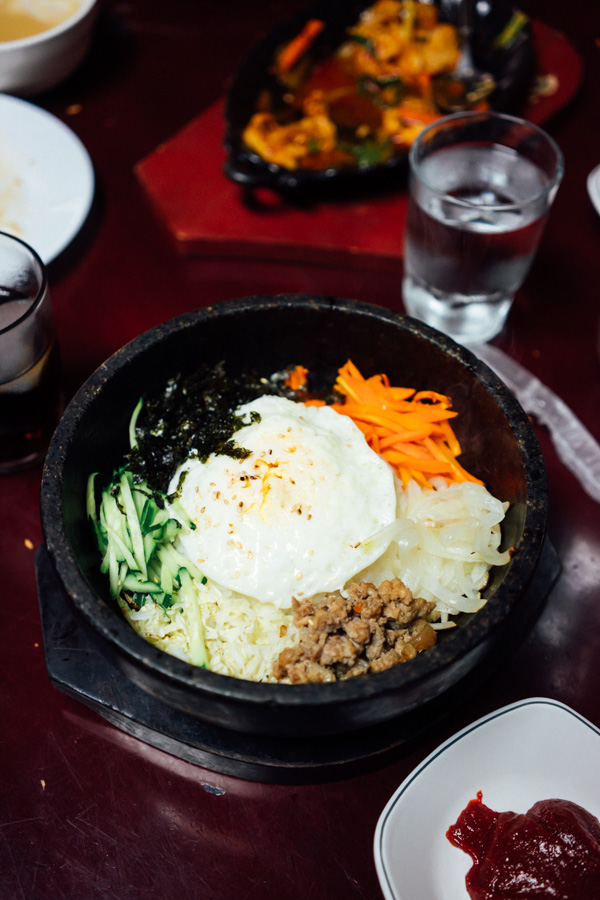
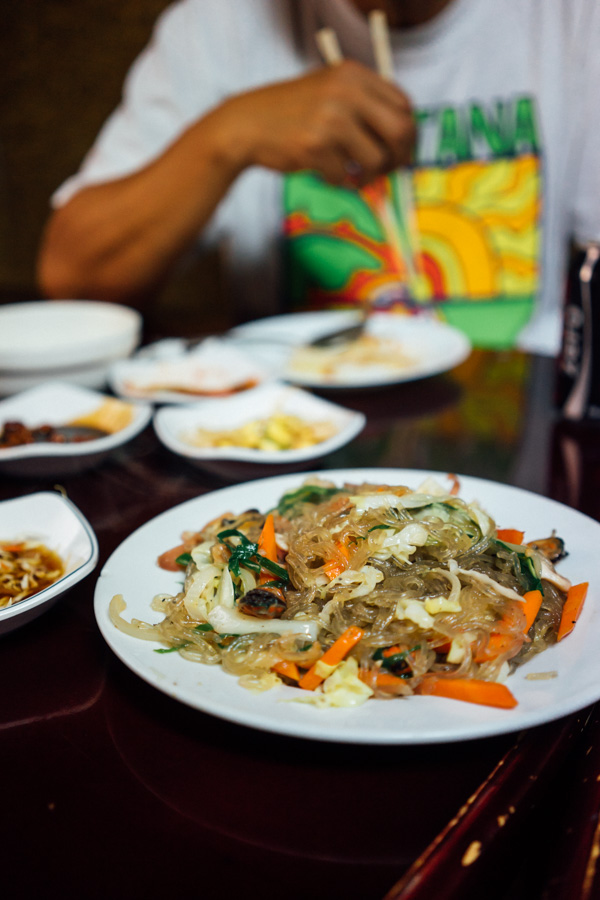
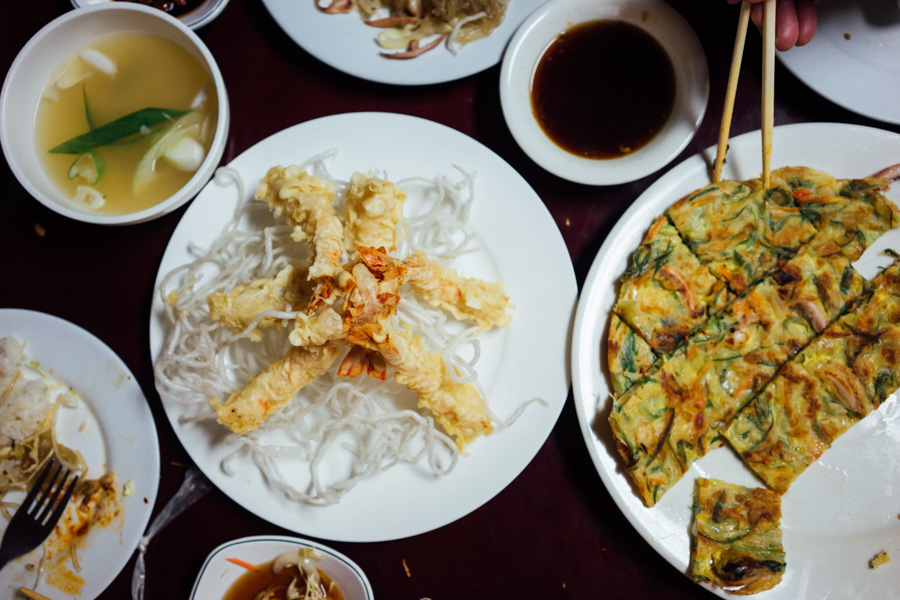
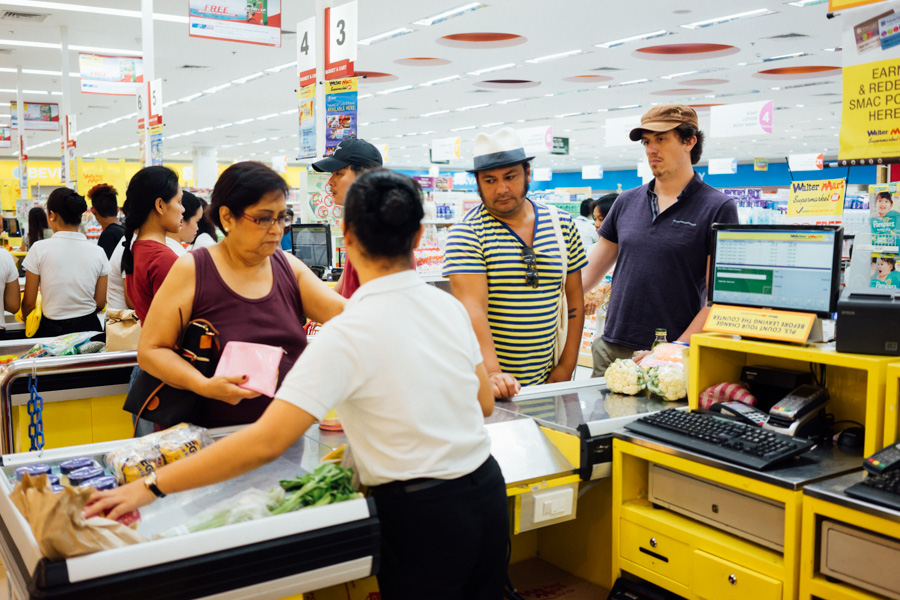
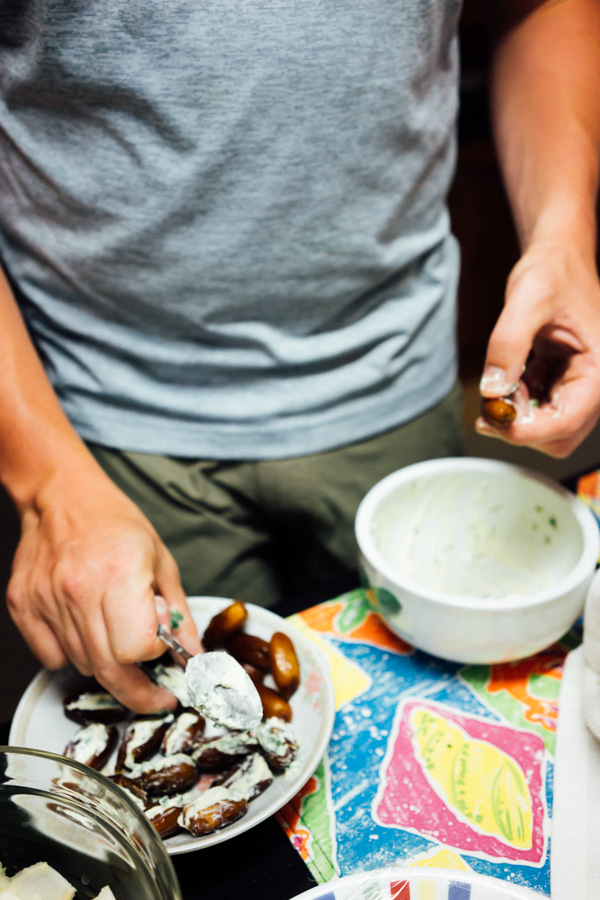
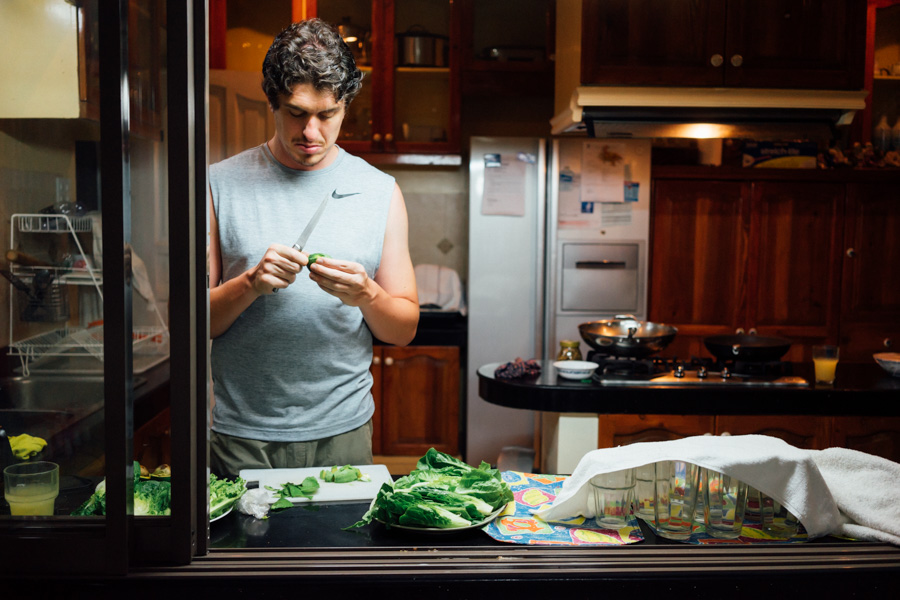
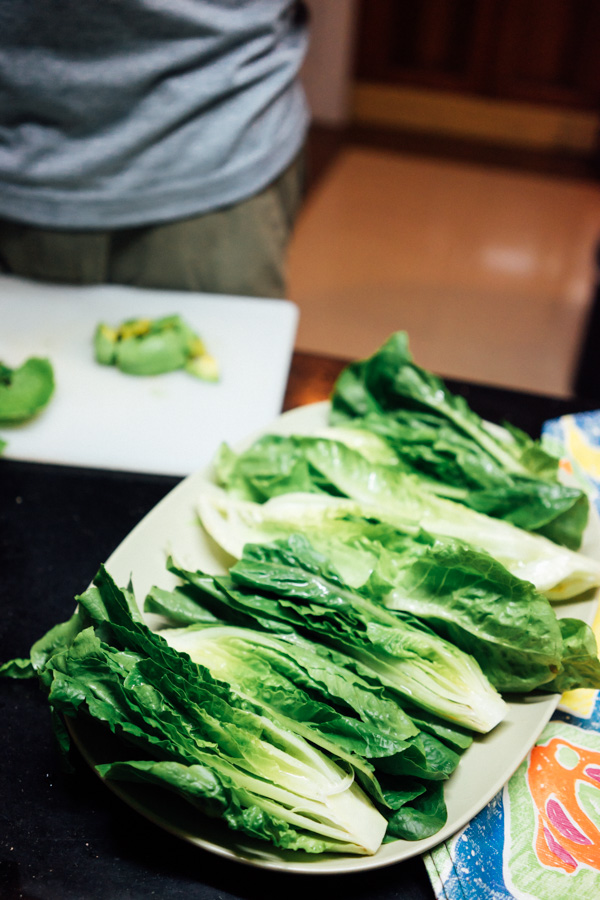
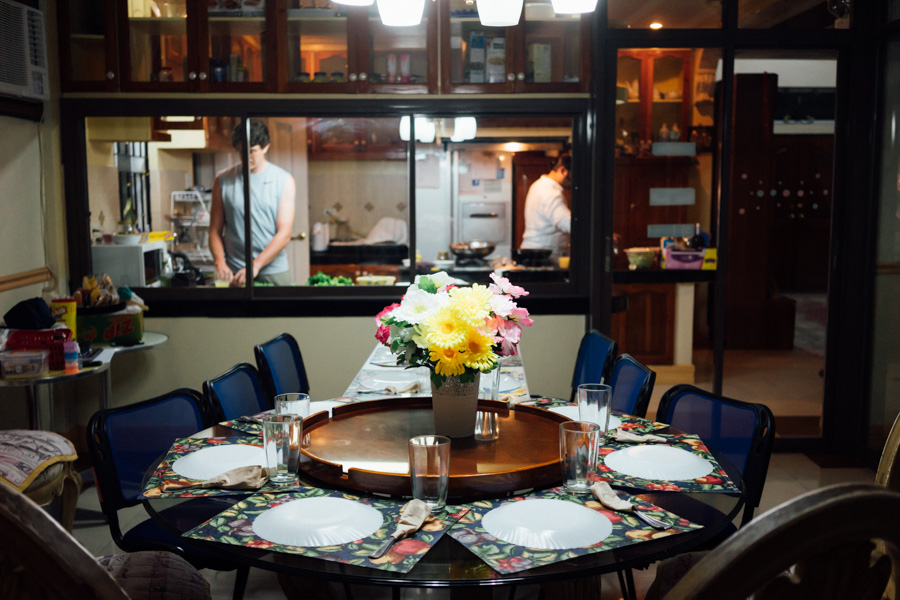
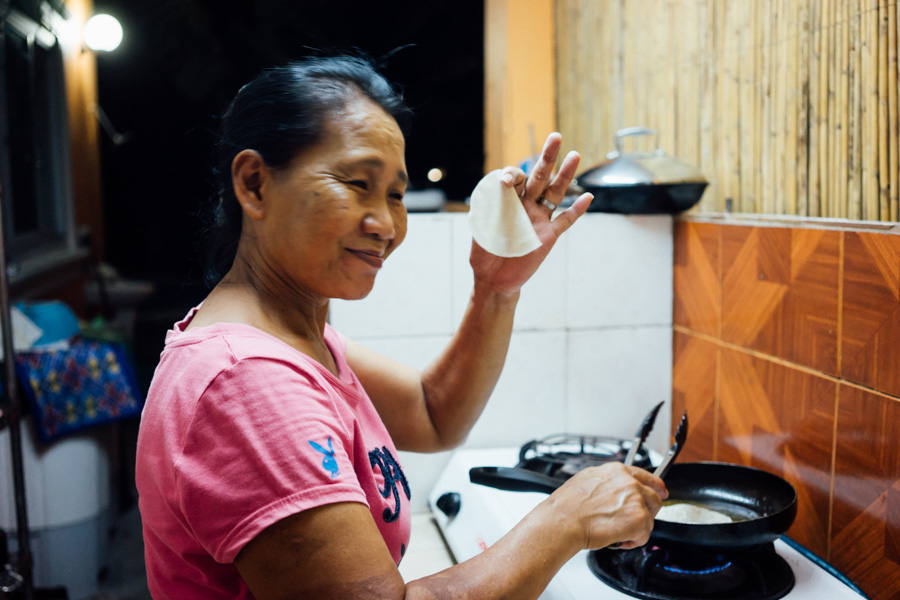
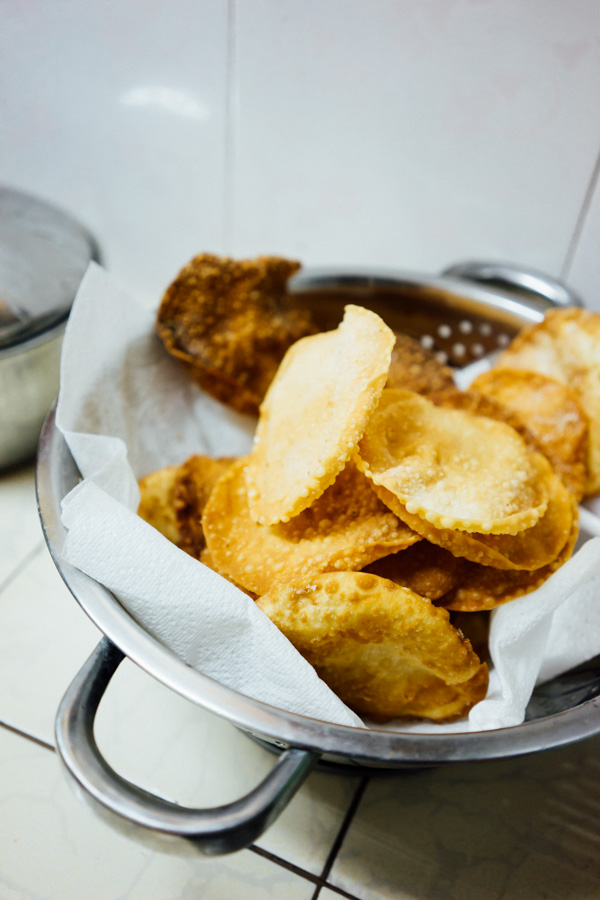

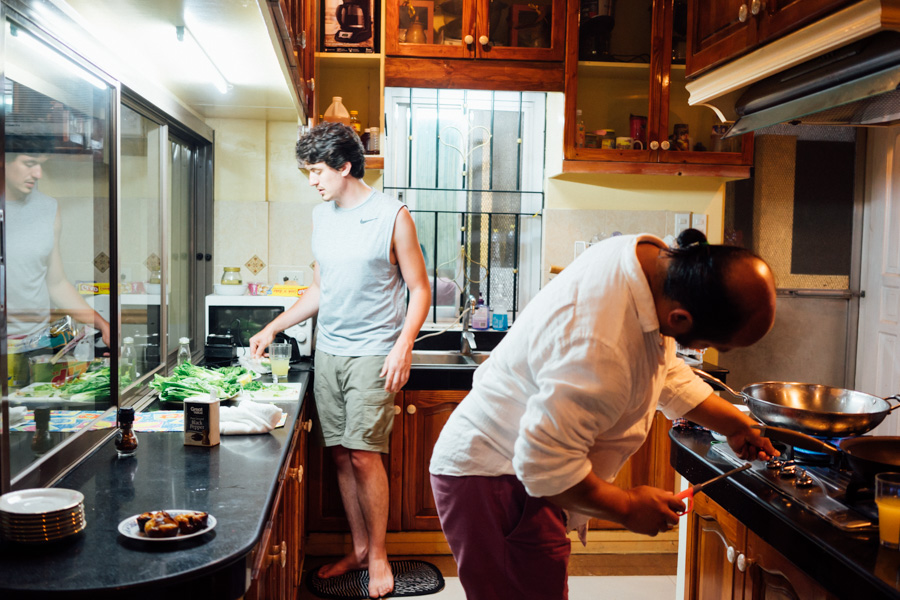
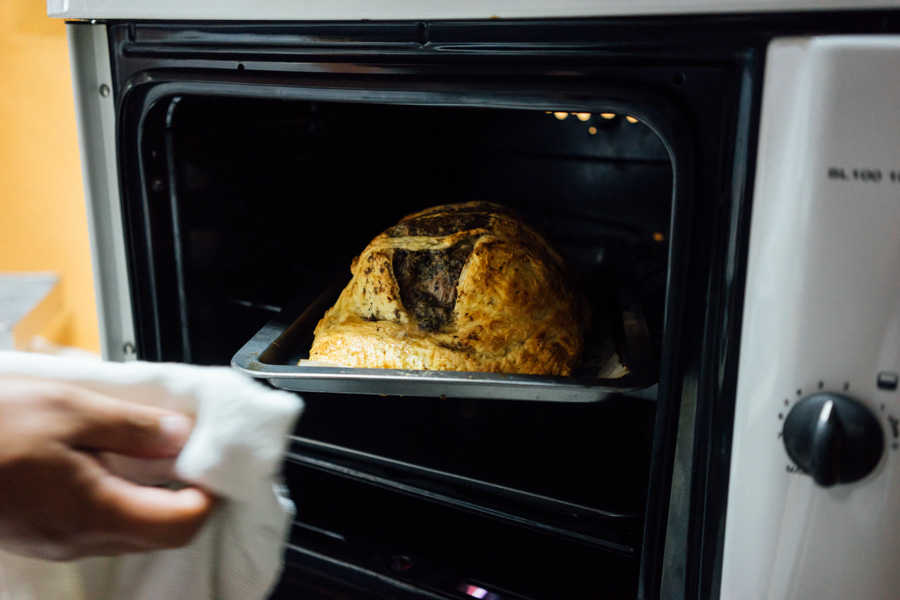

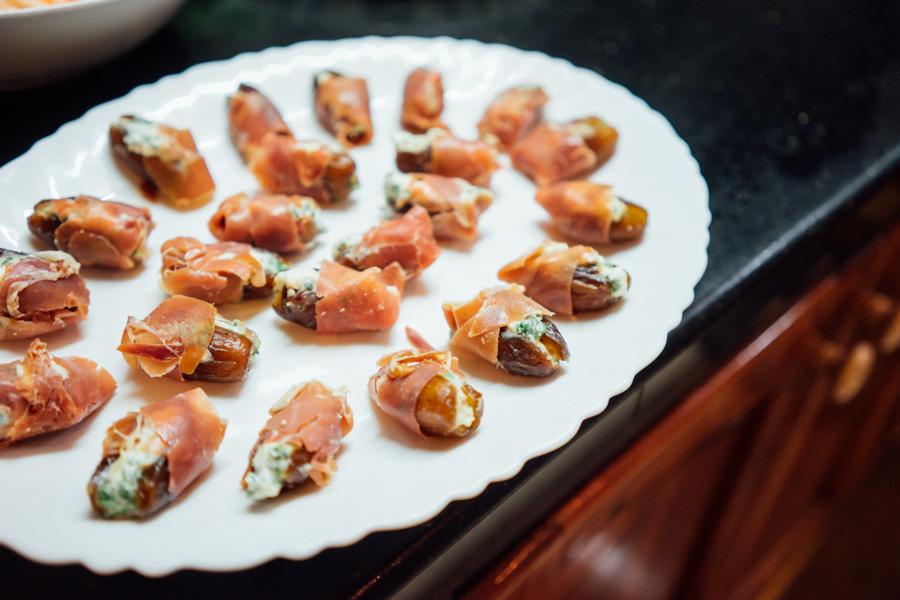
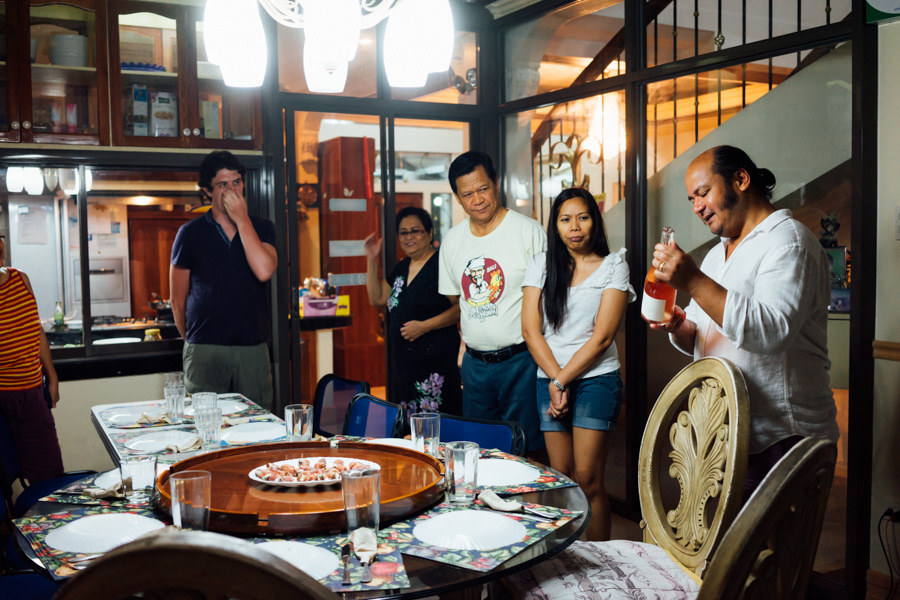

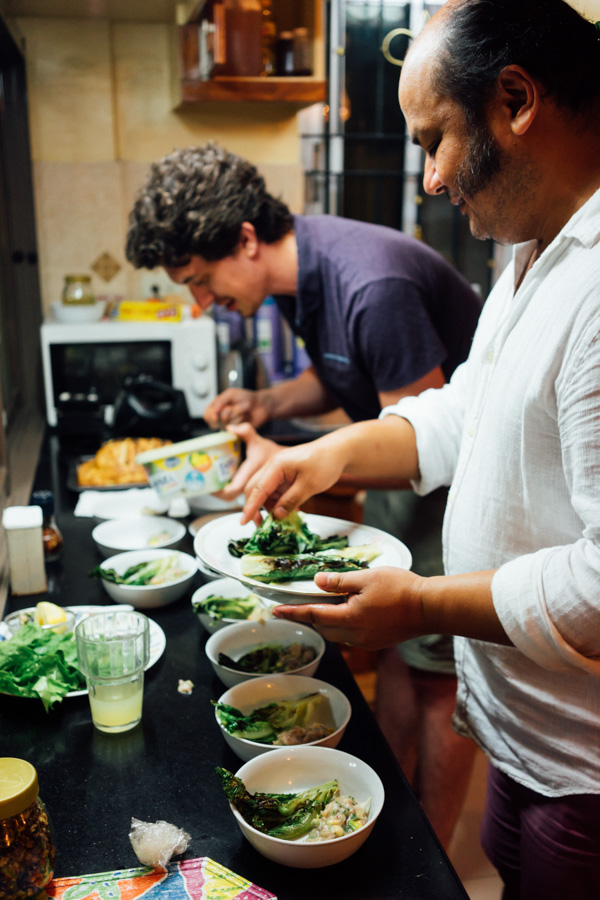
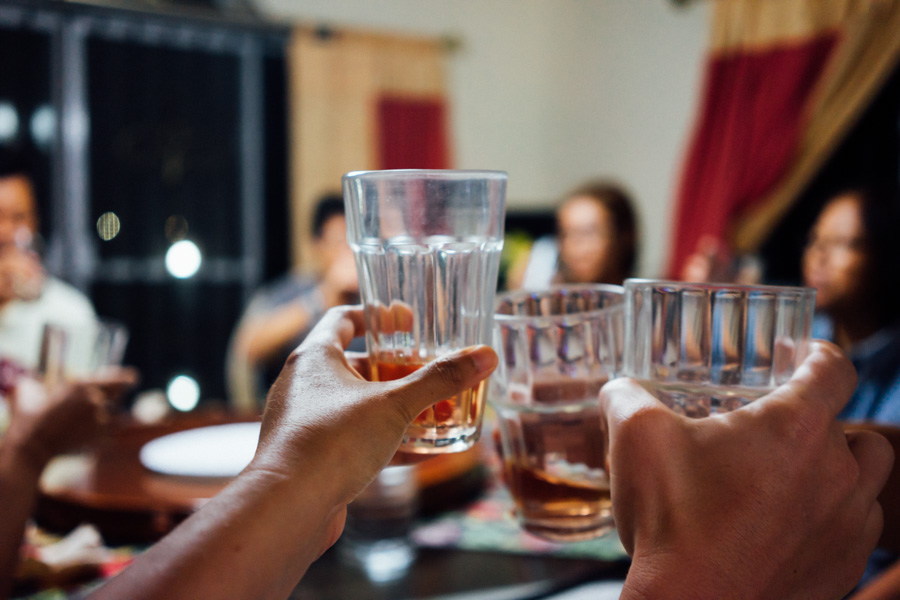
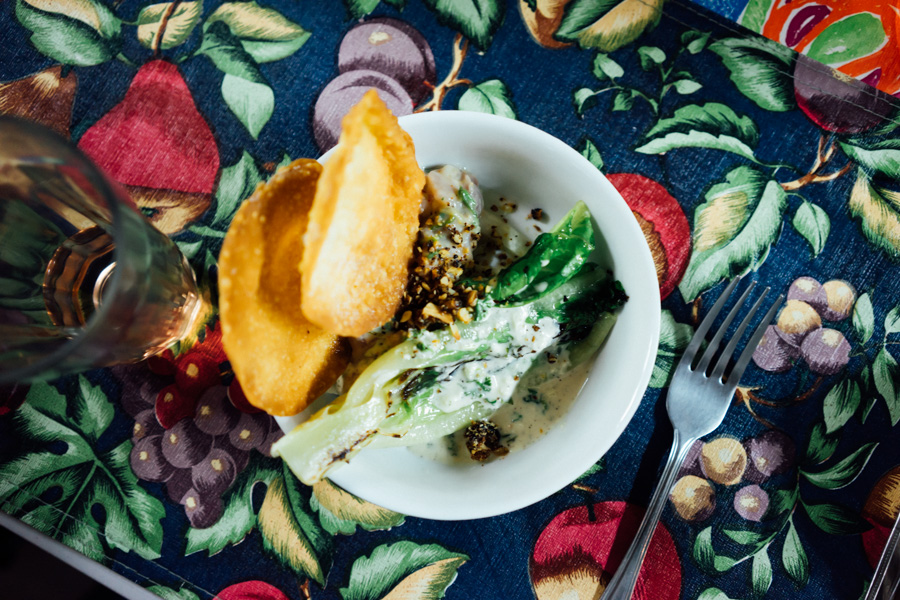

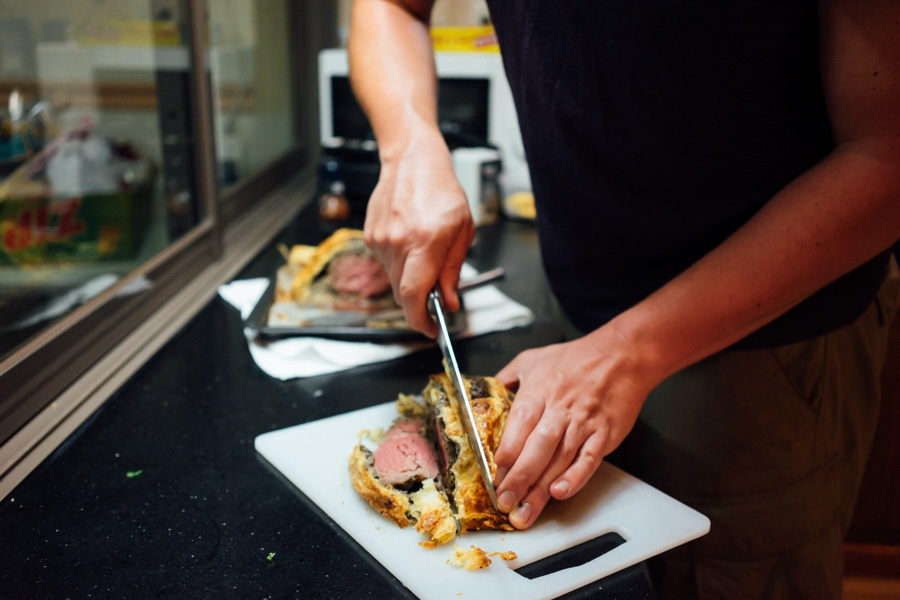

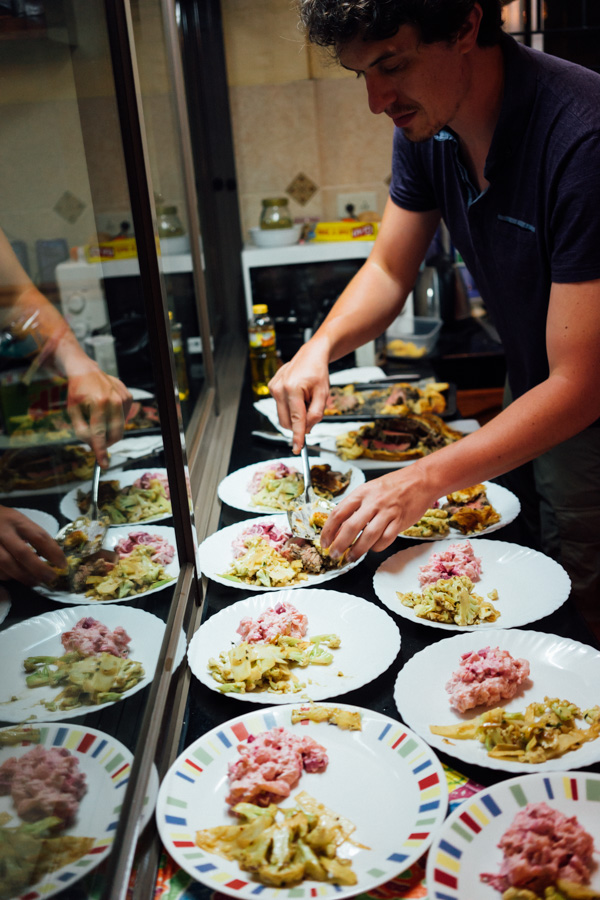

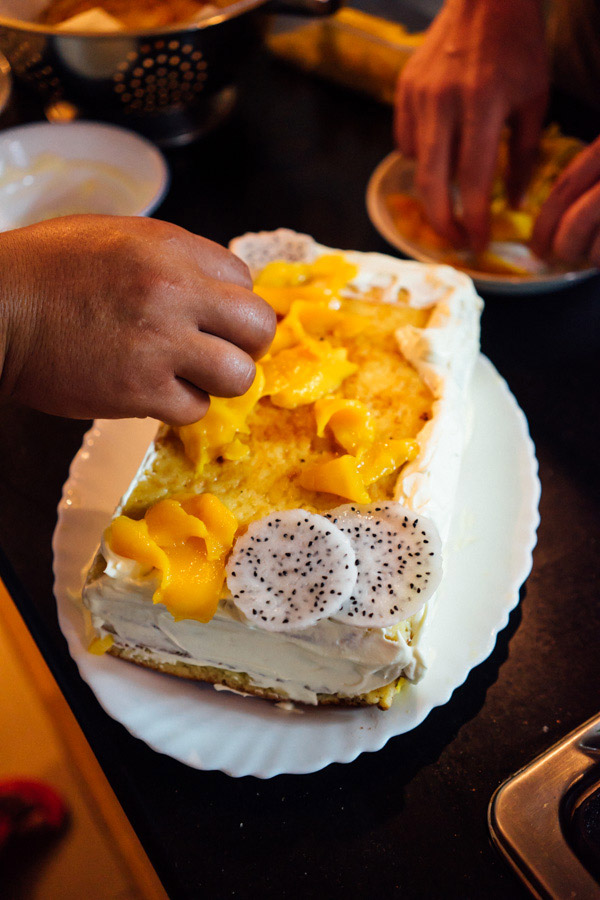
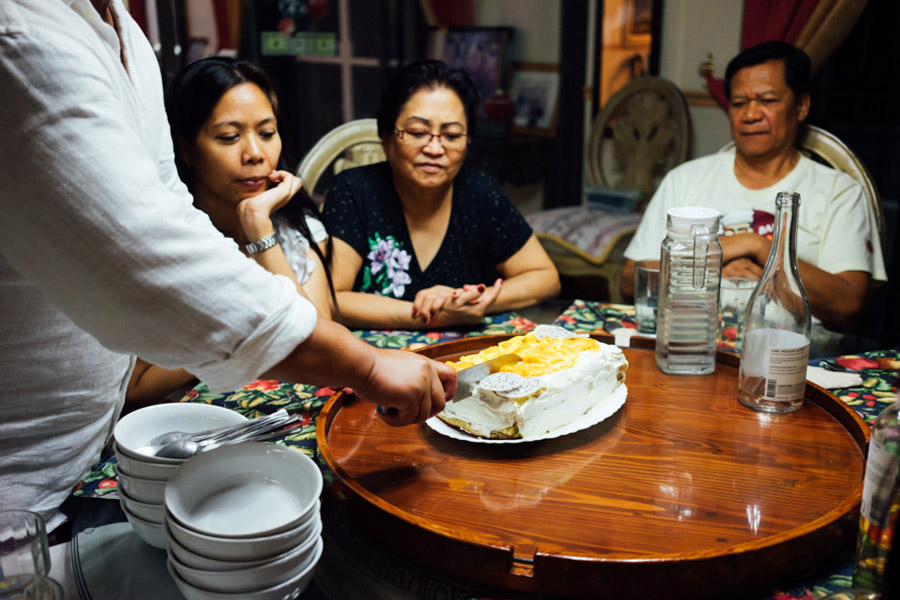
Before we take off to Indonesia, we spend a few days in Manila with a familiar face, our best friend Joe. We stay at his parents’ house, in the hospitality of his Mom & Dad in Southwoods City, outside of Metro Manila. This is another expat town, full of CPK, Denny’s and Coffee Bean. We roam through their equivalent of Whole Foods to find strawberries imported from California. Sunscreen is unbearably expensive here, but I guess those who need it will pay for it (like me). We cook one last DemiPeche together before leaving the Philippines.
As I reflect back on our trip in the Philippines, I keep thinking of a country somewhat in conflict with itself. It is a third-world country, according to the official definition. I can’t really argue against it considering the poverty and lack of infrastructure we witnessed. But as we drove the unpaved road and swerved around chickens, we also saw the people on their smartphone of choice, with fast LTE powering Facebook and the likes. They’re skipping decades of urban development in favor of integrating the latest technologies. The will to keep tradition is strong and seen in all families, but so is the constant American influence and exodus to other countries.The national language, Tagalog, is not taught in middle or high school -- everything is in English, to prepare the young generation to embrace Western (and especially American) culture. You can imagine what will happen of the local dialects. The careers of choice are still nursing and engineering, for those who will migrate later to the U.S., or work in the call centers of Metro Manila or Baguio. As many developing countries, the Philippines is a victim of large corruption; it’s also home to terrorist groups supporters of Al Qaeda, such as in the island of Mindanao, where a beheading of a Canadian tourist happened just a couple weeks before we arrived. But the Philippines population wants a change. It just elected a new president, Duterte, son of a dictator, in favor of re-establishing Martial law. He says he wants to clean up the country of its corruption and shoot to kill anyone on the wanted list. Meanwhile, they also elected a vice president from a more moderate party (they elect president and vice separately), and their first transgender senator. Cultures clash in the Philippines.
But of my memories of the Philippines, the strongest one will be how blessed I felt amongst its people. The hospitality of the people we met will not be equaled anywhere else, maybe so because we spent time with her family. We were able to live the real Philippines, and I don’t think we’ll be so lucky in any other place. I’ll forever remember the stories of Dad F and Uncle F on the road, Dad F’s house in San Narciso and Auntie Jean’s house in Santa Catalina, the numerous cousins visiting us and gracing us with their food and smiles, and of course, the goat. What the Philippines lacks in infrastructure, economy or even art, it fills with the heart and compassion of its people. They take religion at heart and with it, giving back to anyone they encounter. Whether it be Madelene’s family driving us around, or the nicest restaurant waitress we’ve ever met, the Filipinos are at heart a nation of giving, tolerance and hospitality.
And gosh, do they love to sing.
LINKS
- Palawan Province
- Busuanga
- Coron
- We stayed at Kaba Kaba.
- We dove with our gracious host Kevin, but were recommended by him two diving companies: Rocksteady and Corto Divers.
- We saw a few of the Coron Shipwrecks (albeit not as many as we wished, make sure you have the Advanced Open Water certification to see most of them).
- We went island hopping with Nice in Paradise Tours. They will take you to various islands for snorkeling, swimming and visiting beaches. Make sure you include the Kayangan Lake and the Twin Lagoon. Also noteworthy are Barracuda Lake, CYC Beach and Banana Beach.
- On our wish list for next time: Tao Philippines proposes a multi-day trip between El Nido and Coron, camping and living life on a boat. They were recommended by a few people there, but we did not have the time nor budget. Otherwise a trip from Coron to El Nido or Puerto Princesa will have to be via plane or a 10-12 hour overnight ferry (weekly or biweekly only). Bangka trips (small local boats) are universally not recommended.




